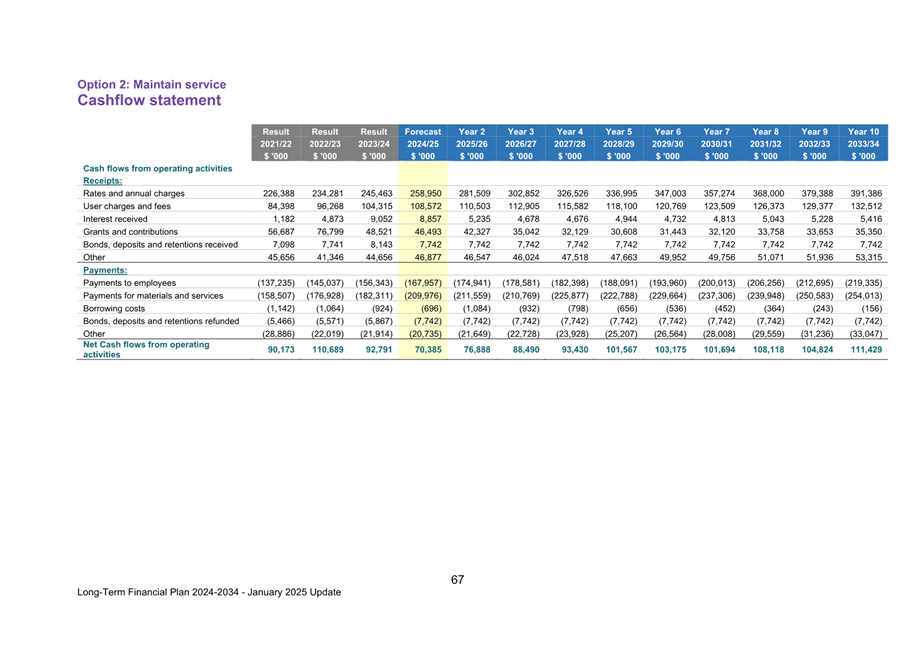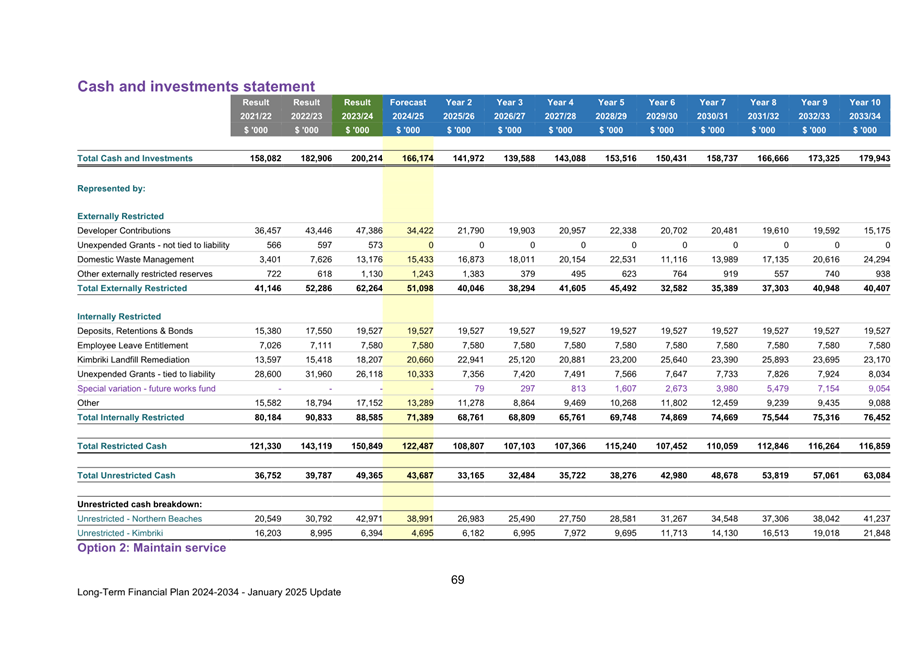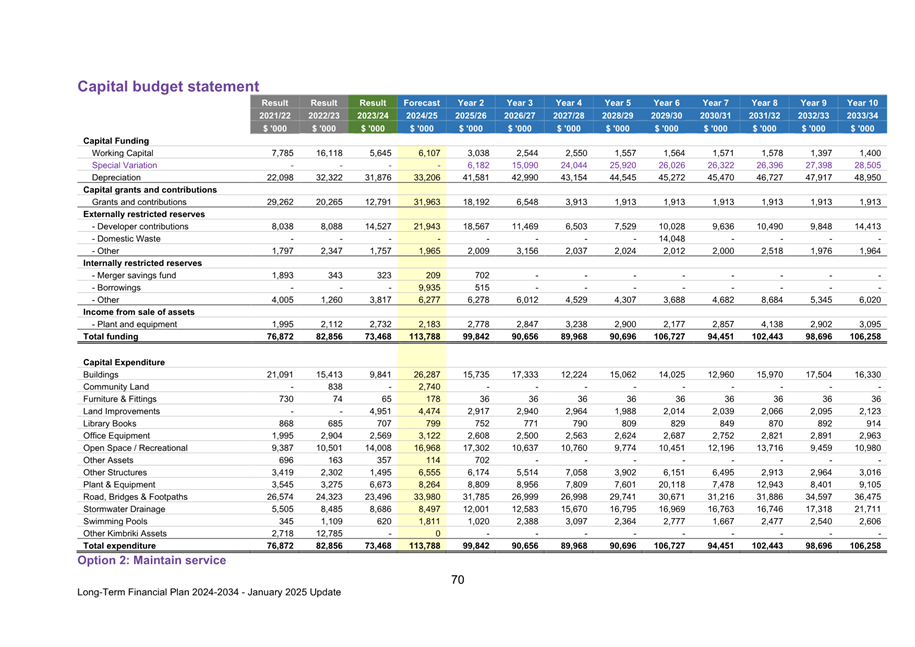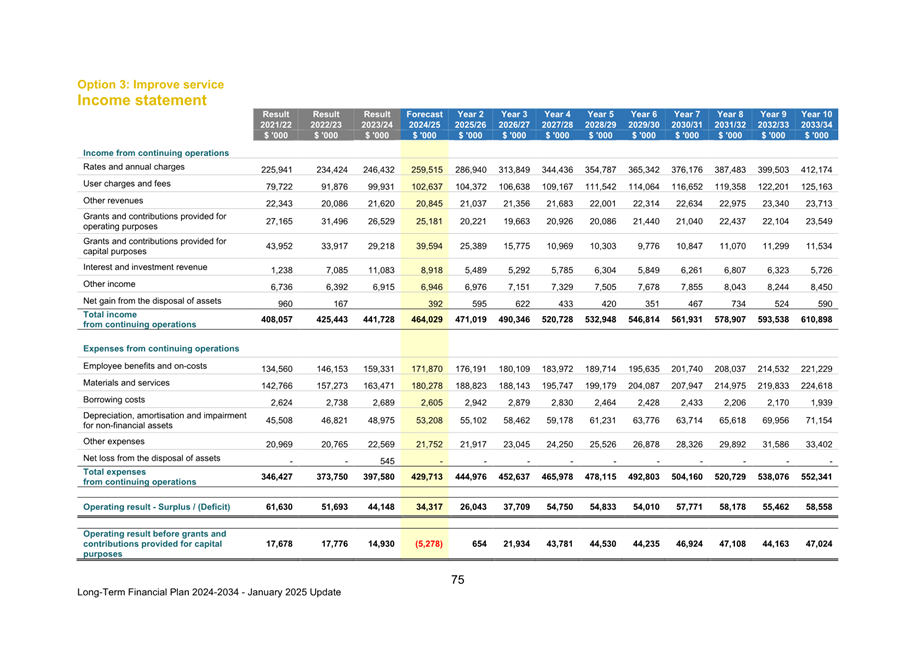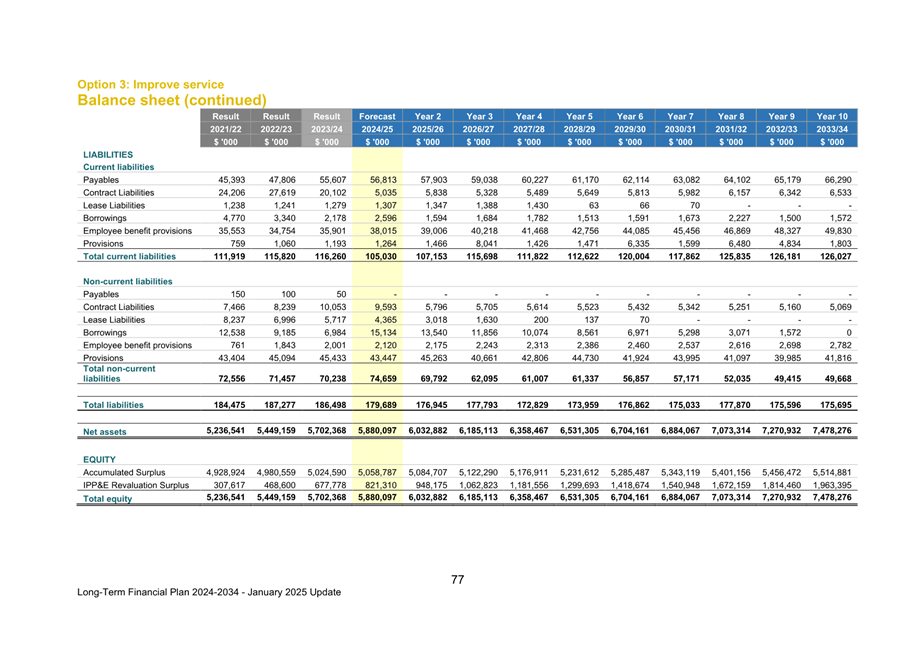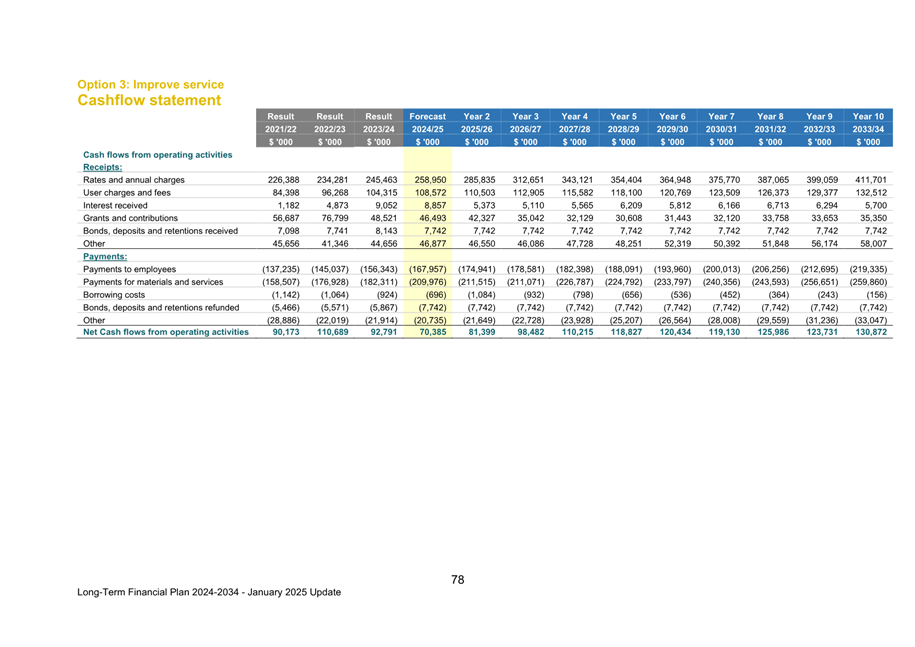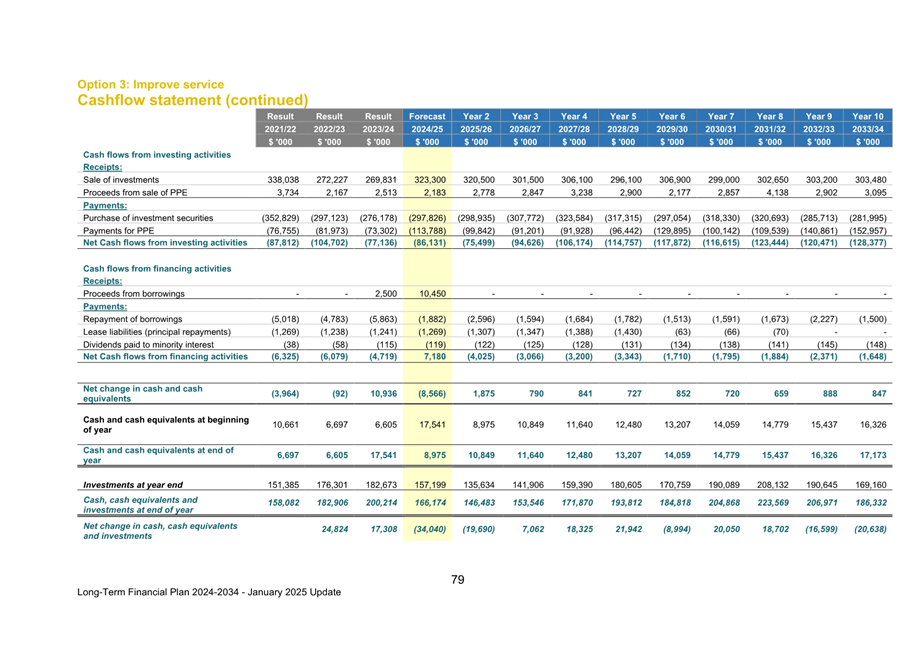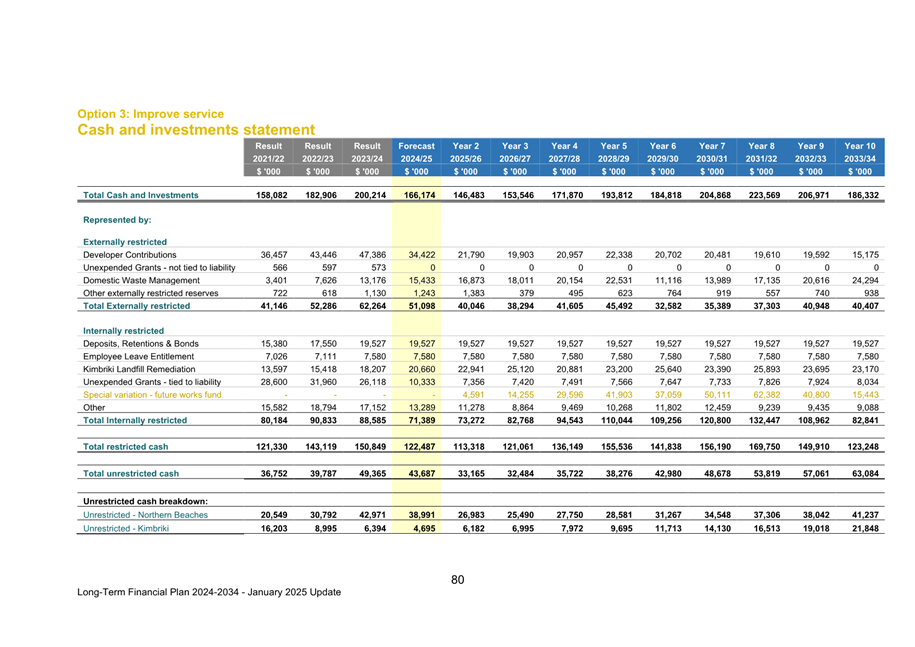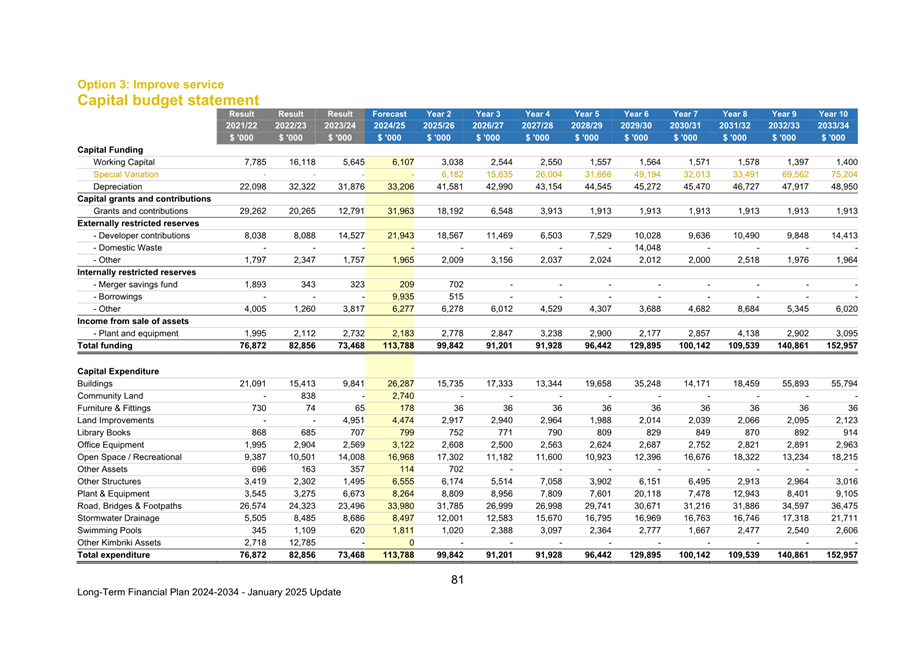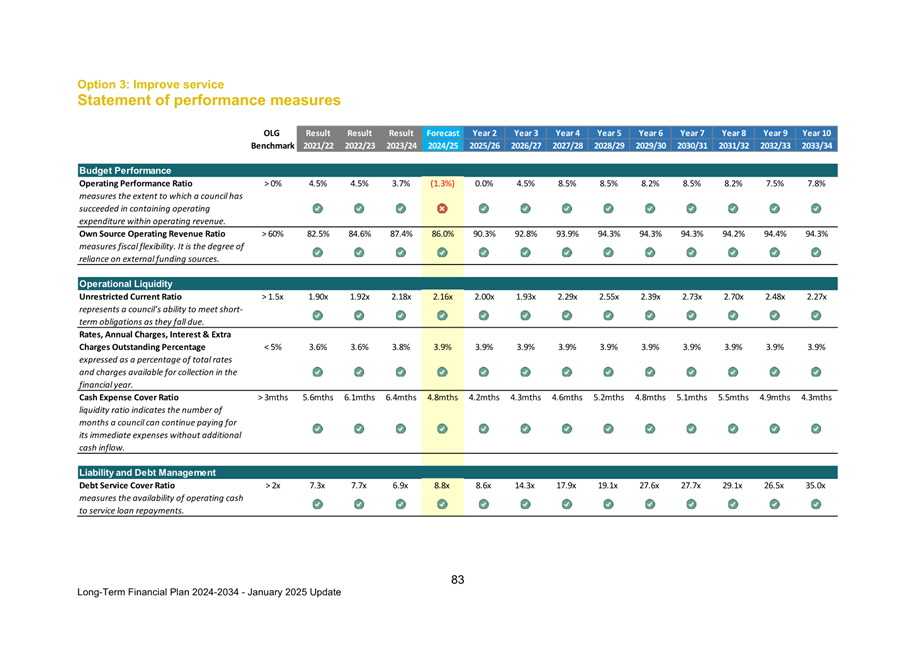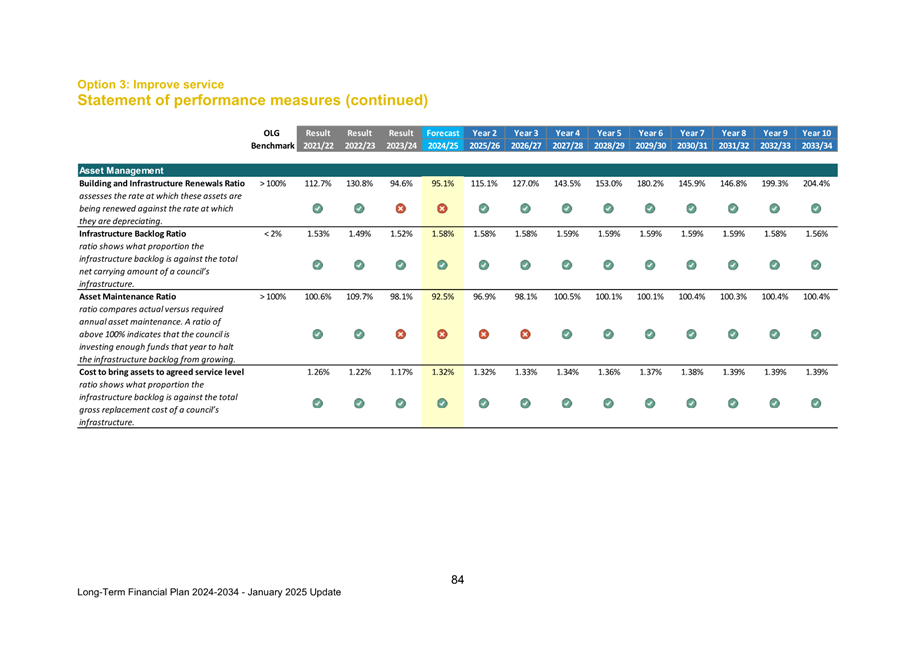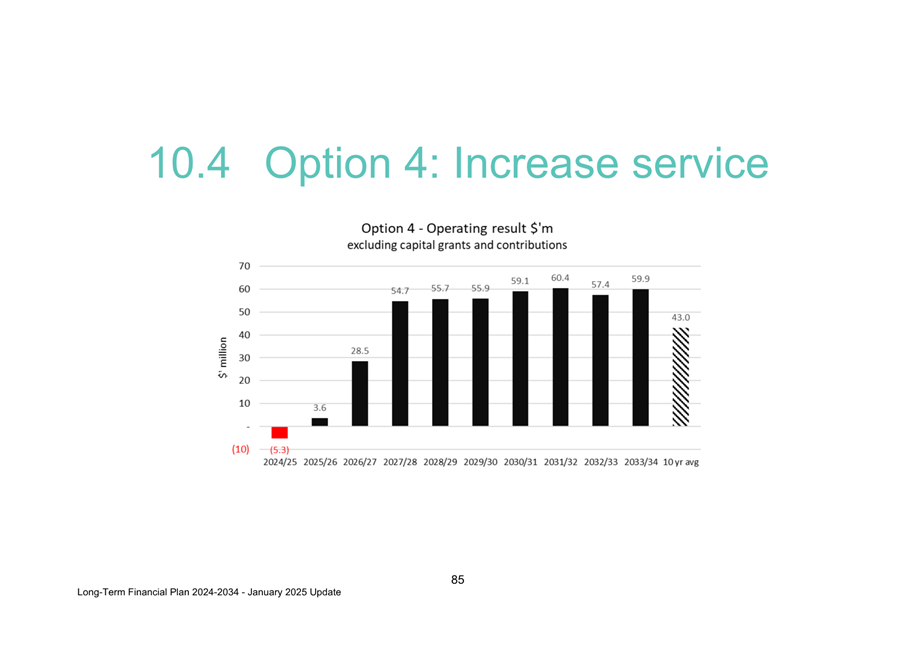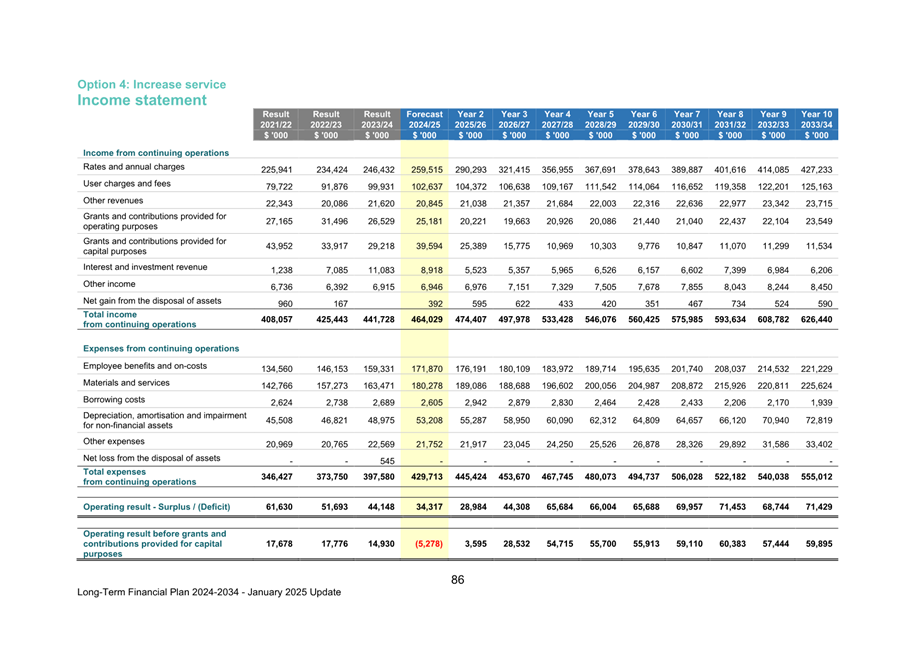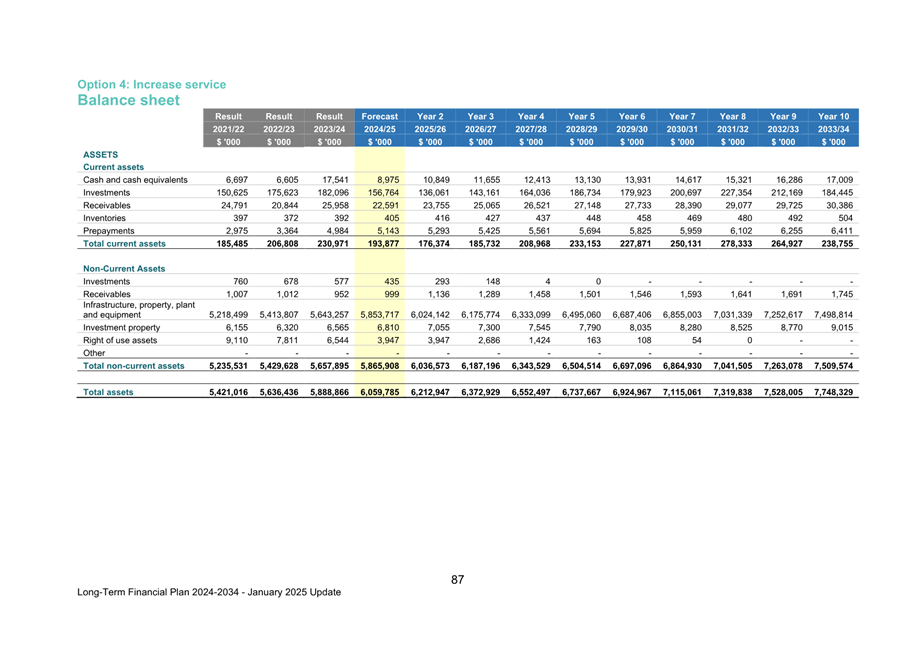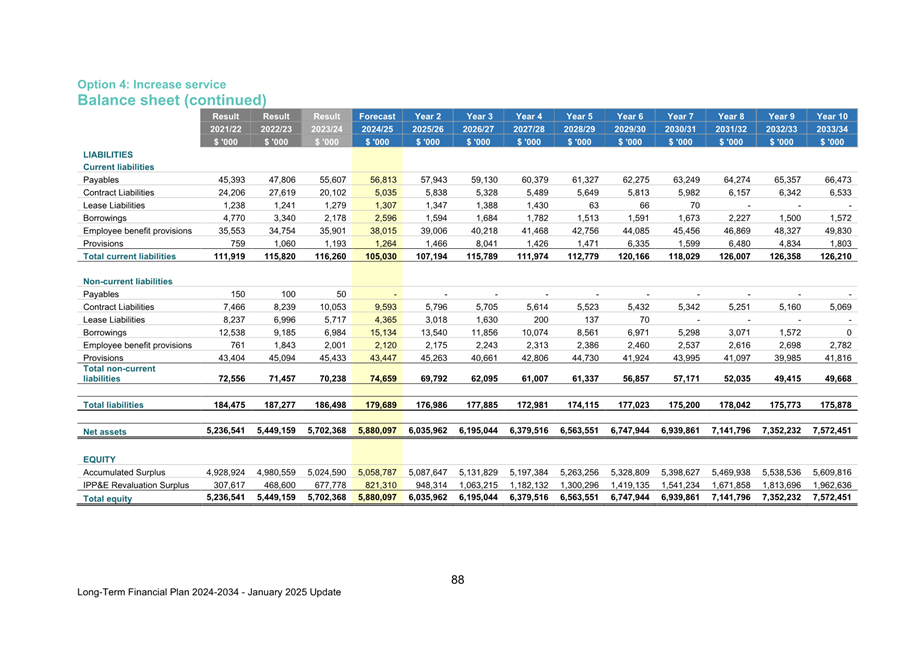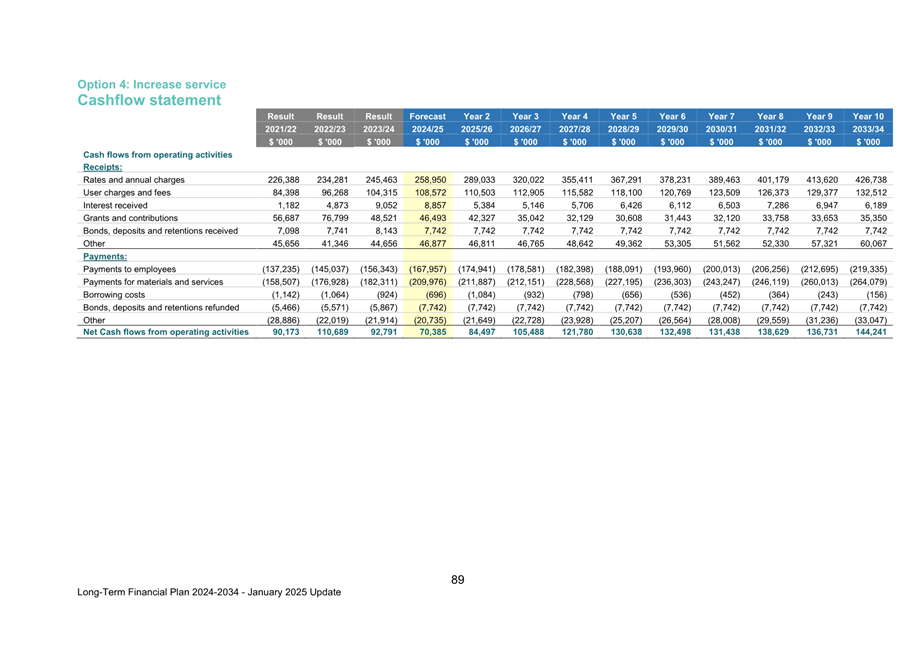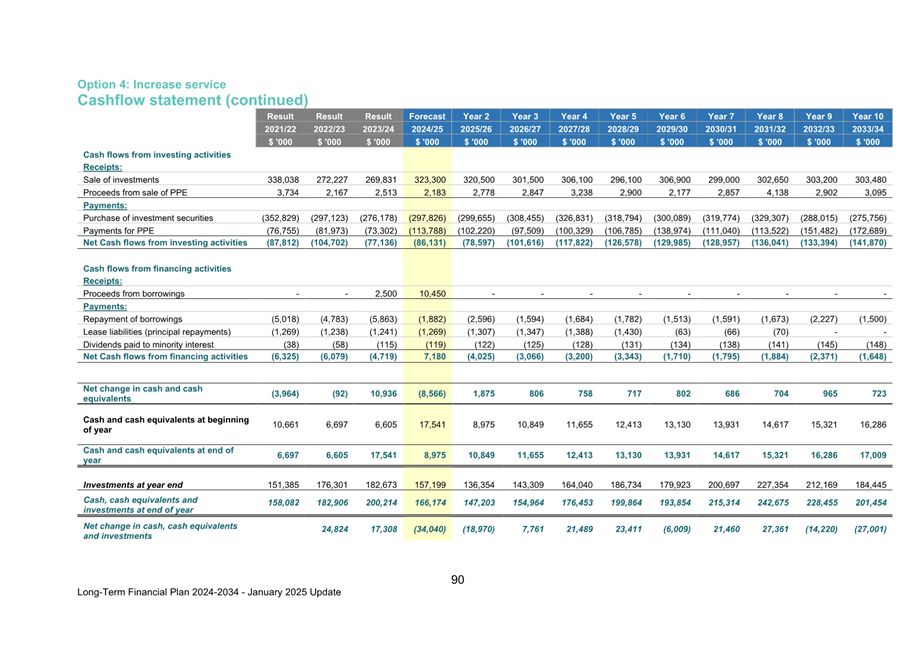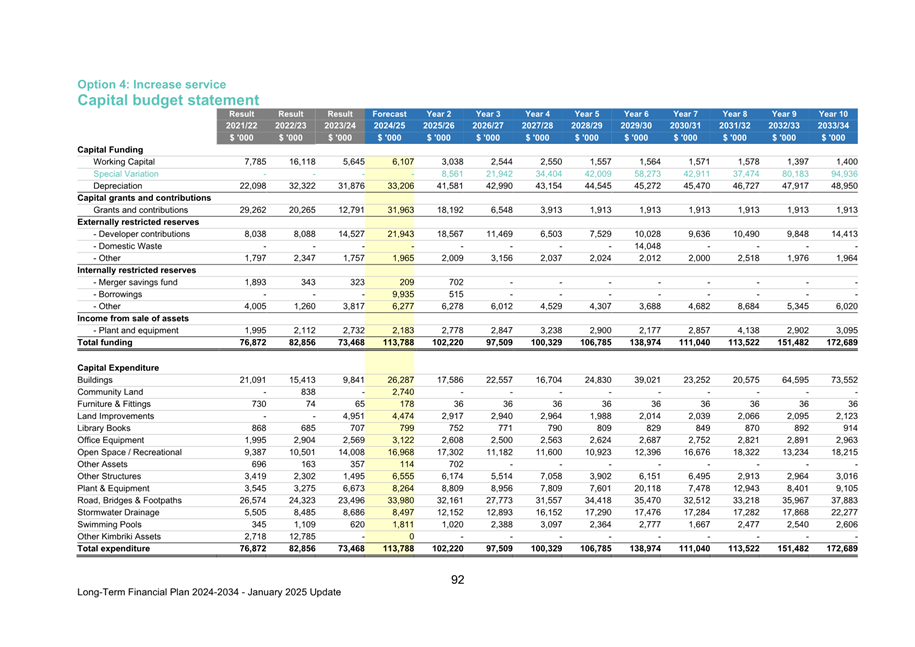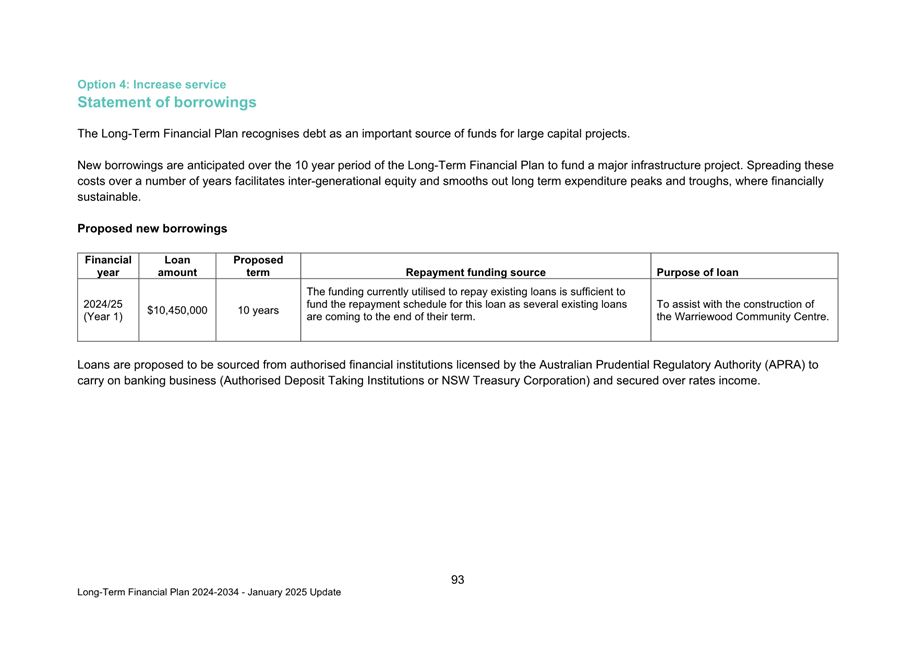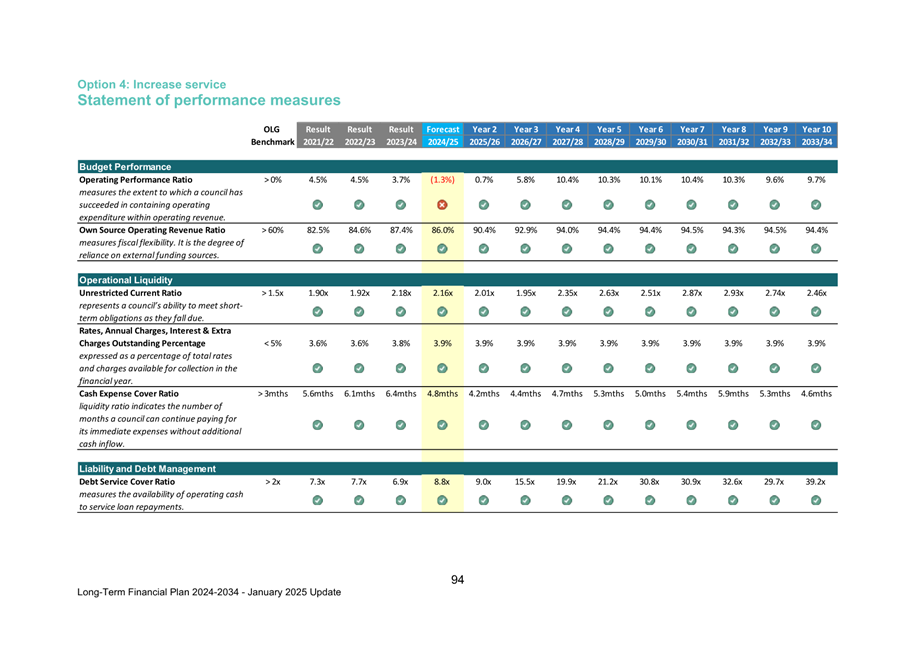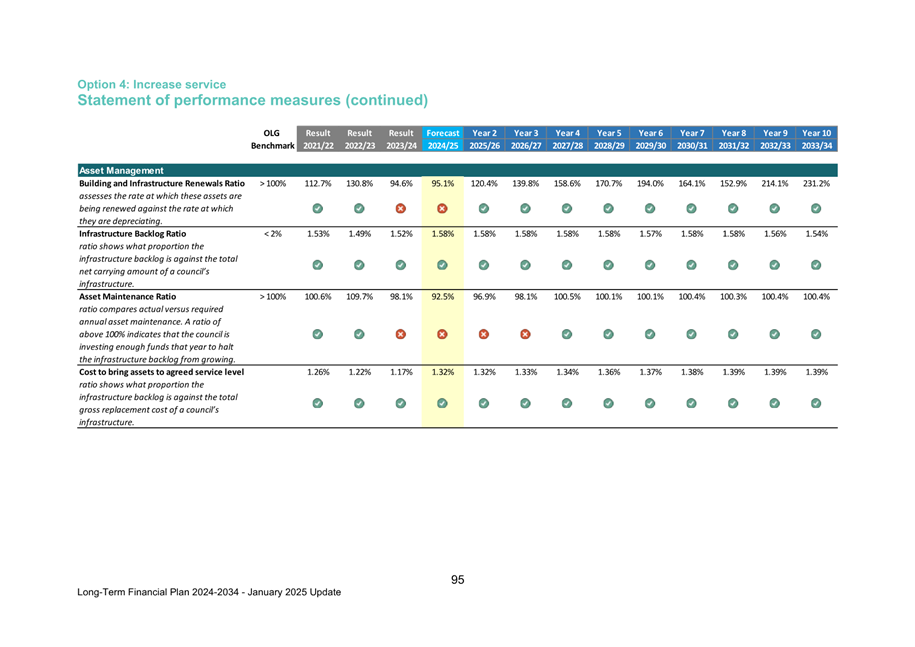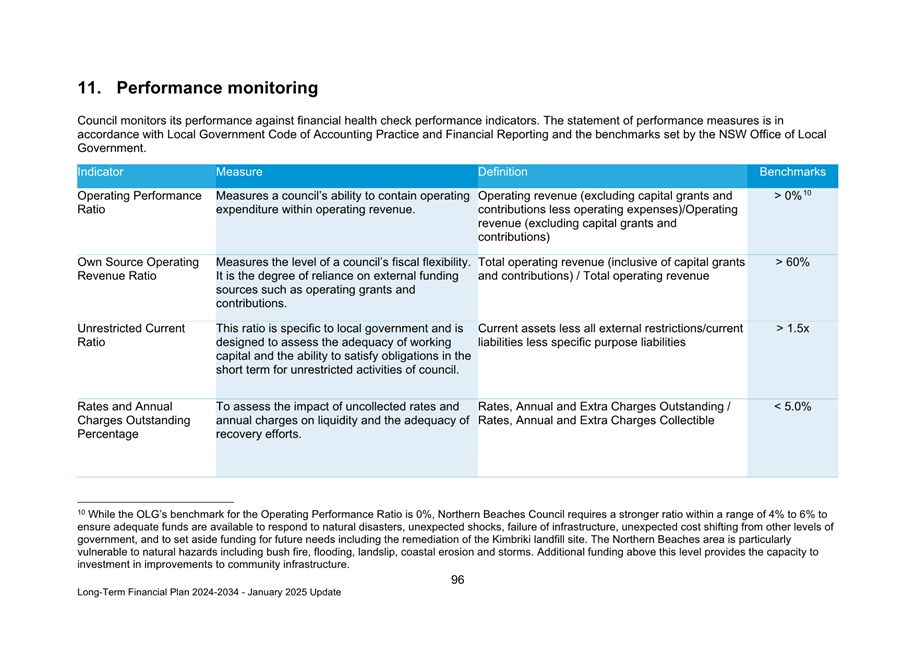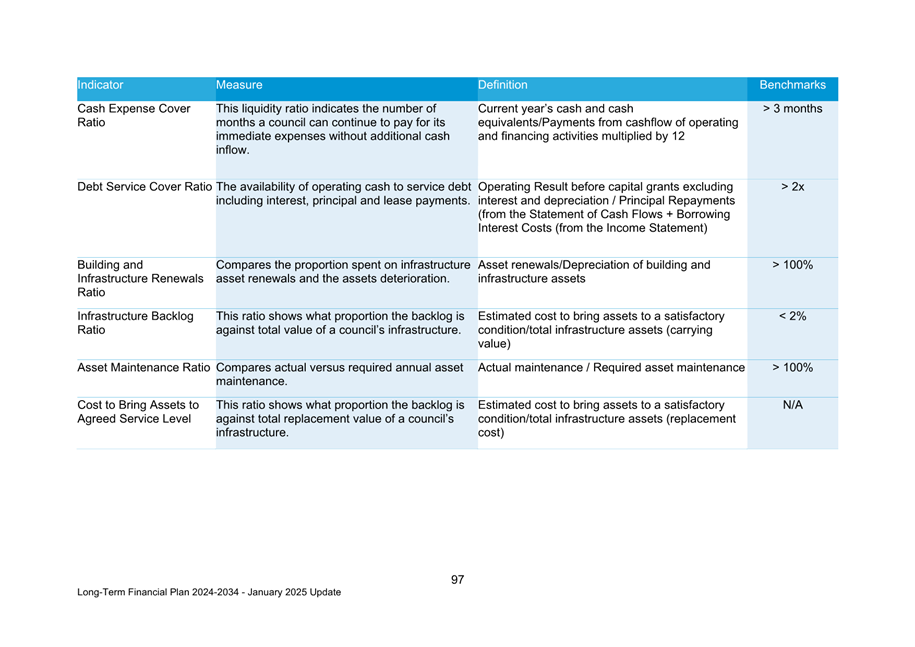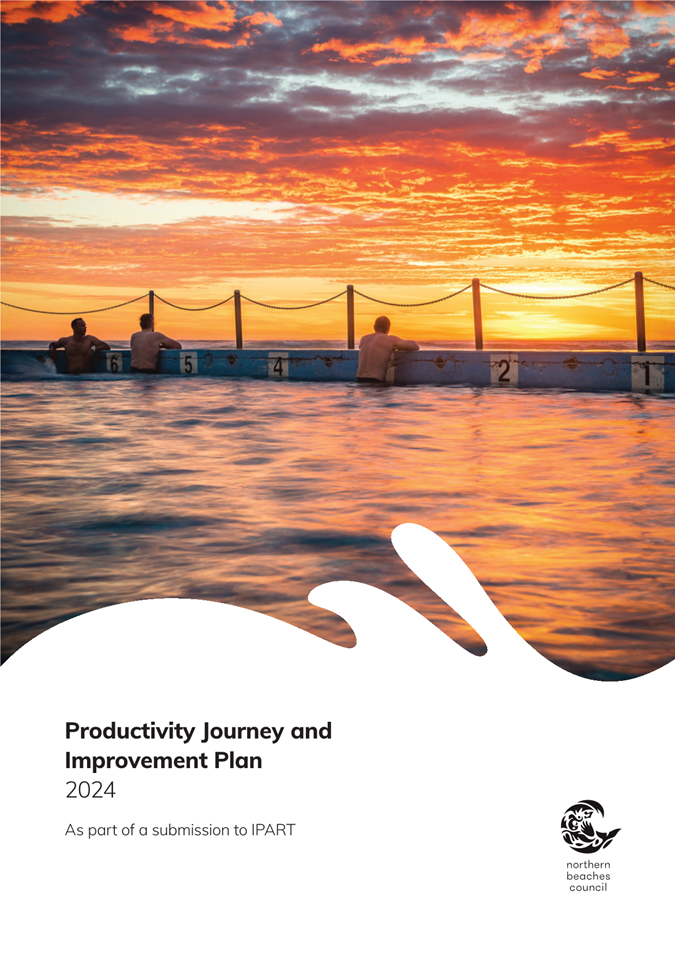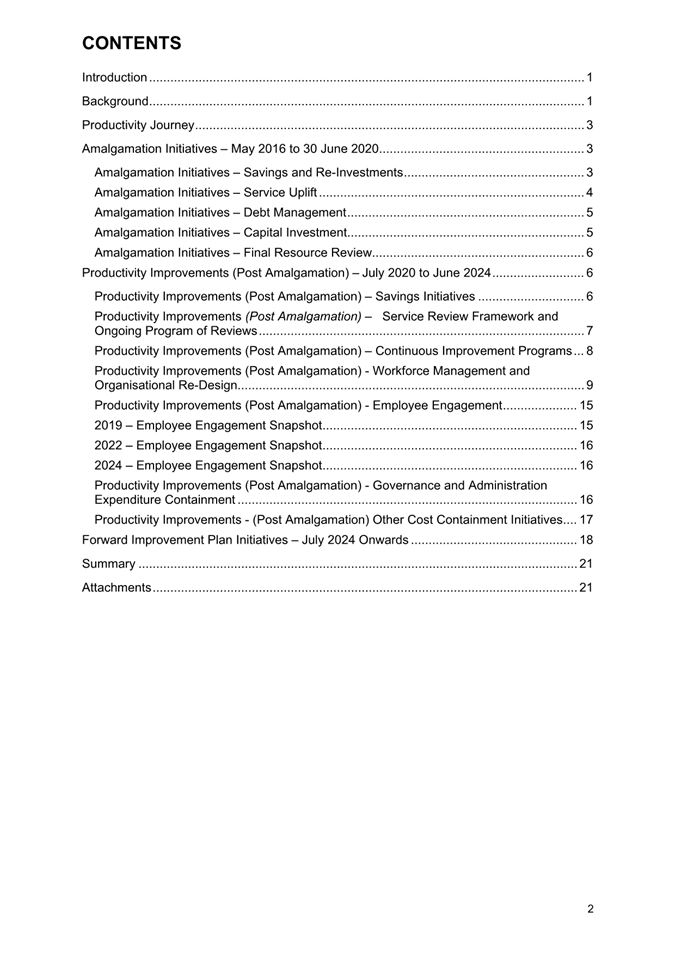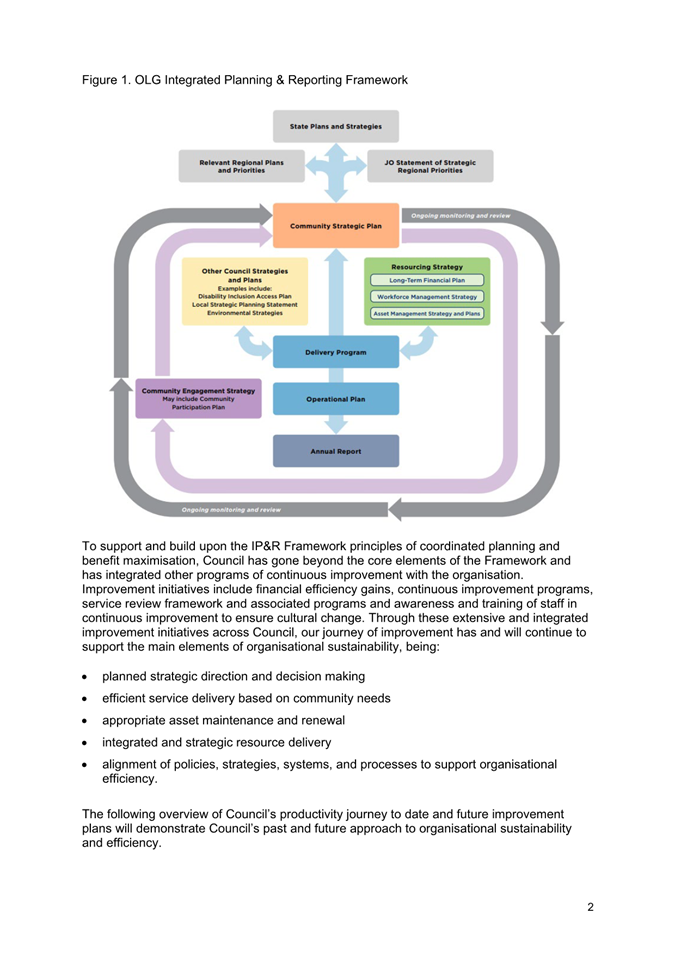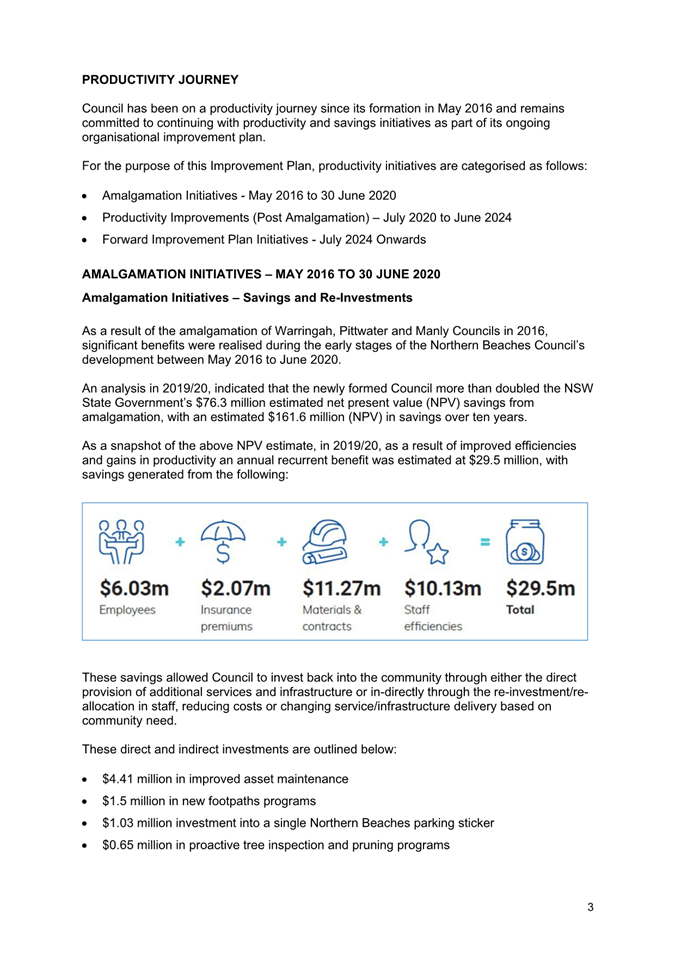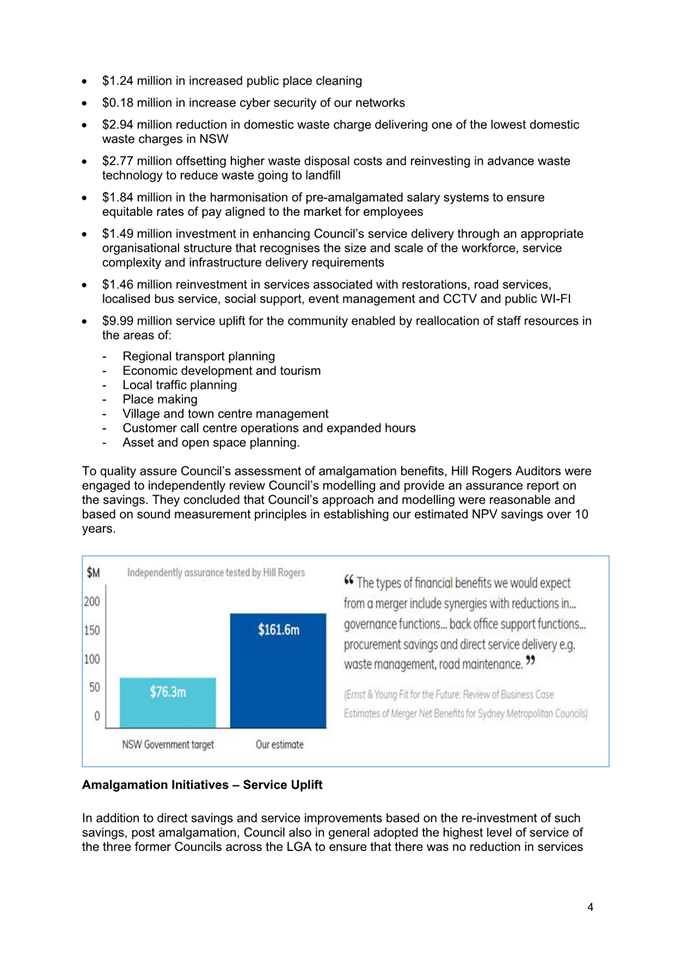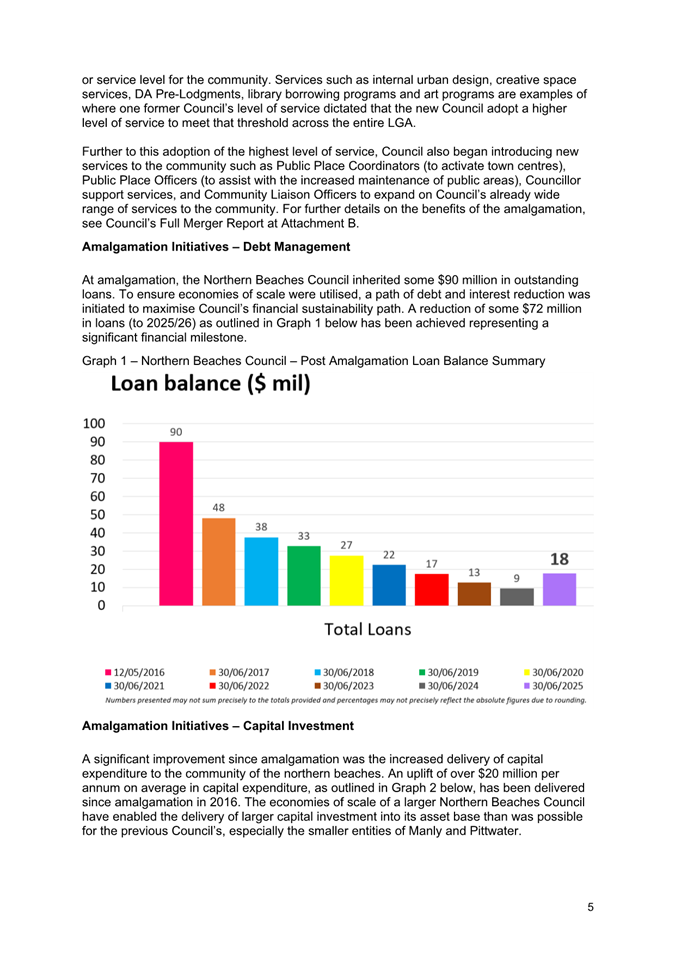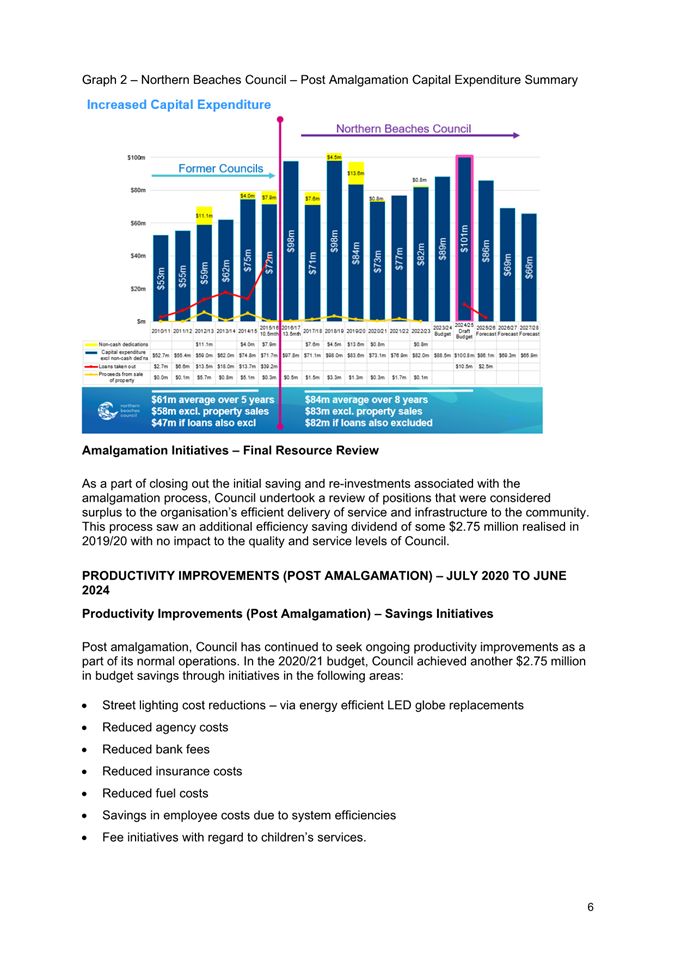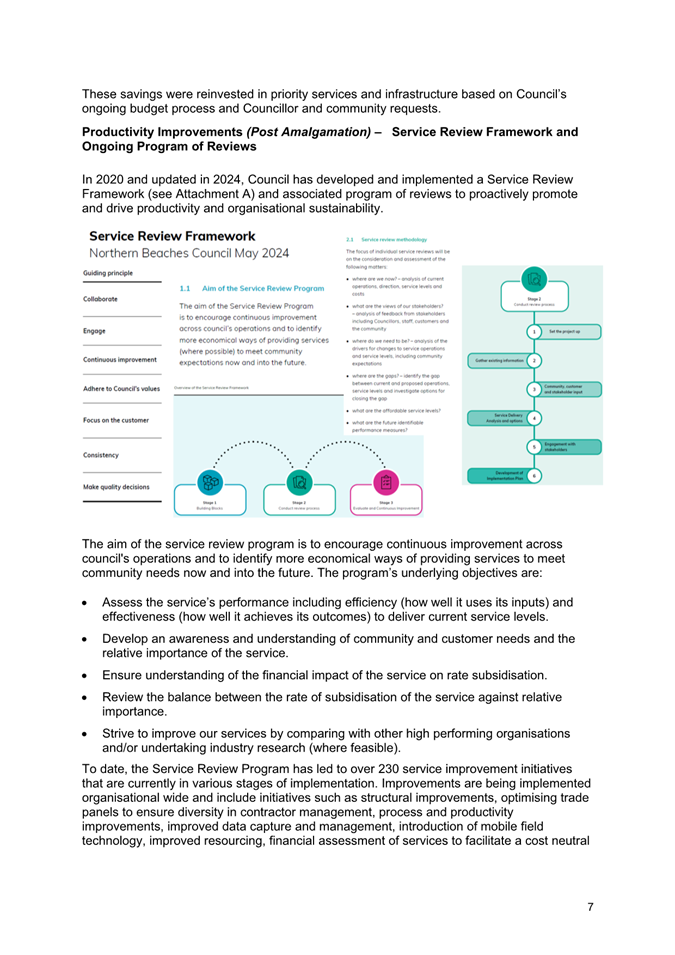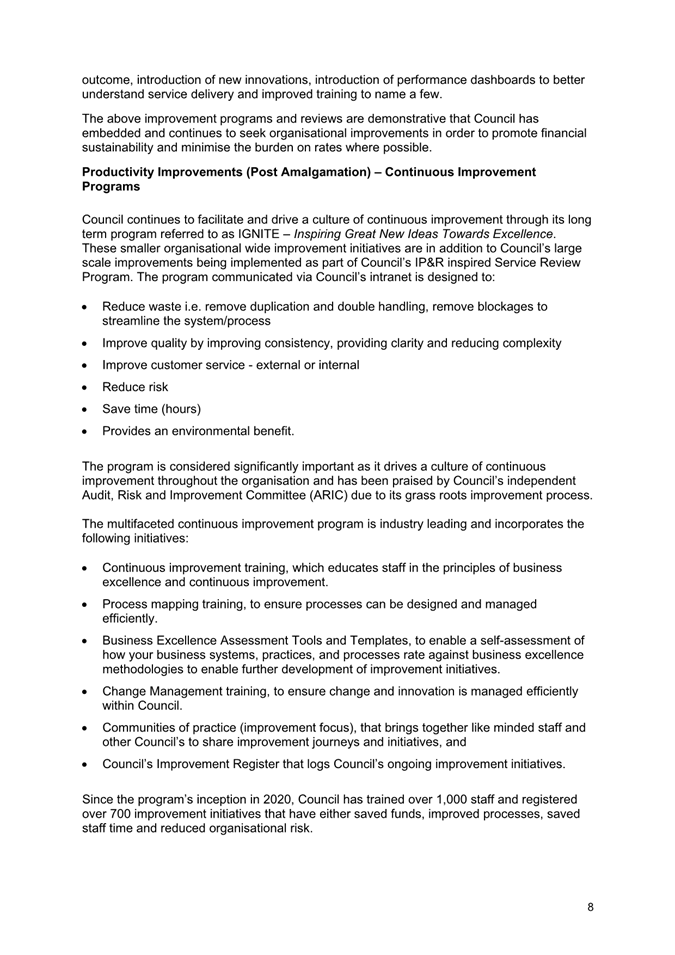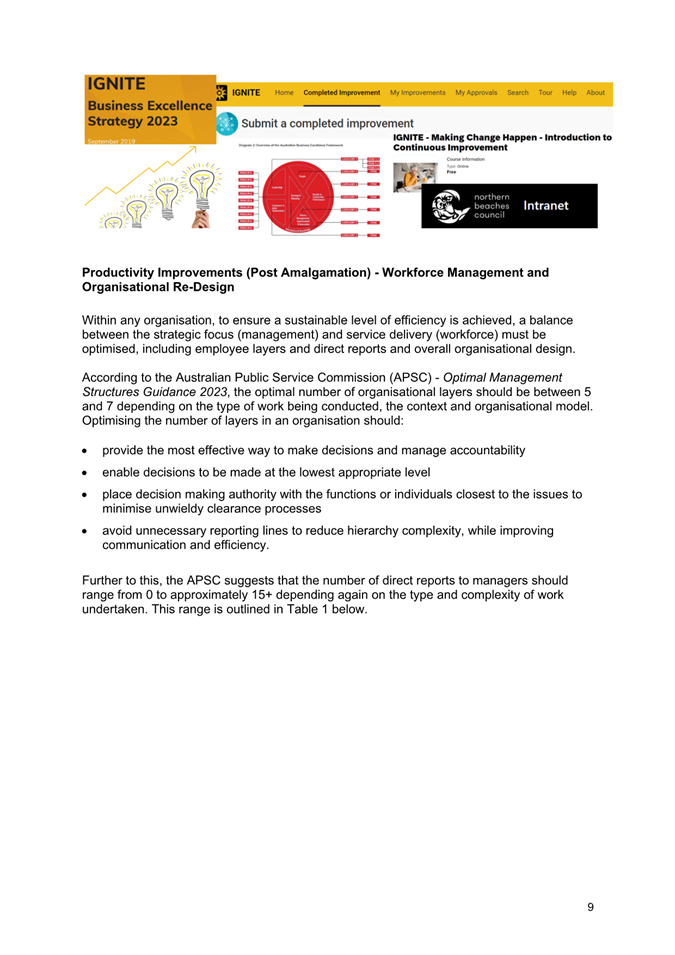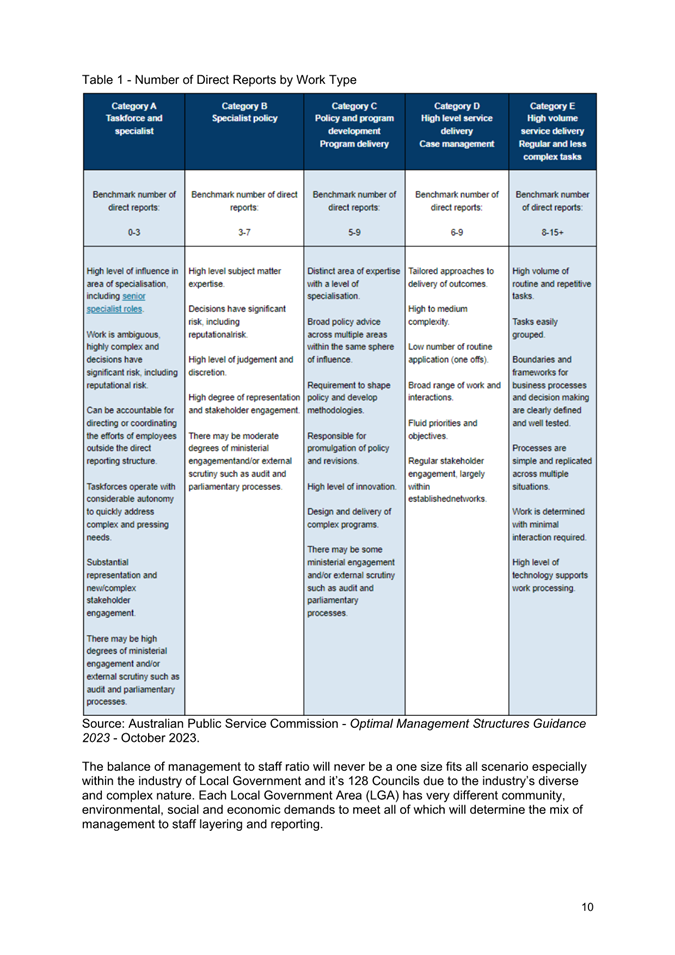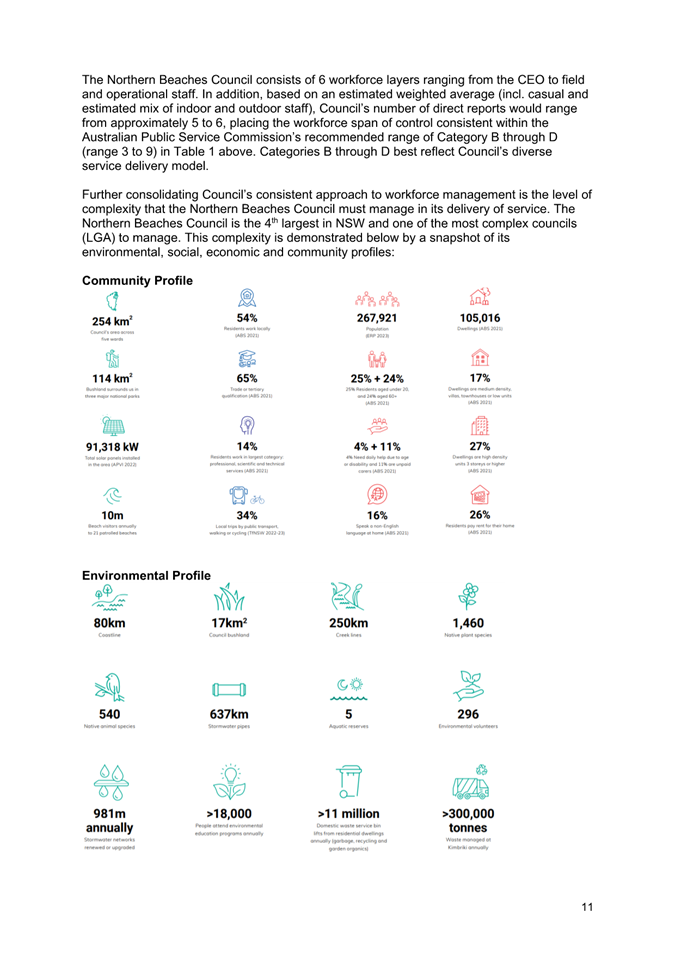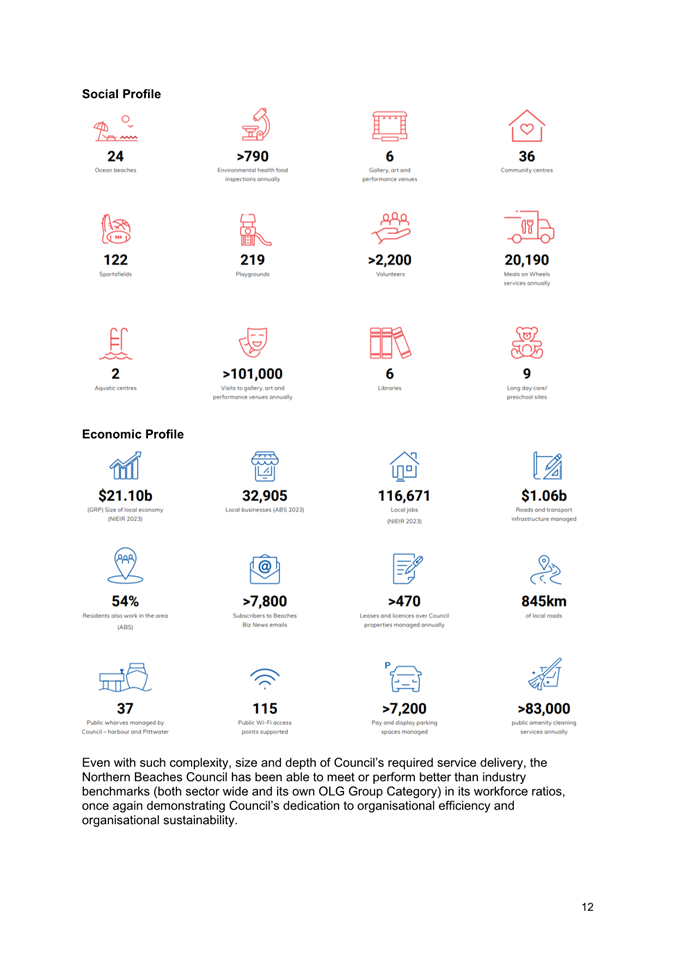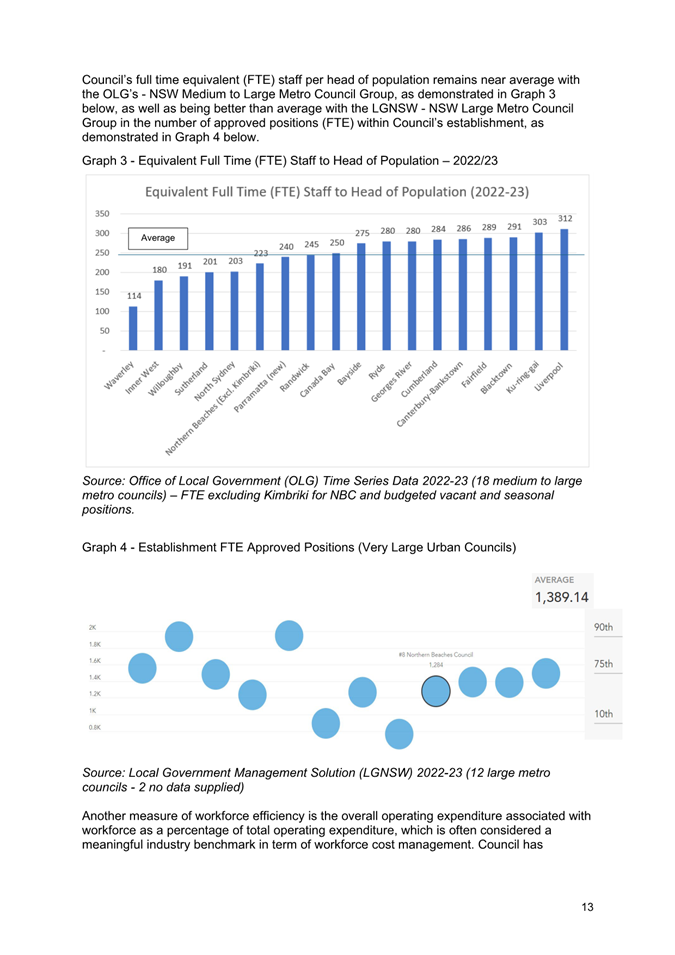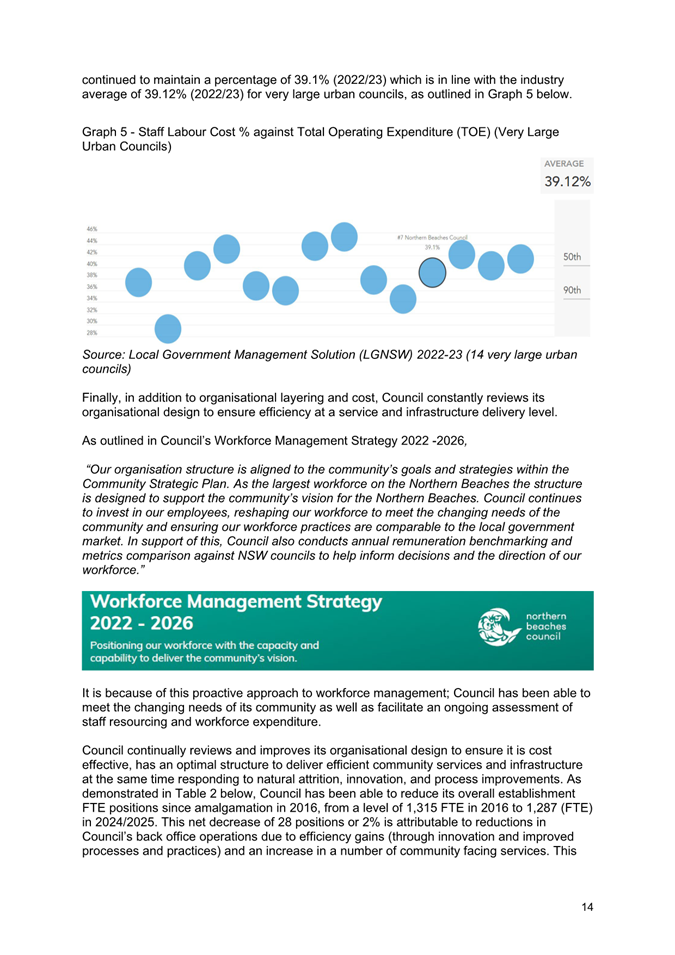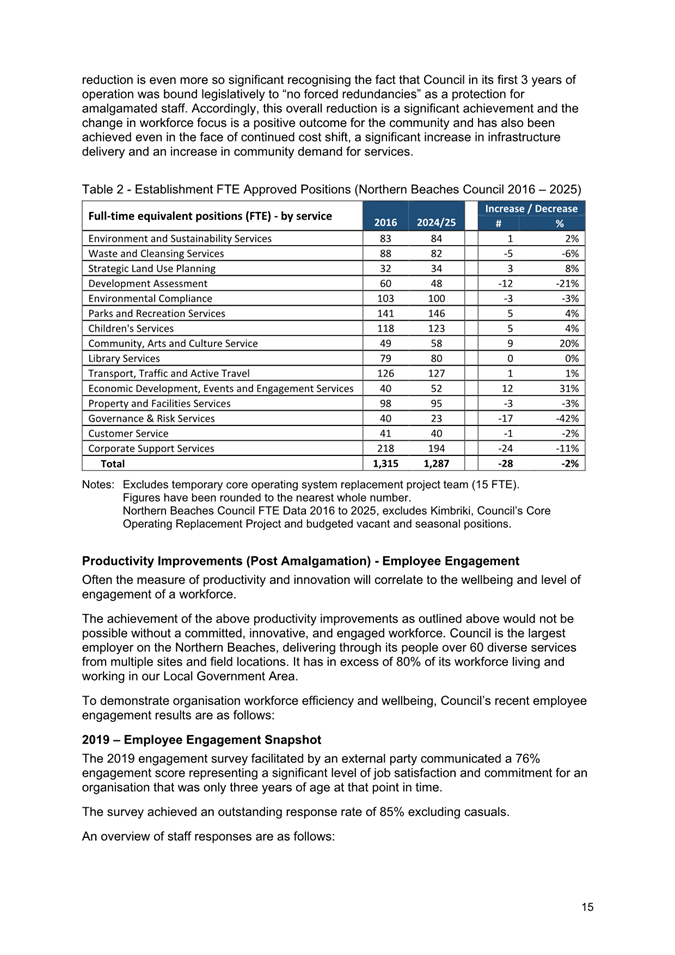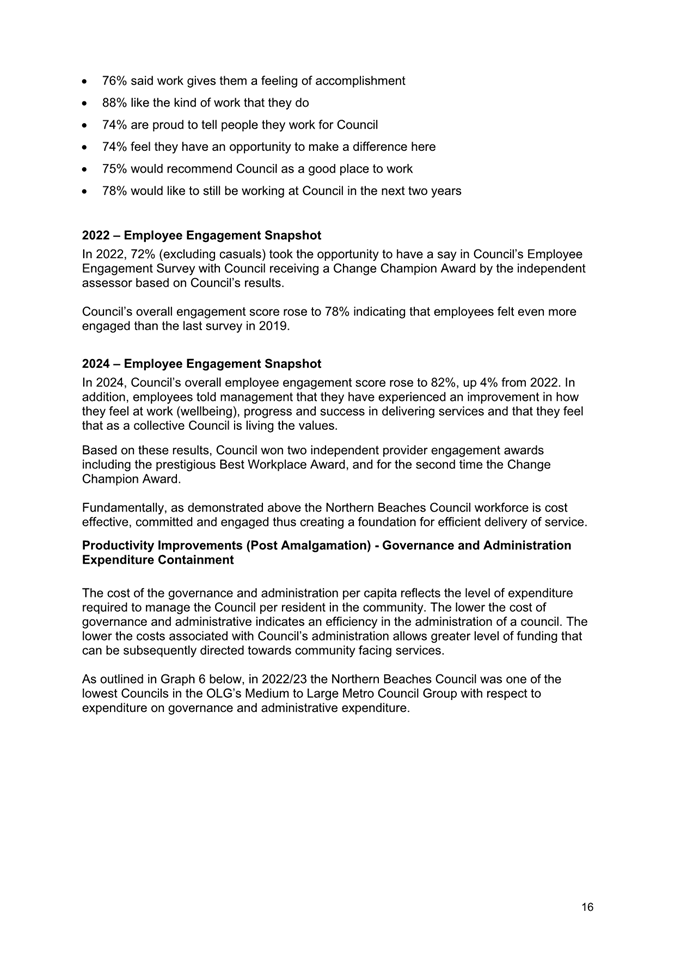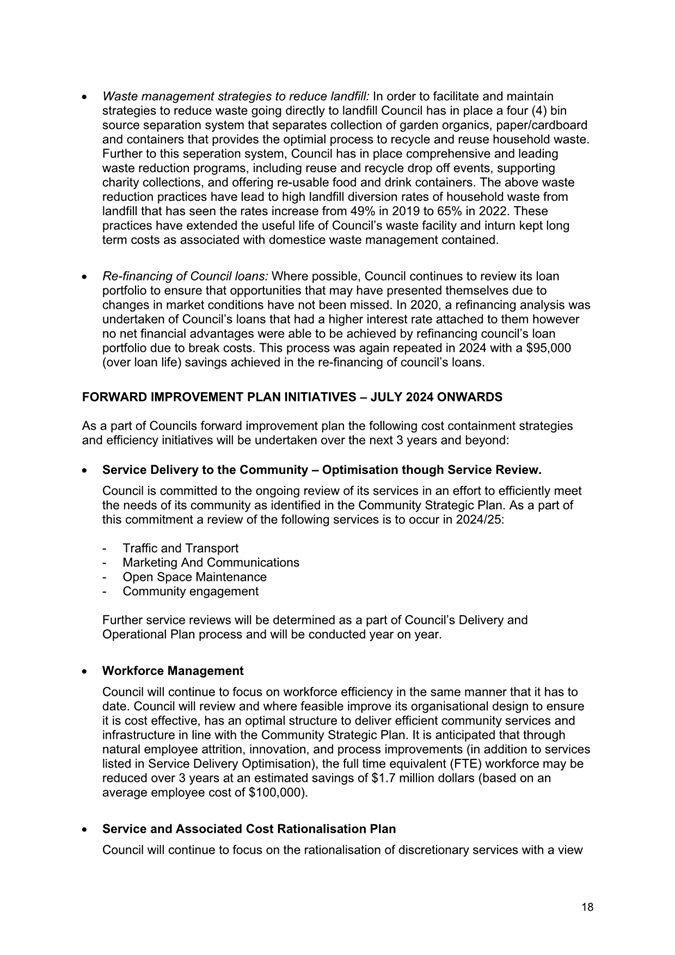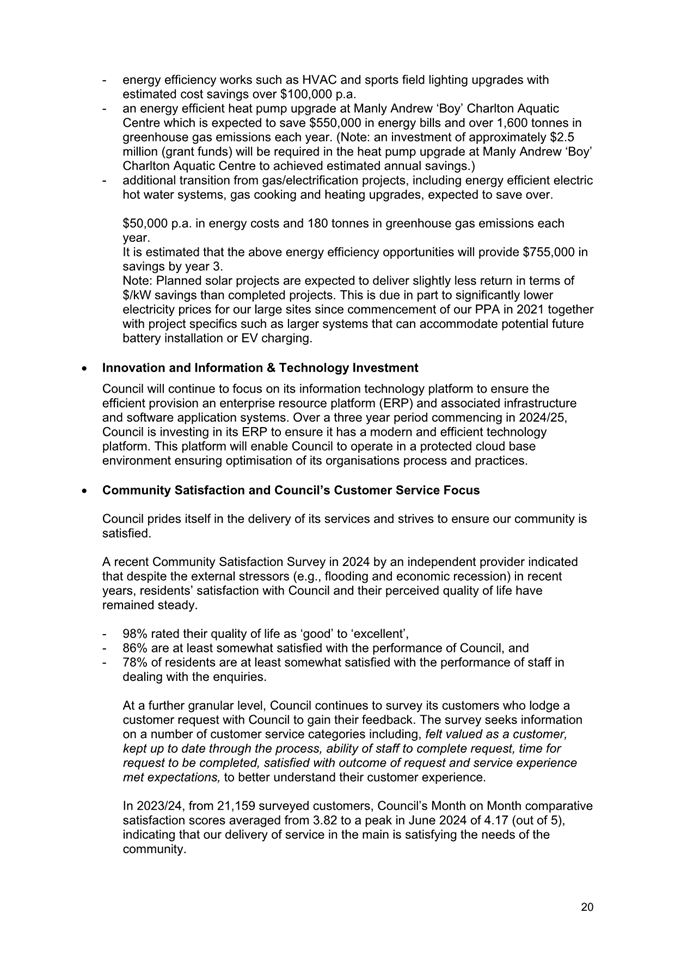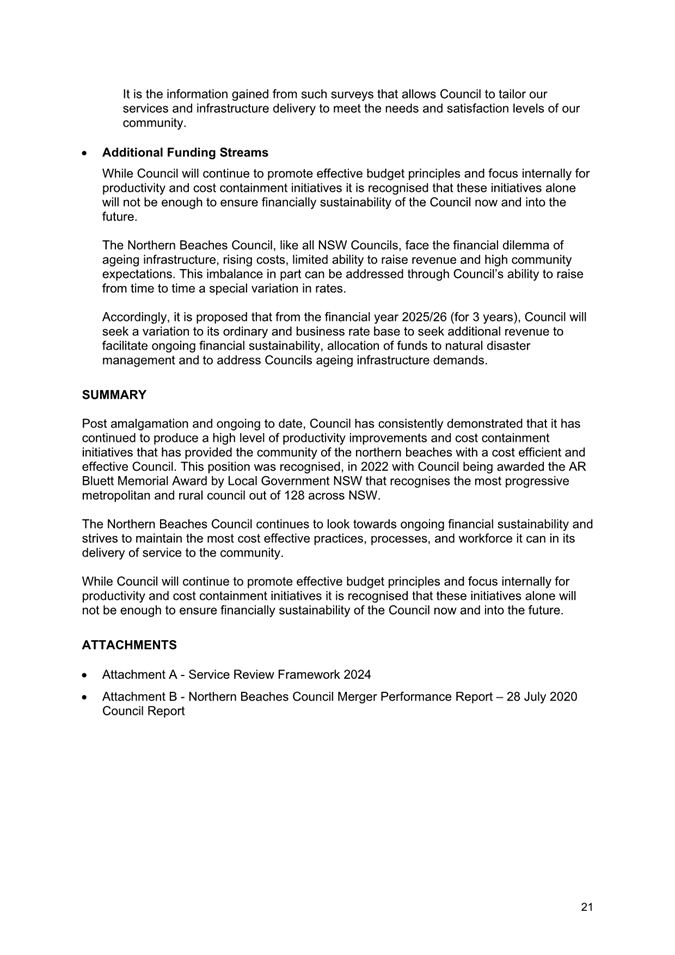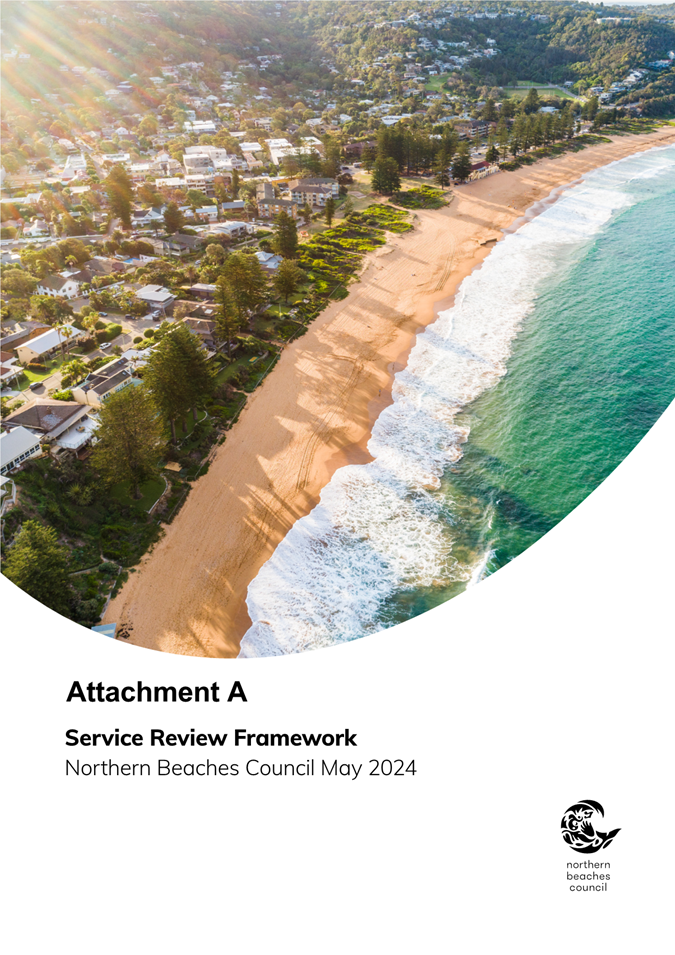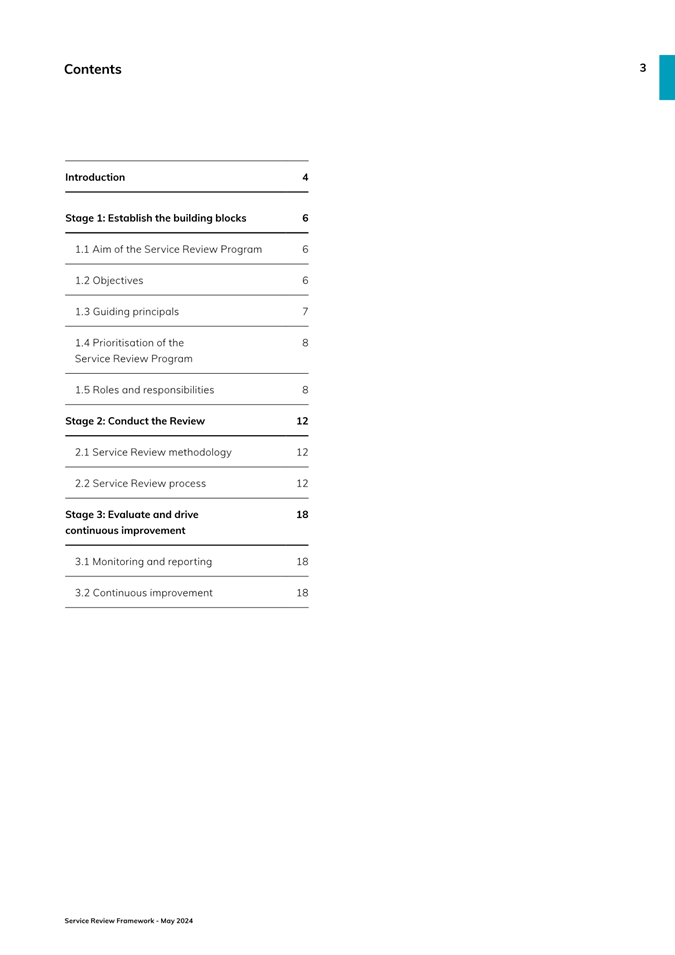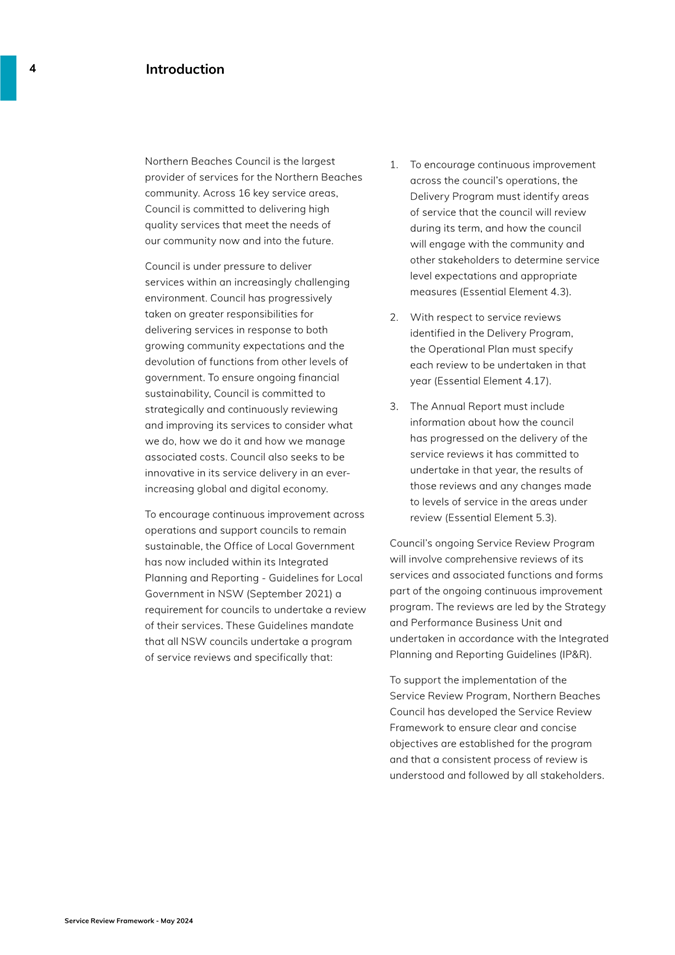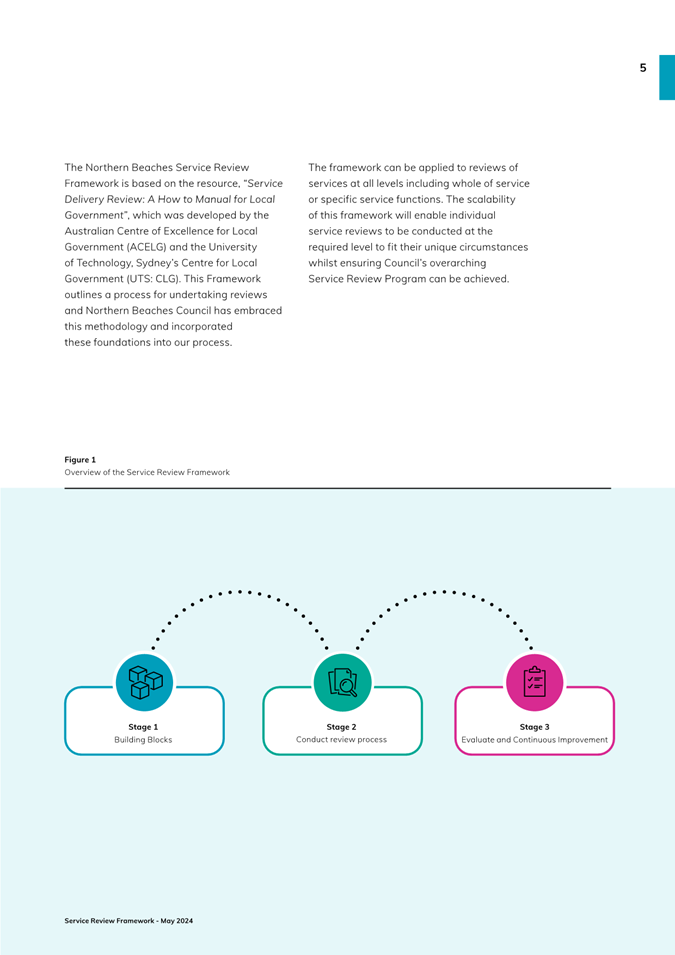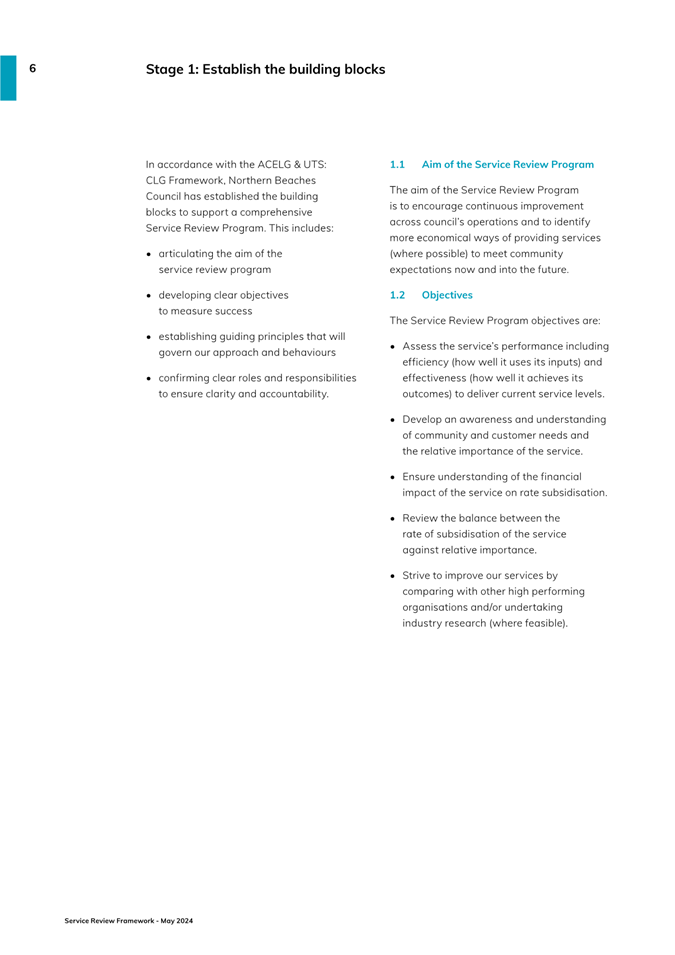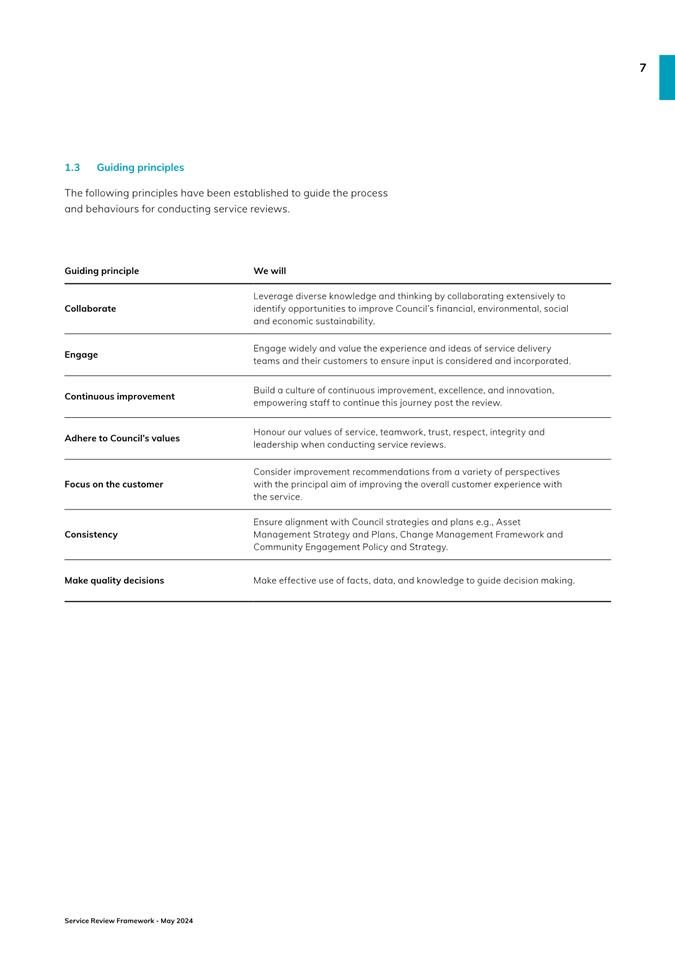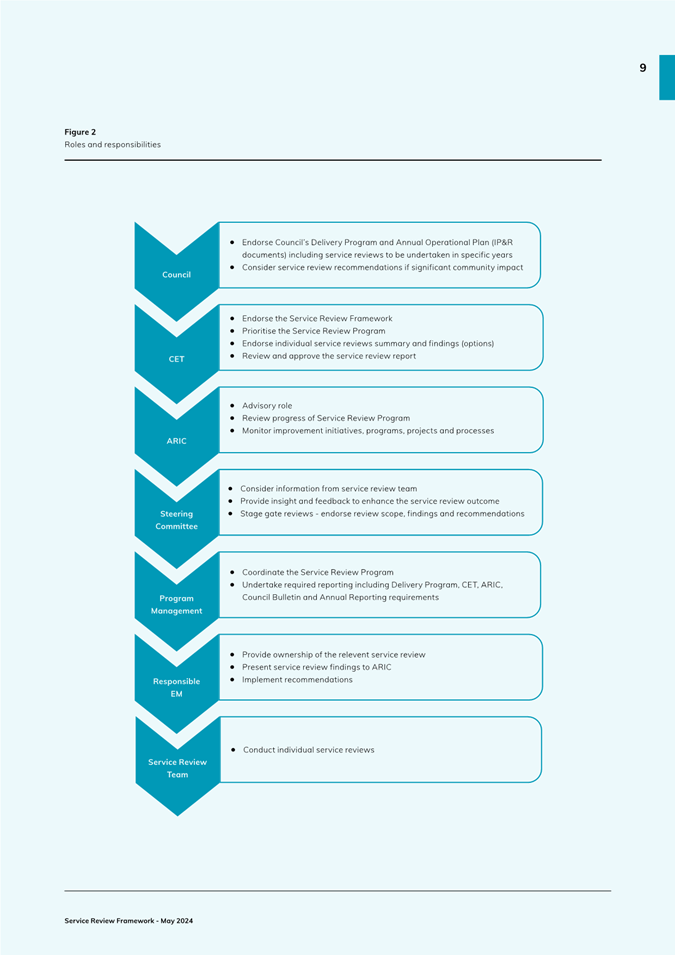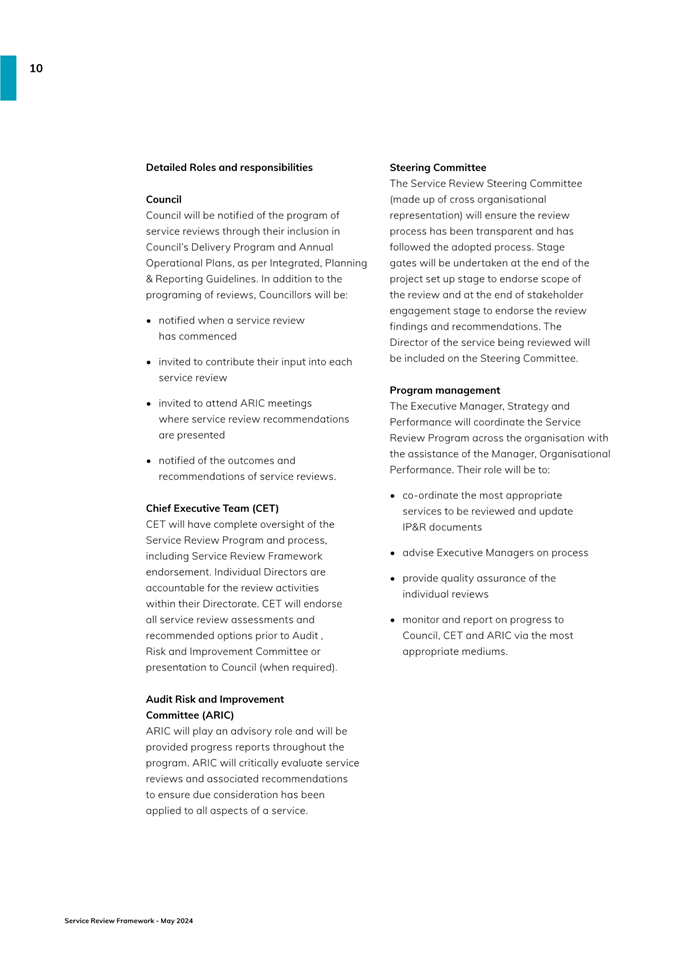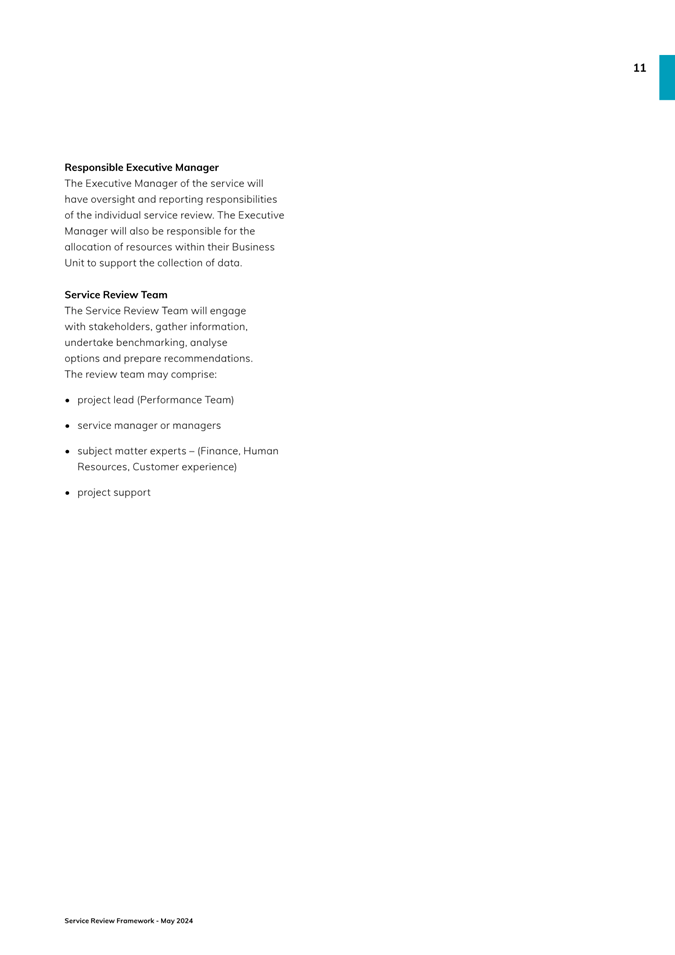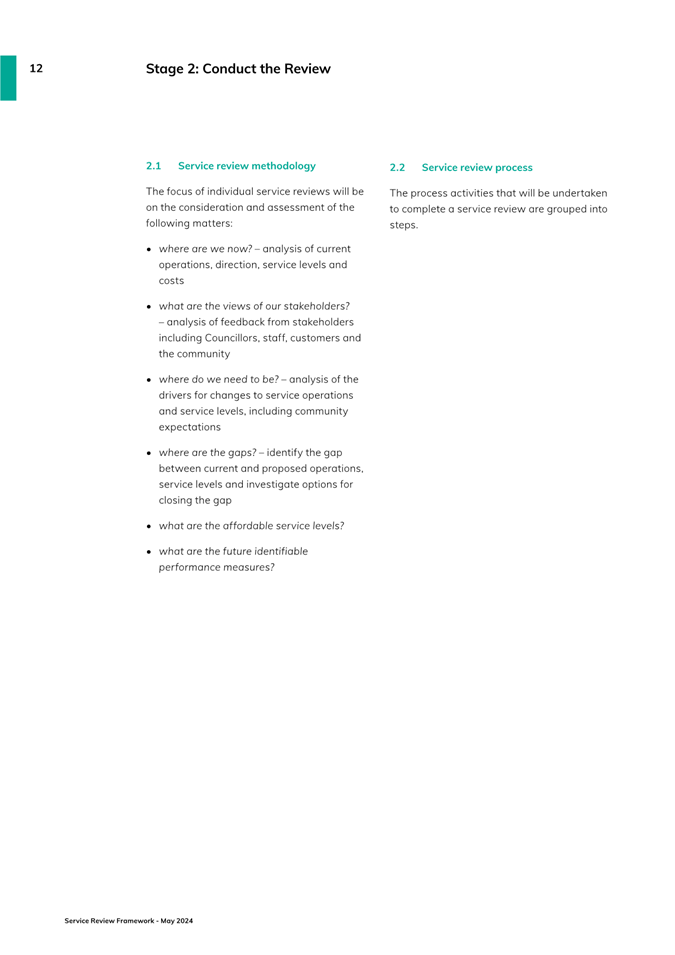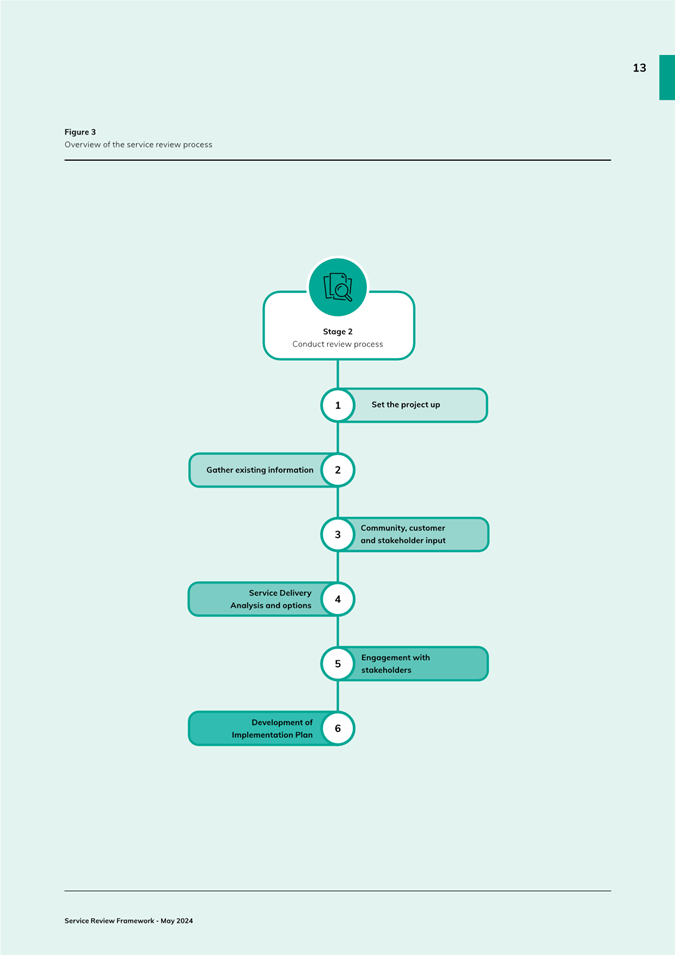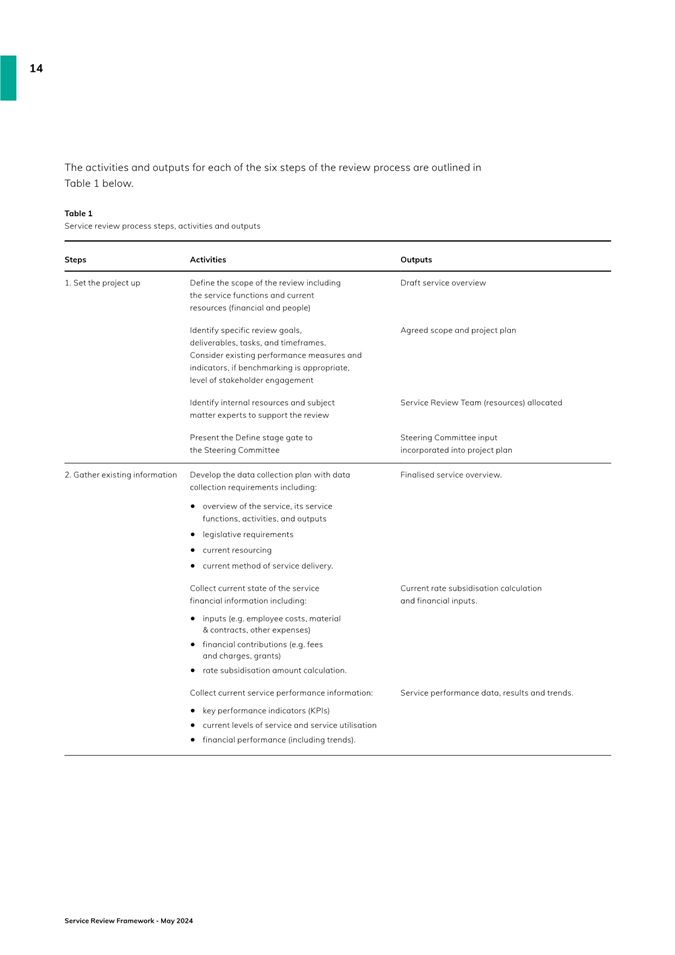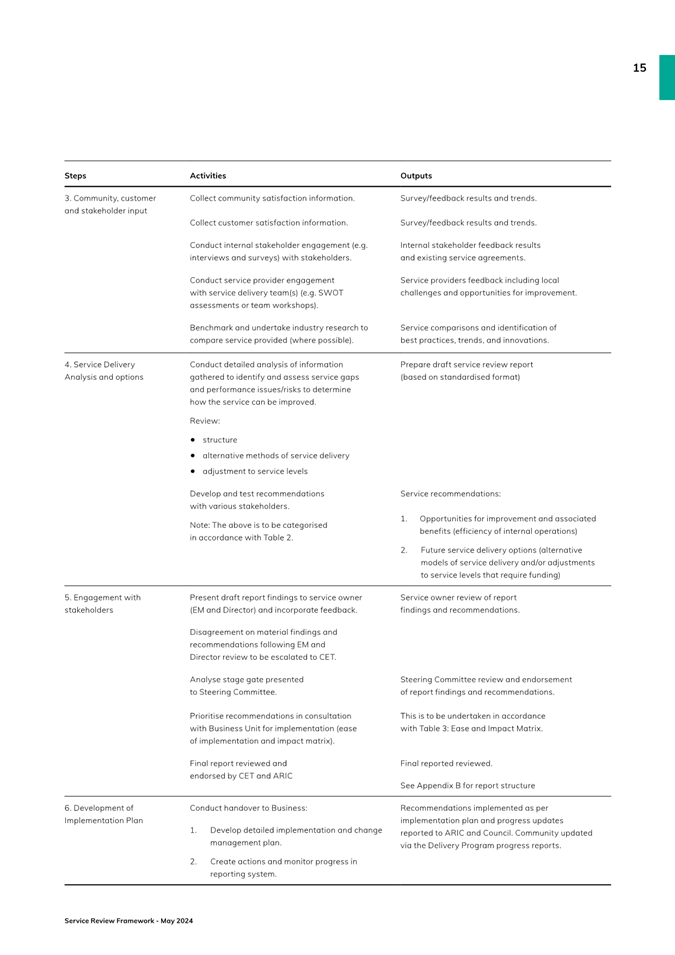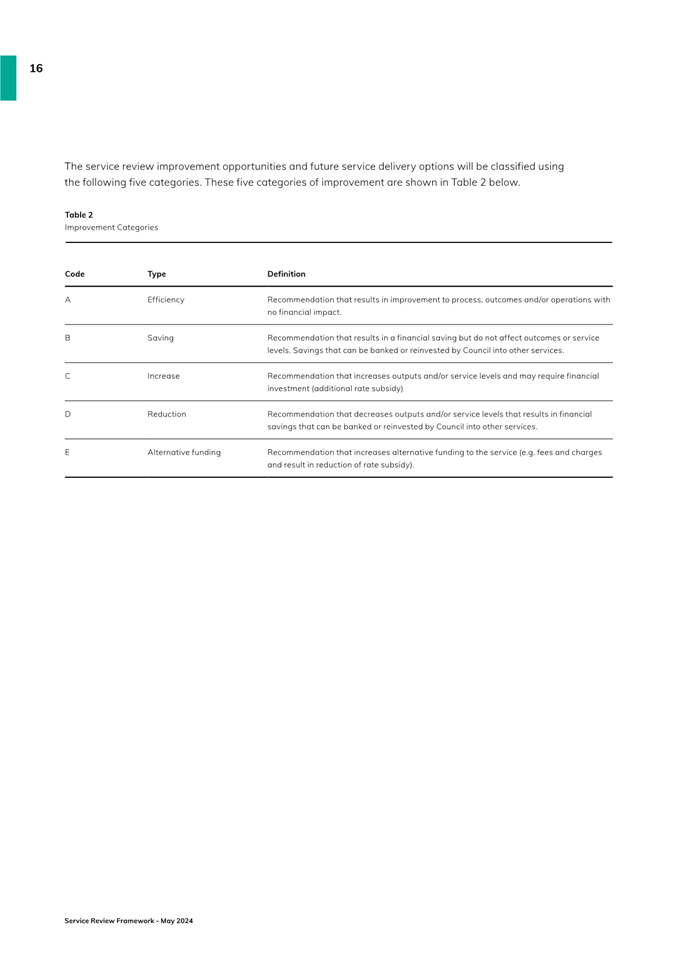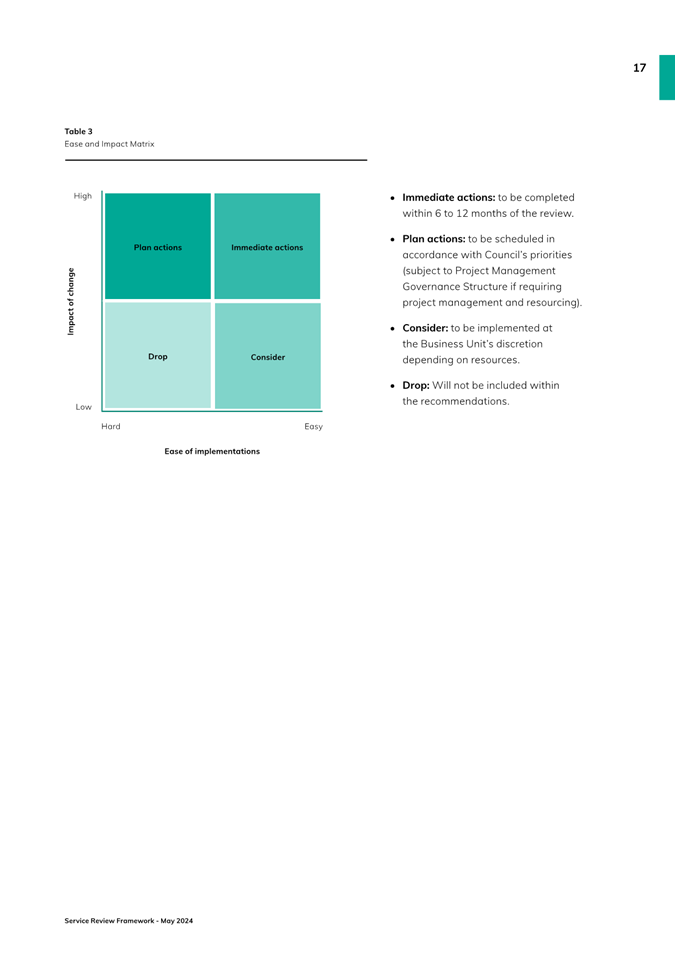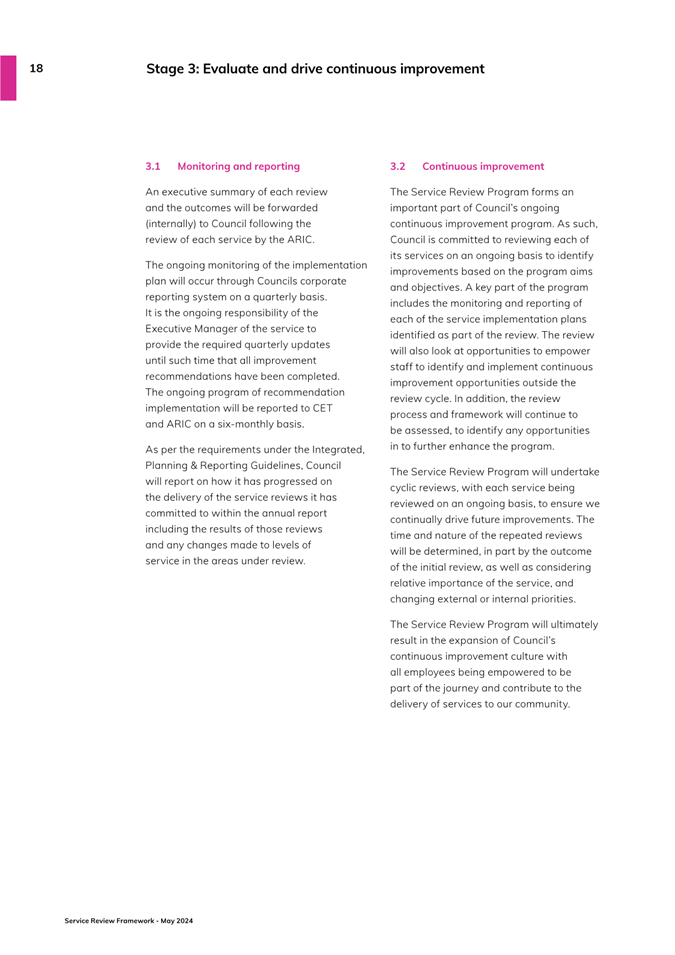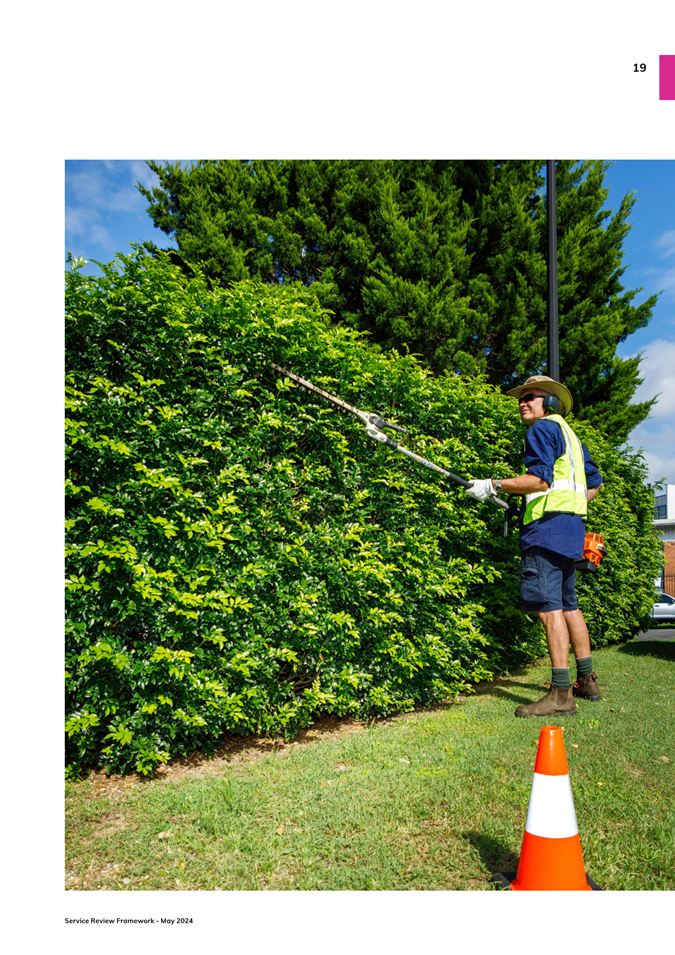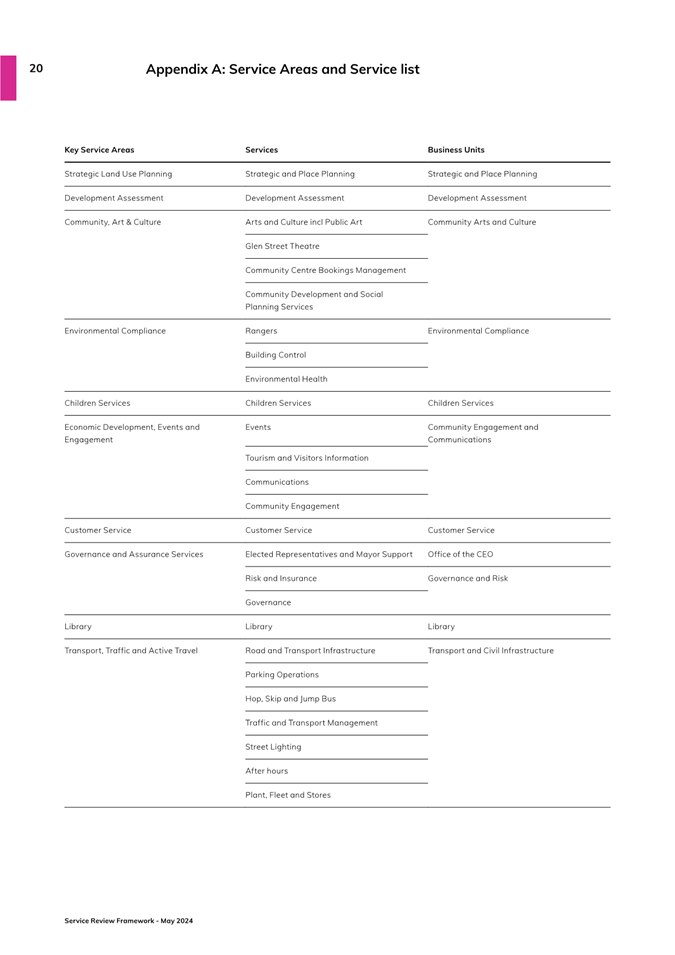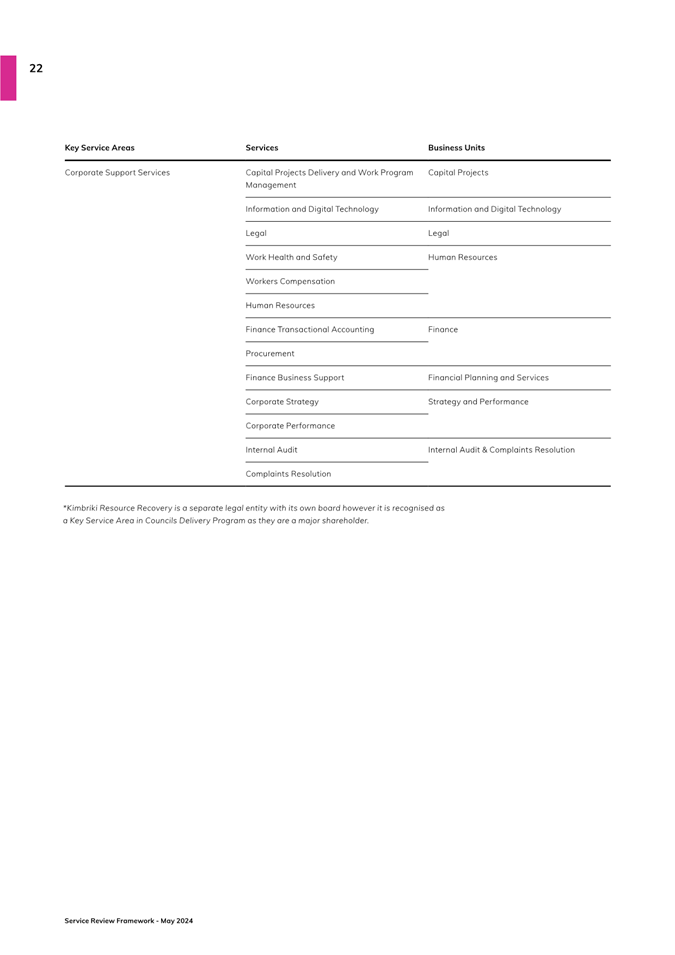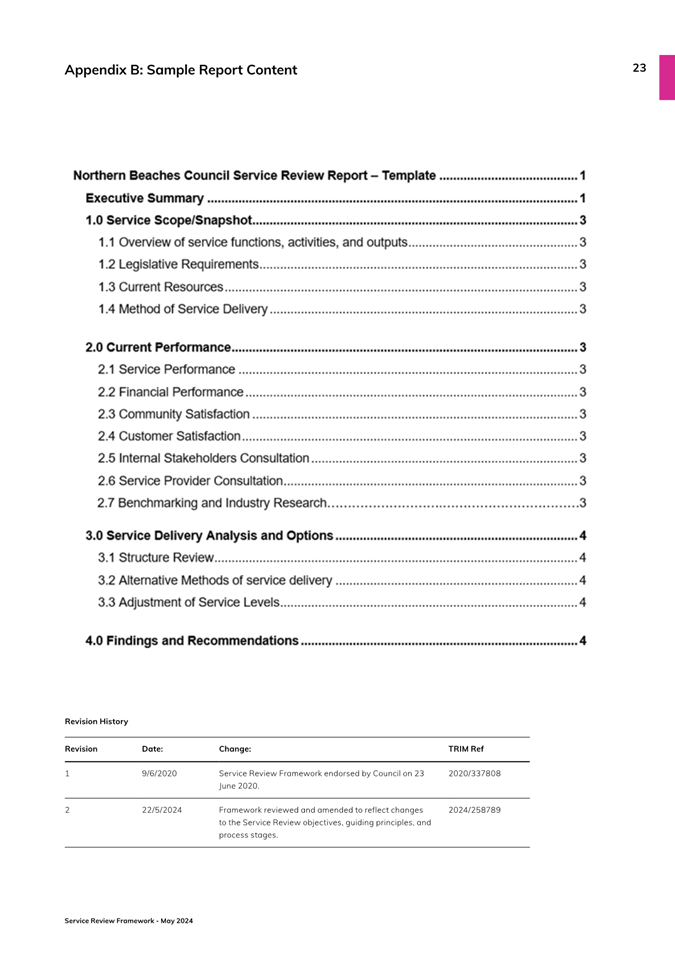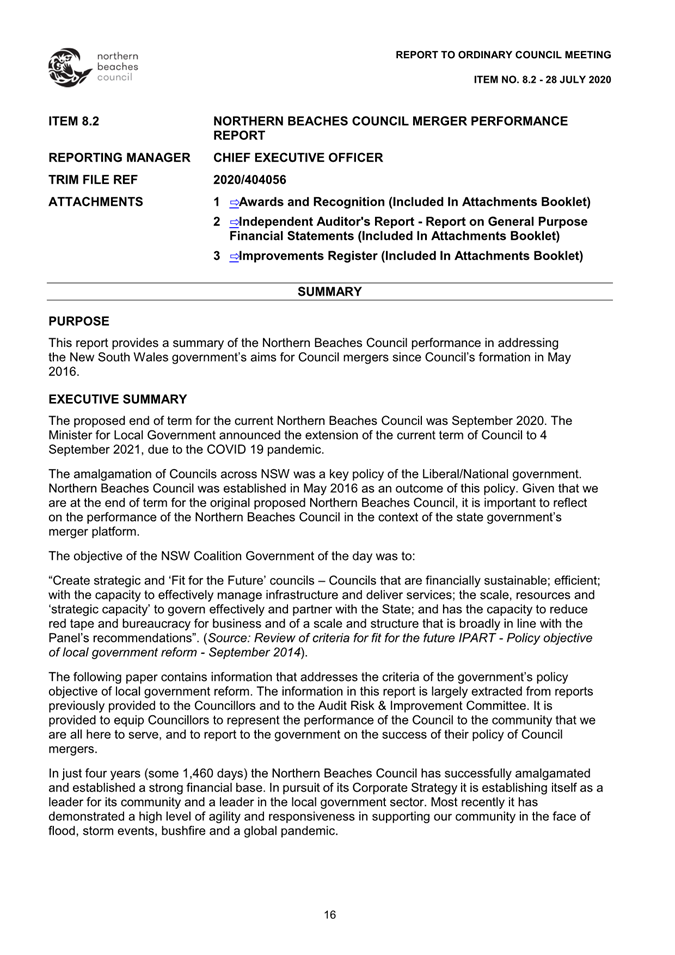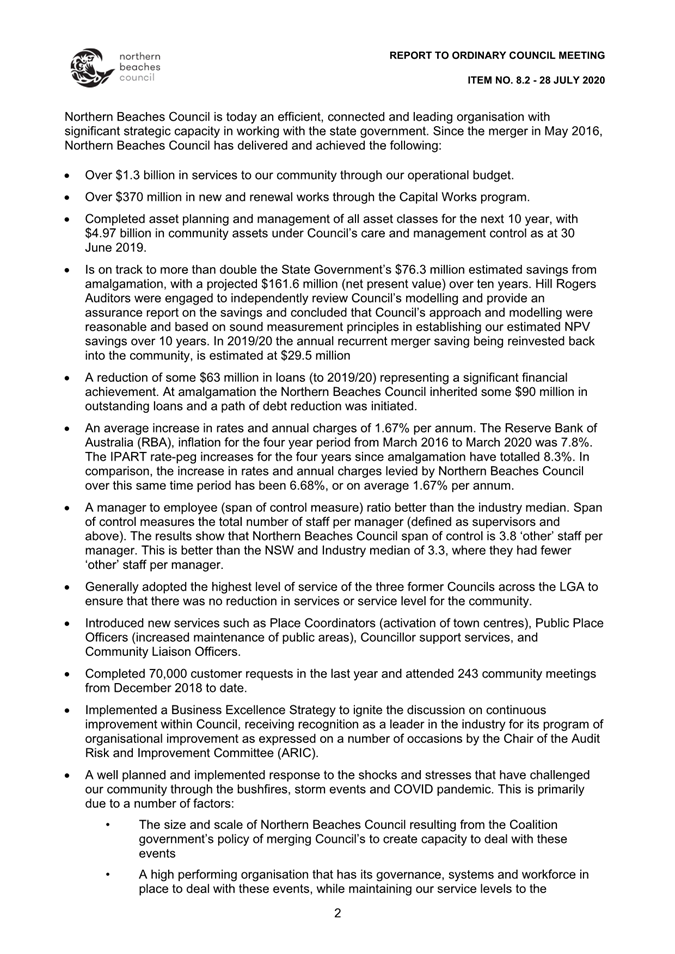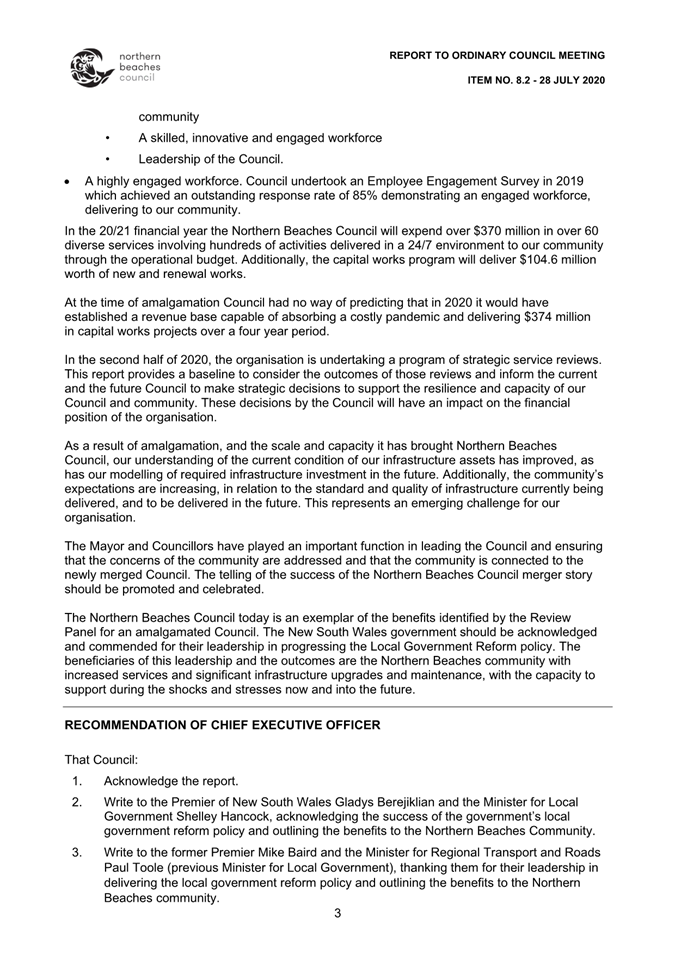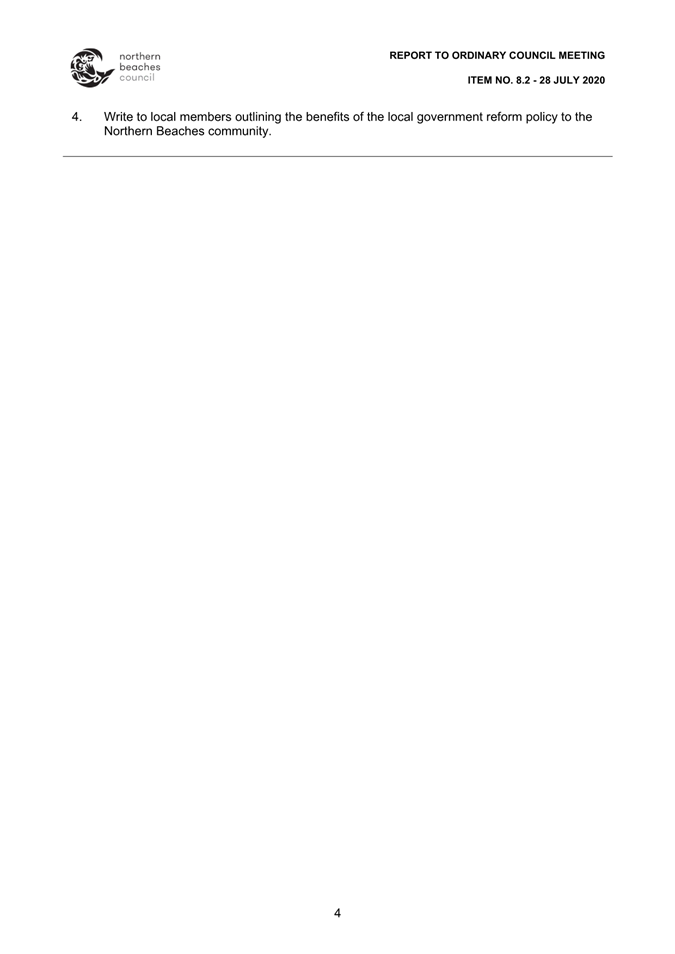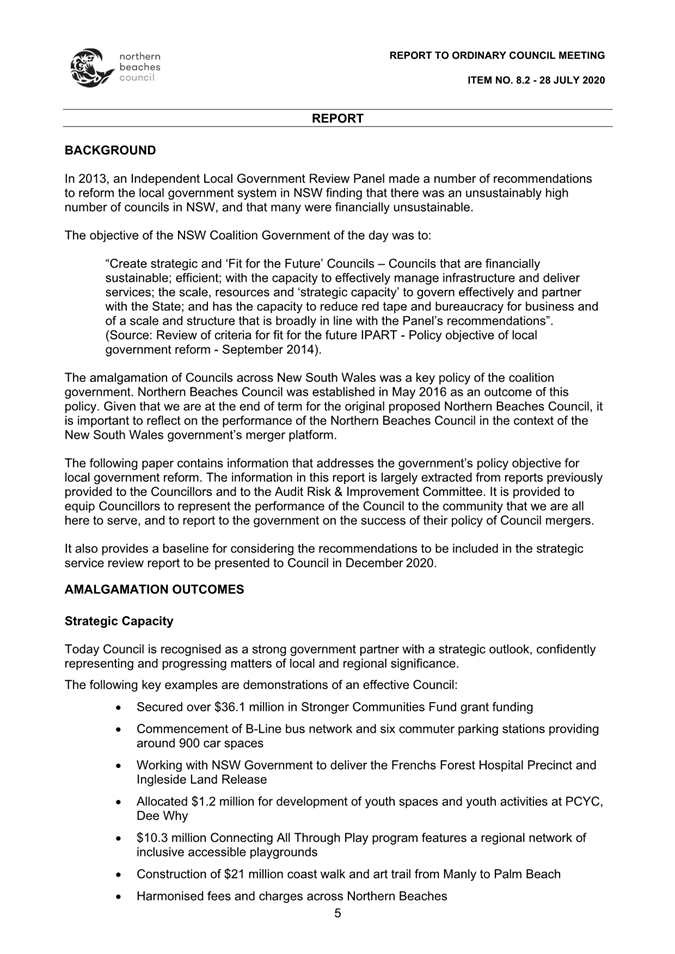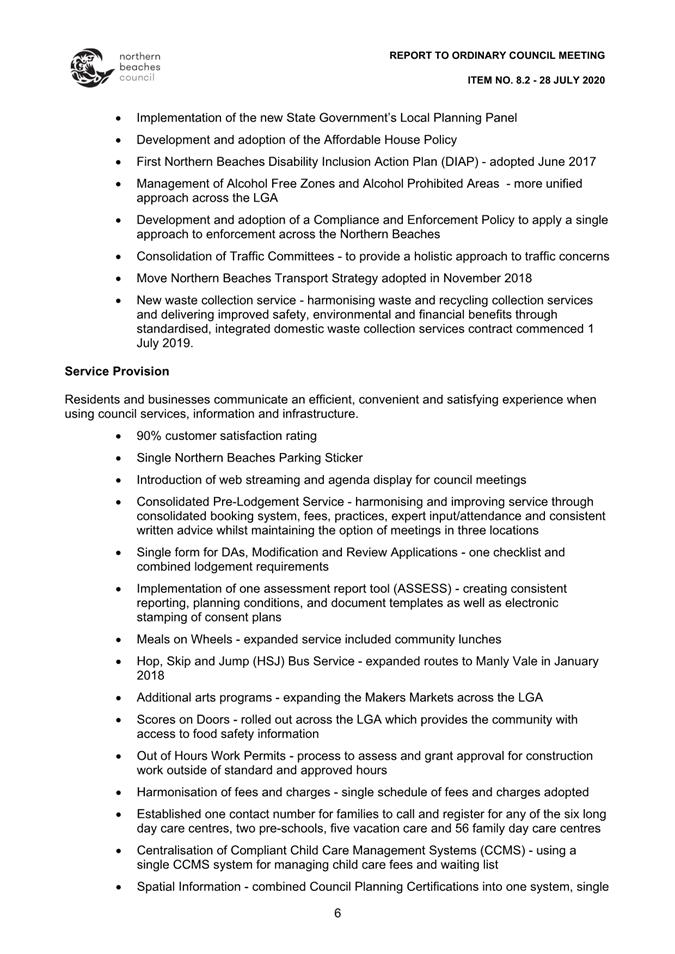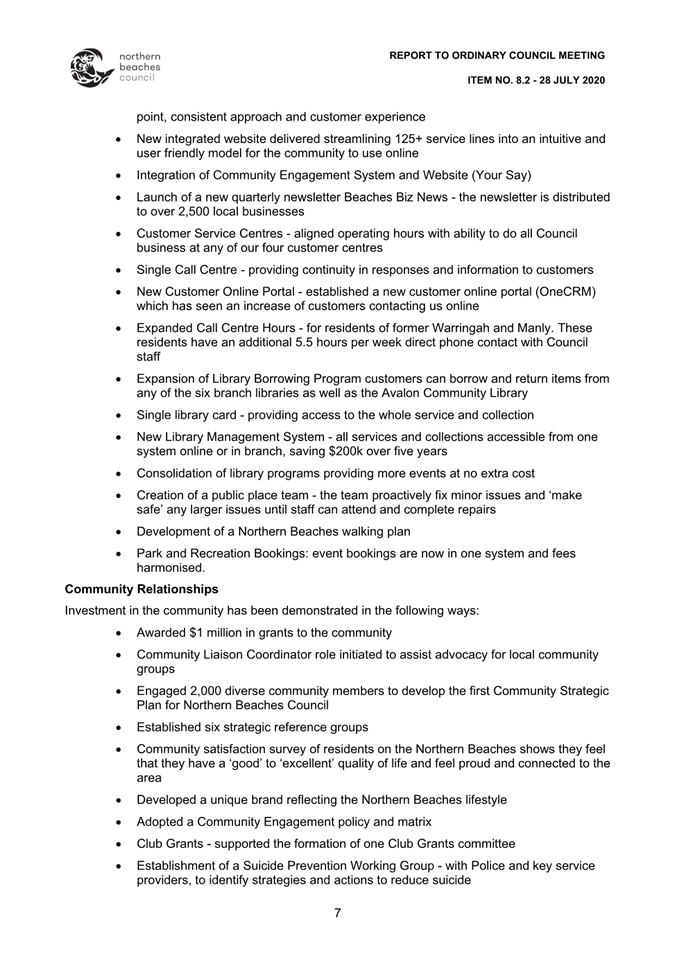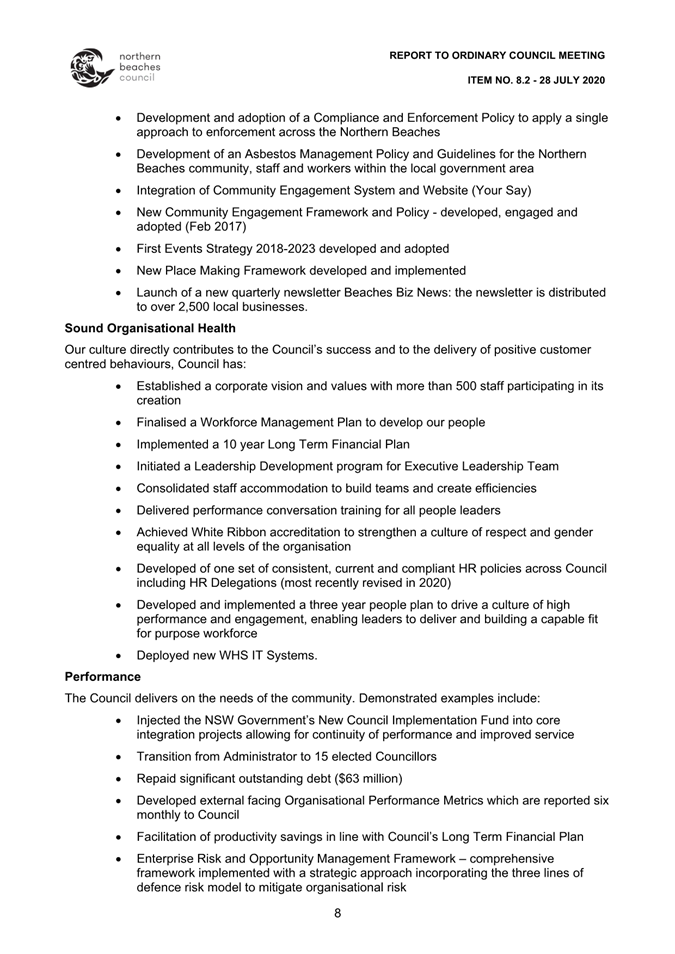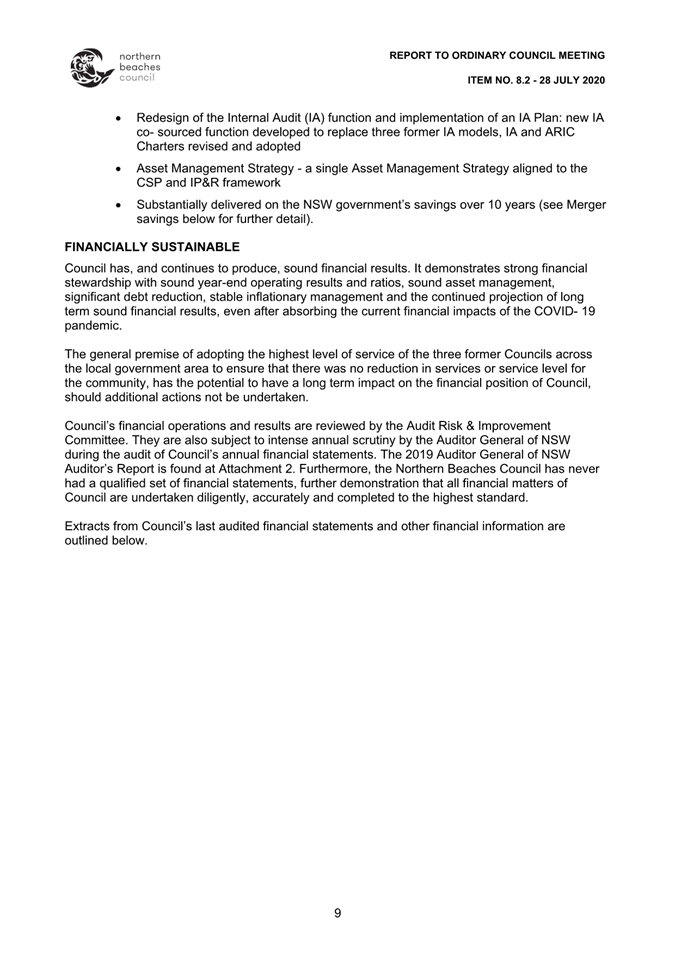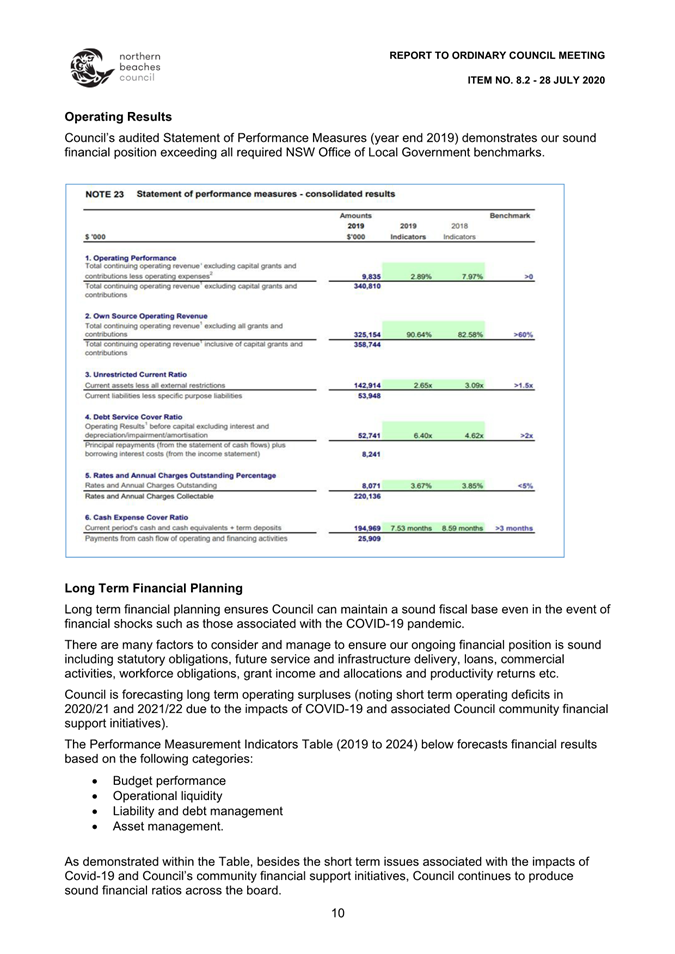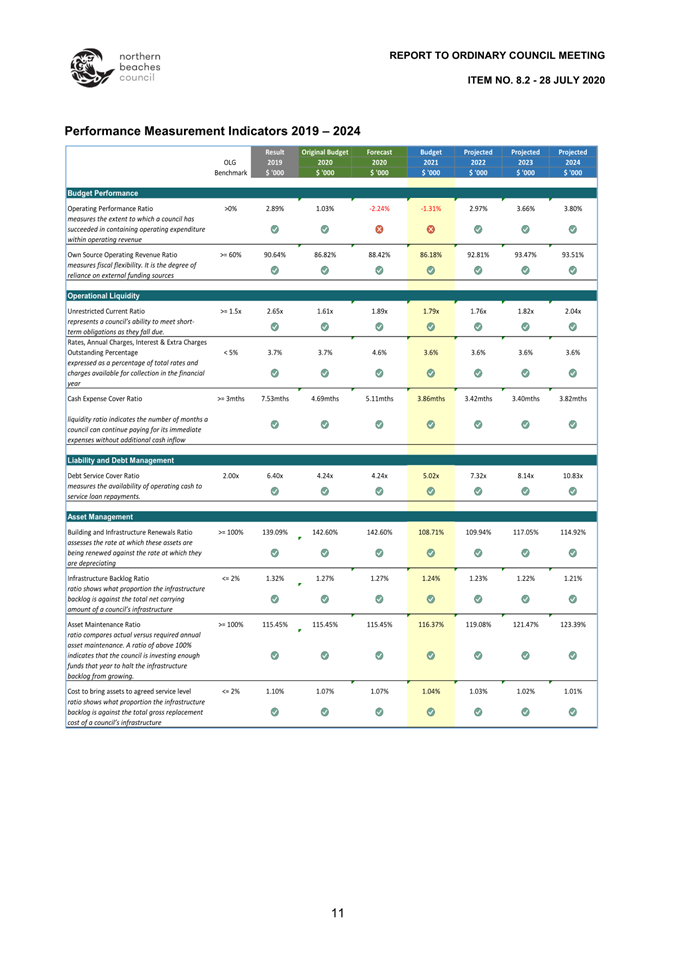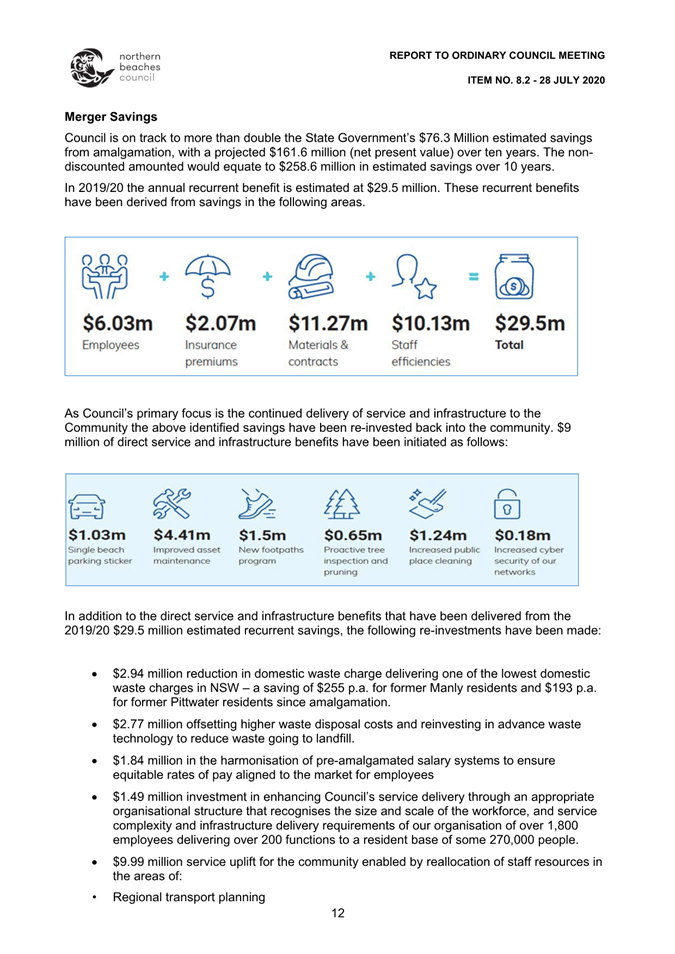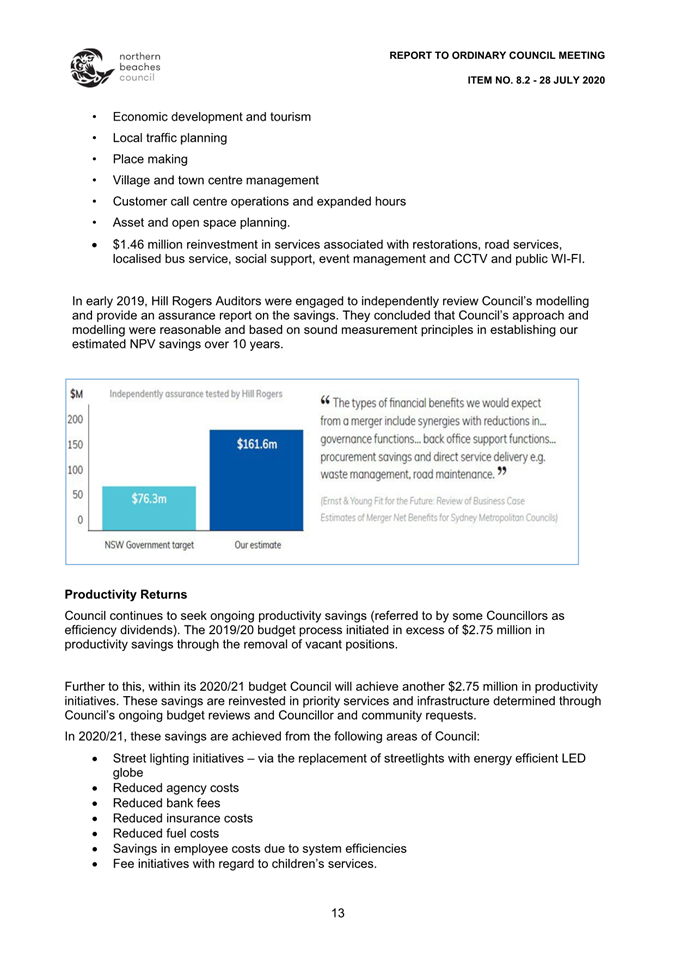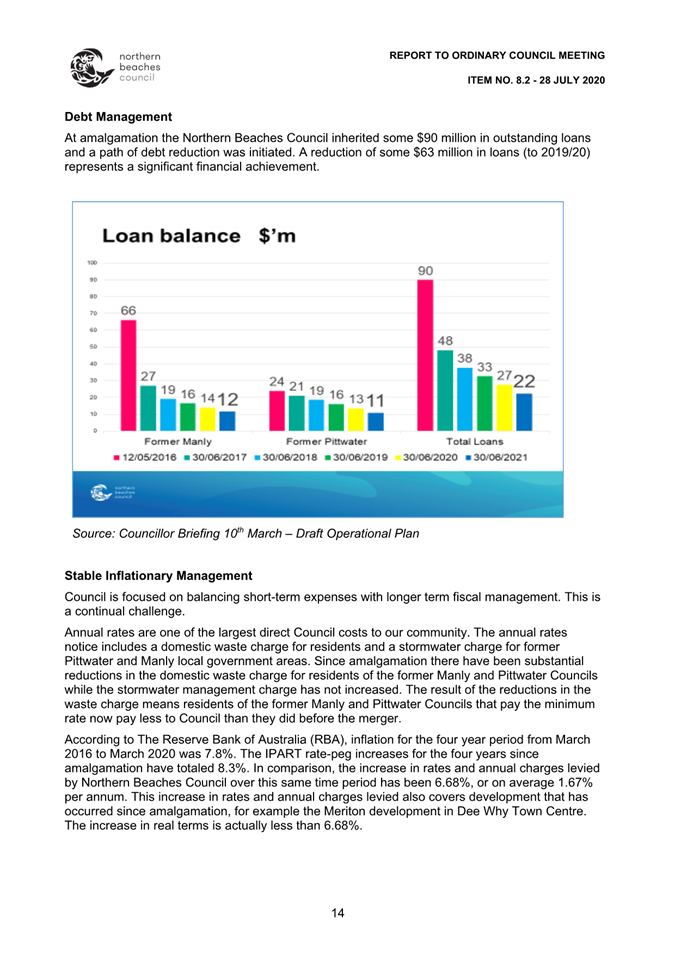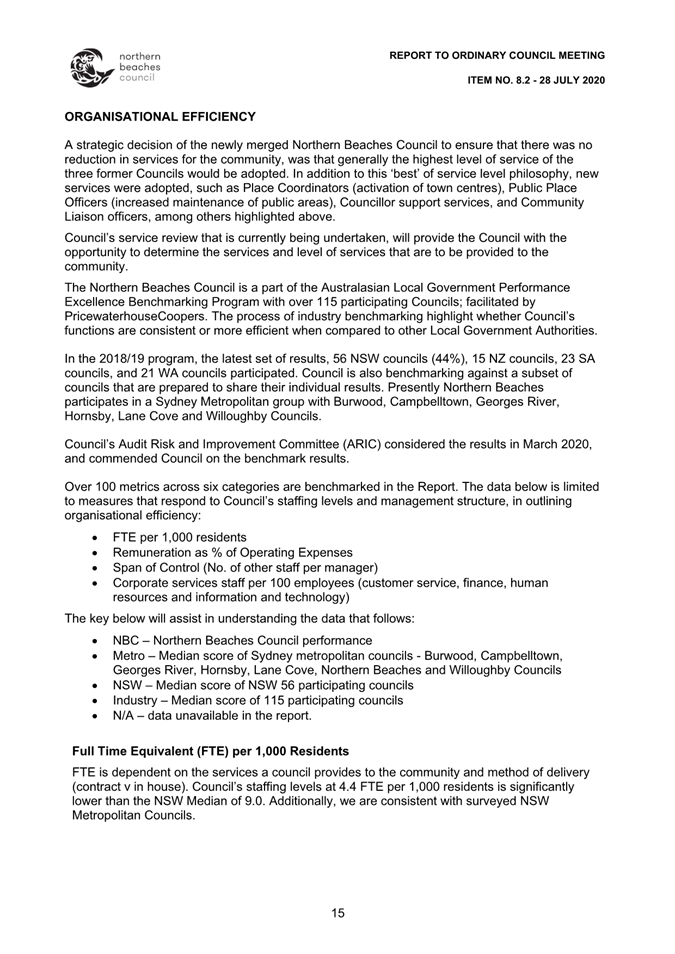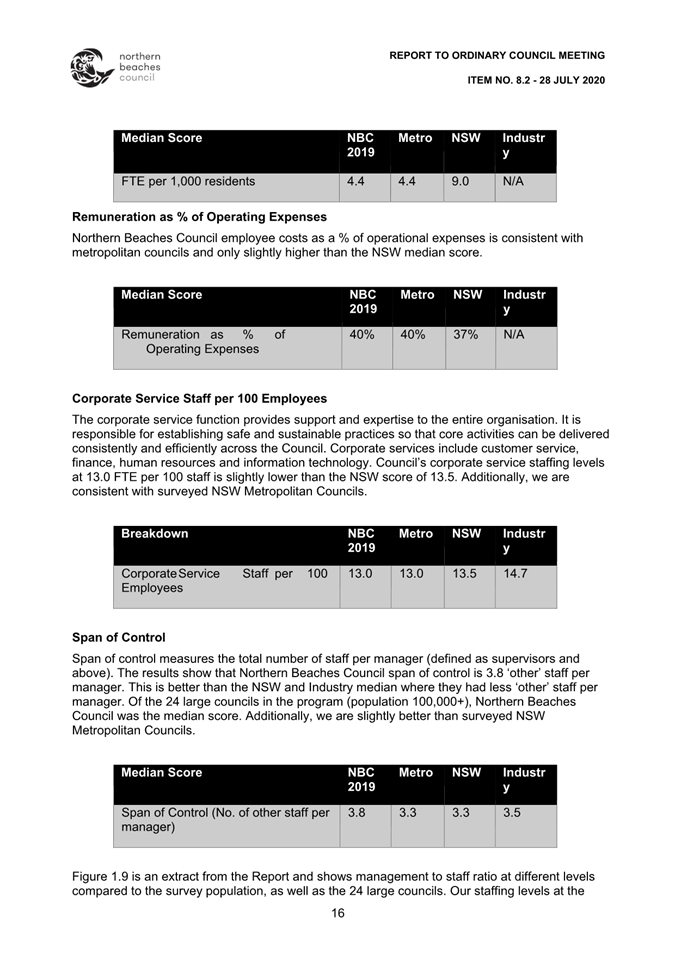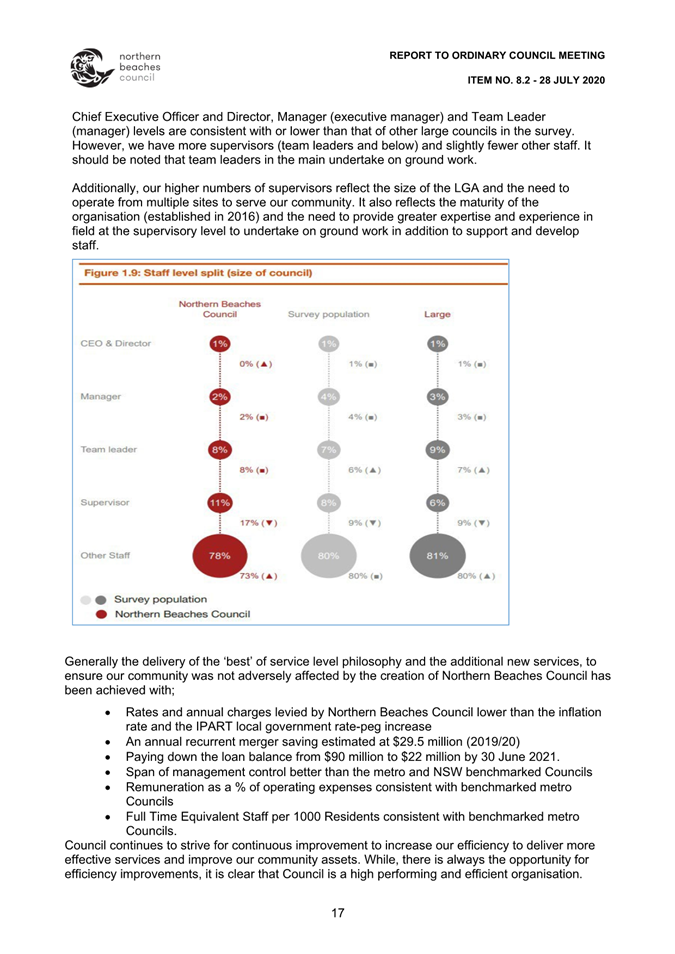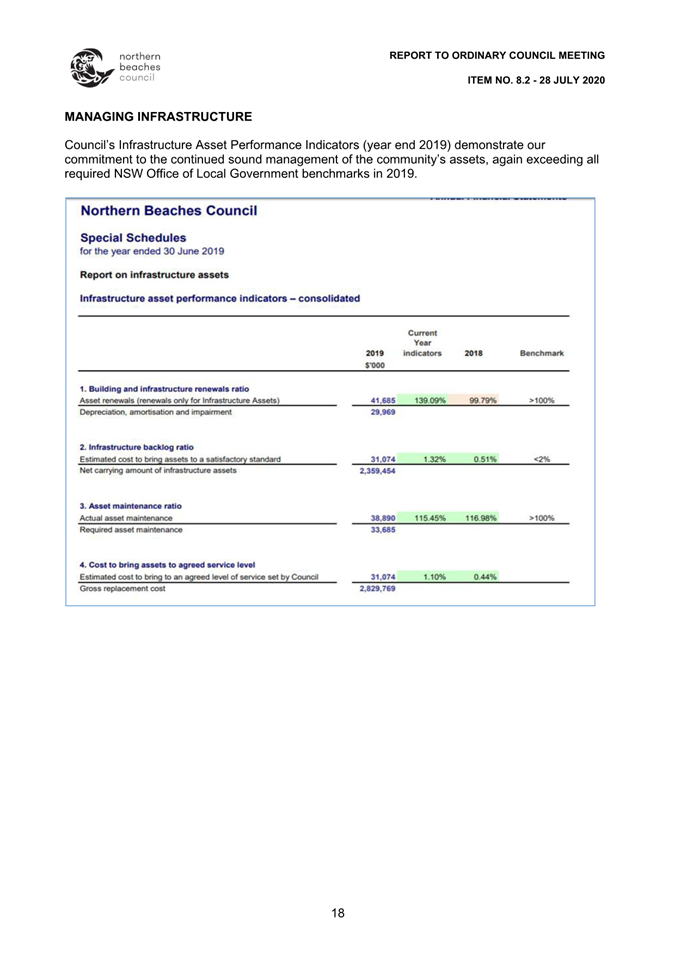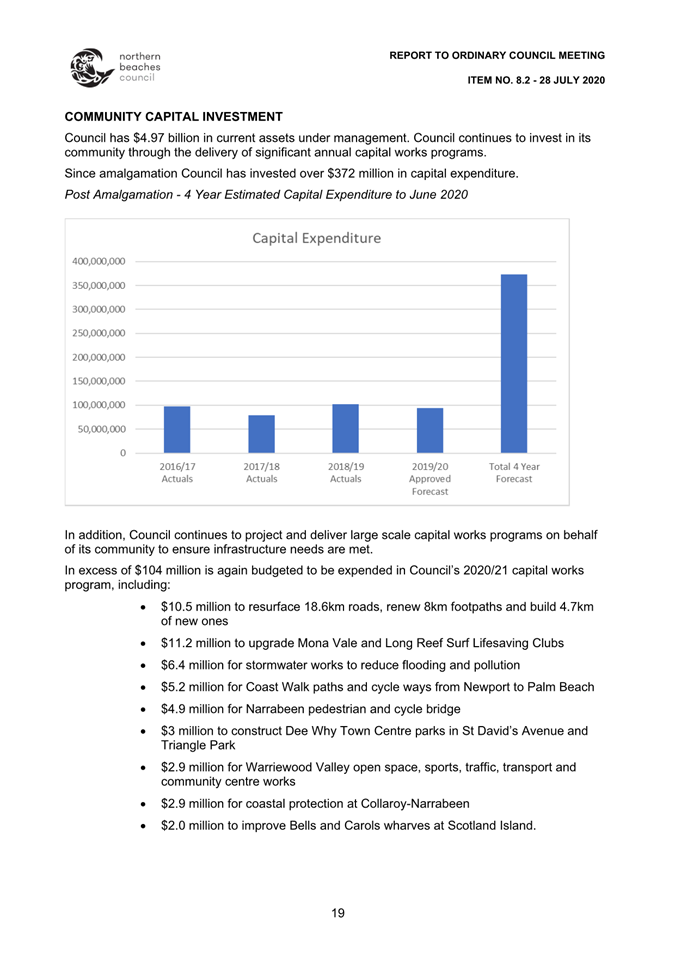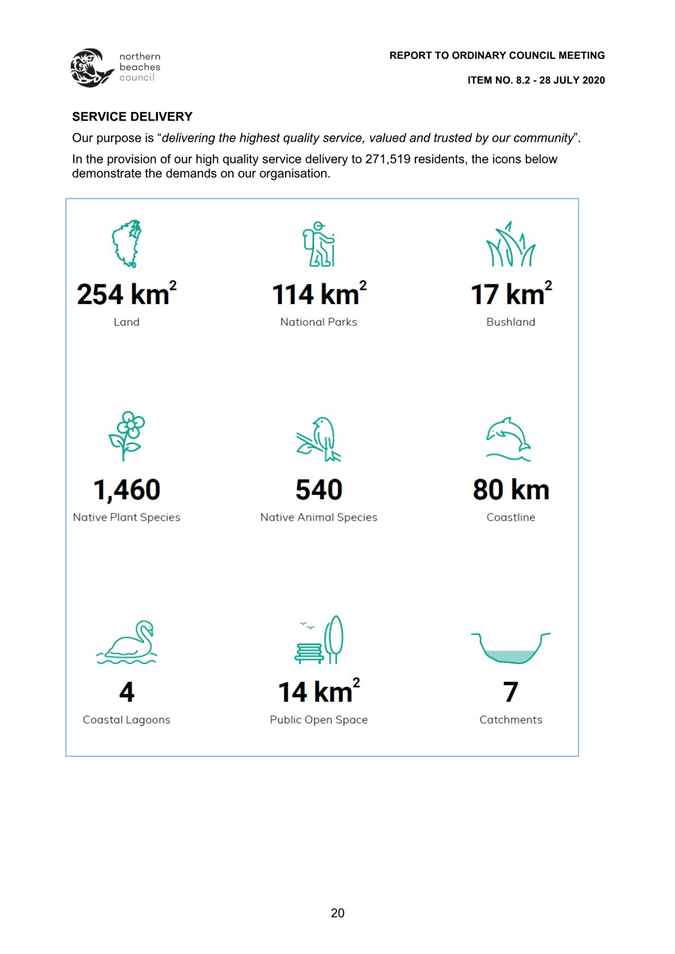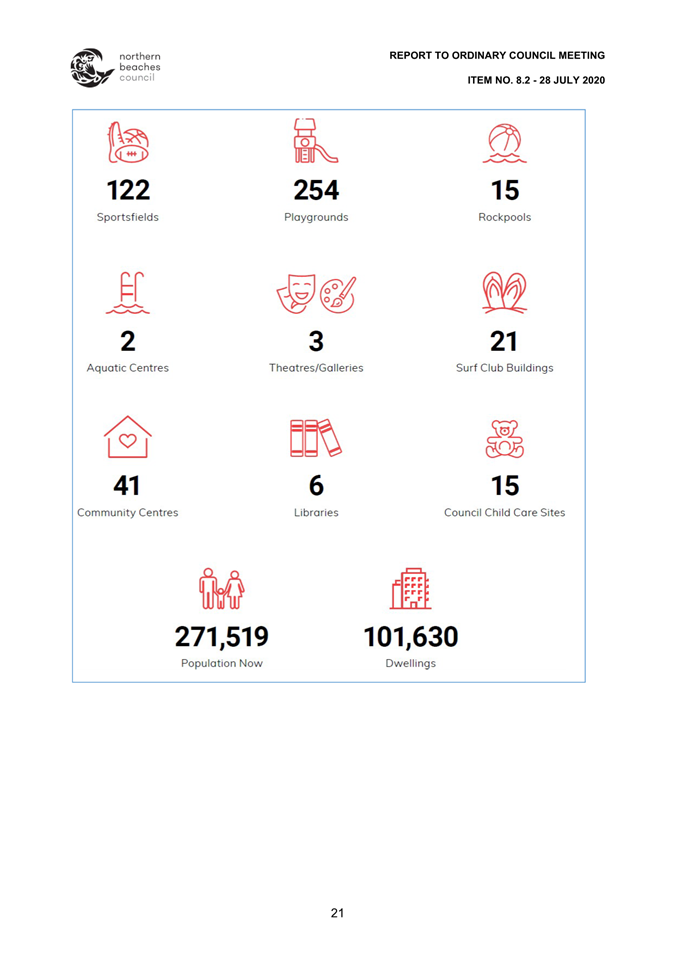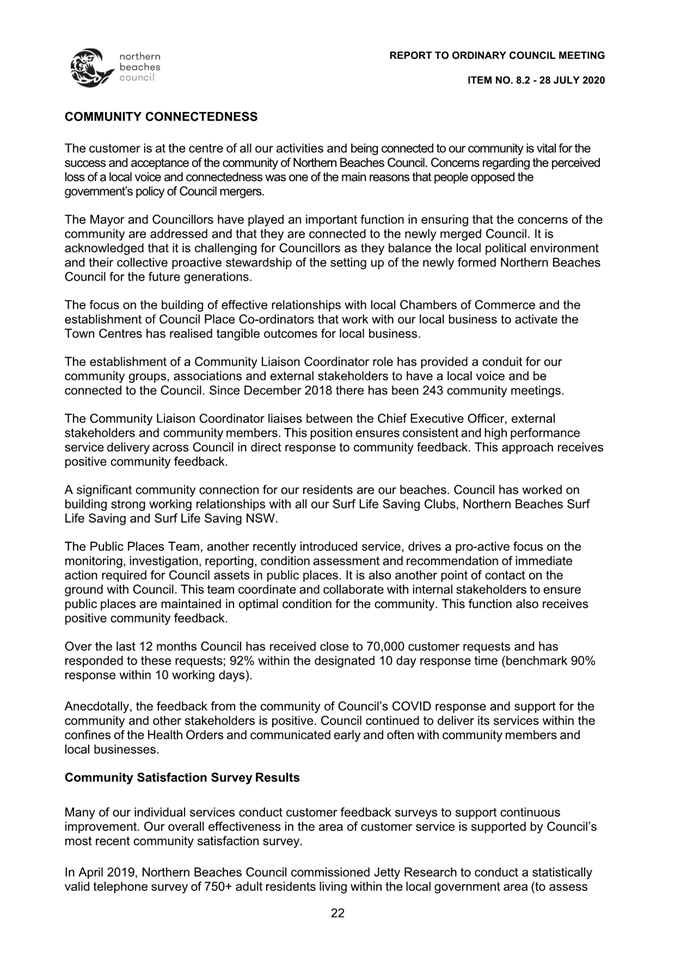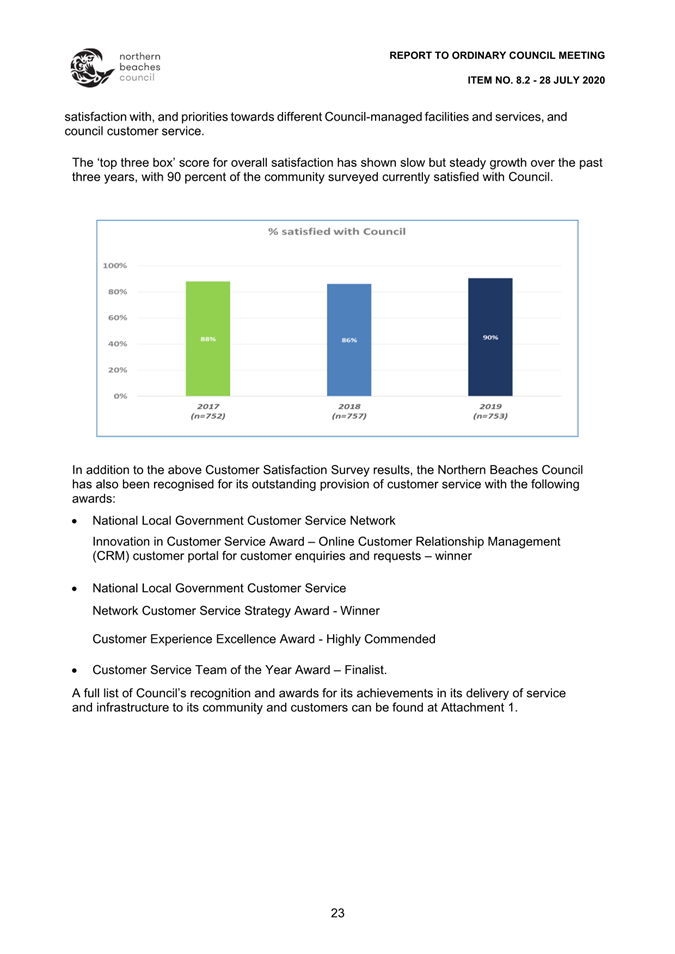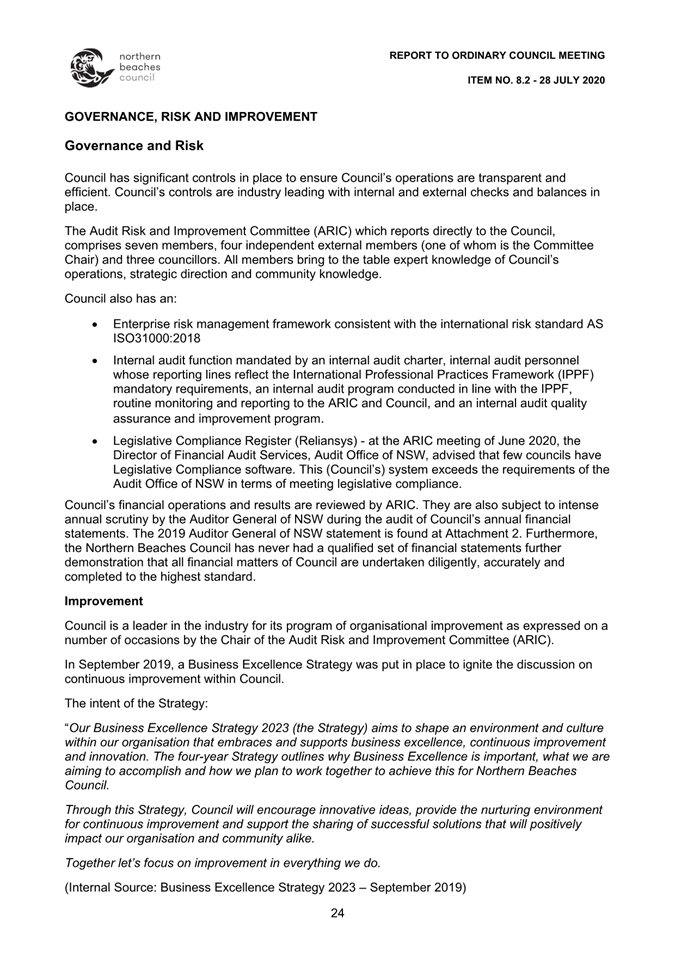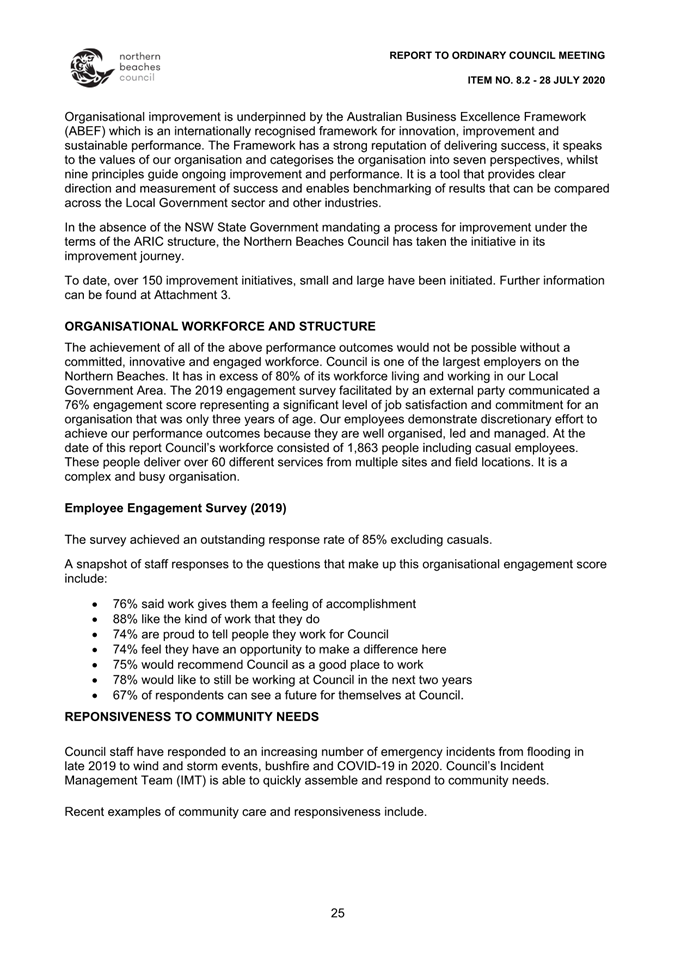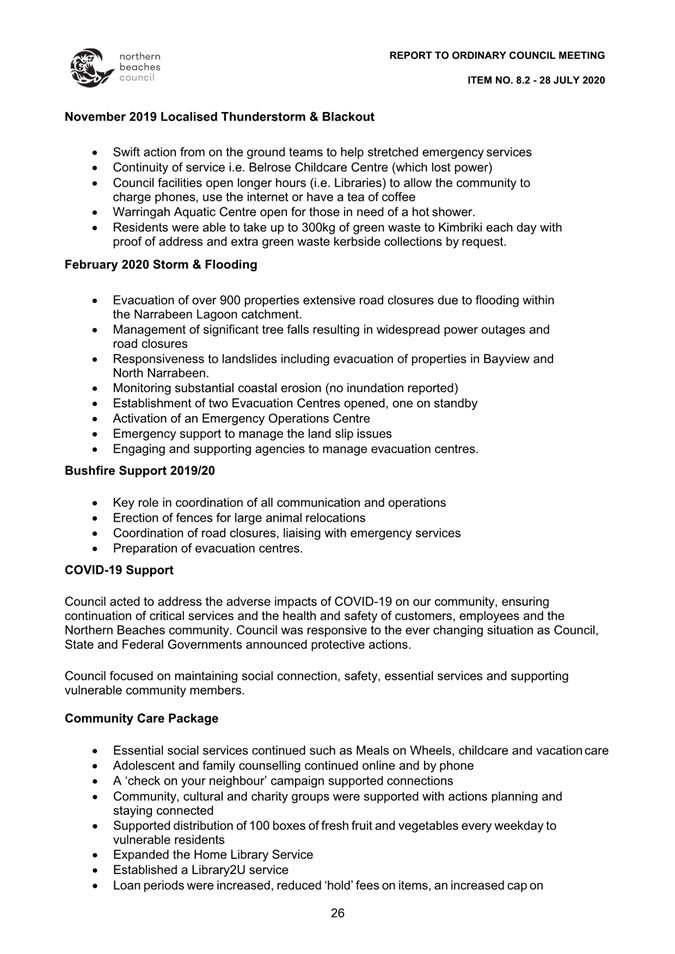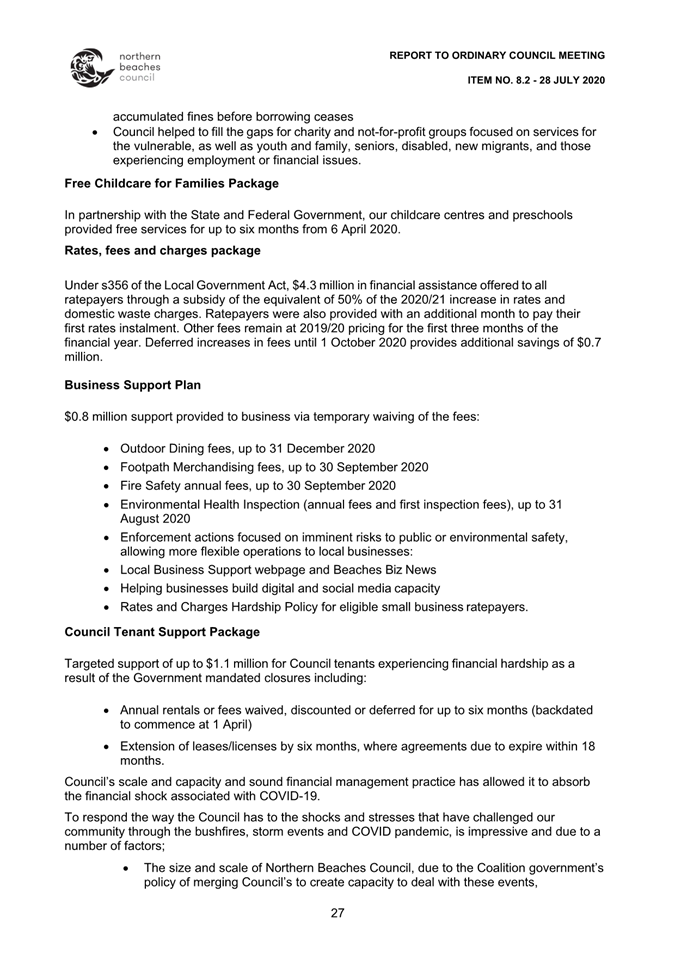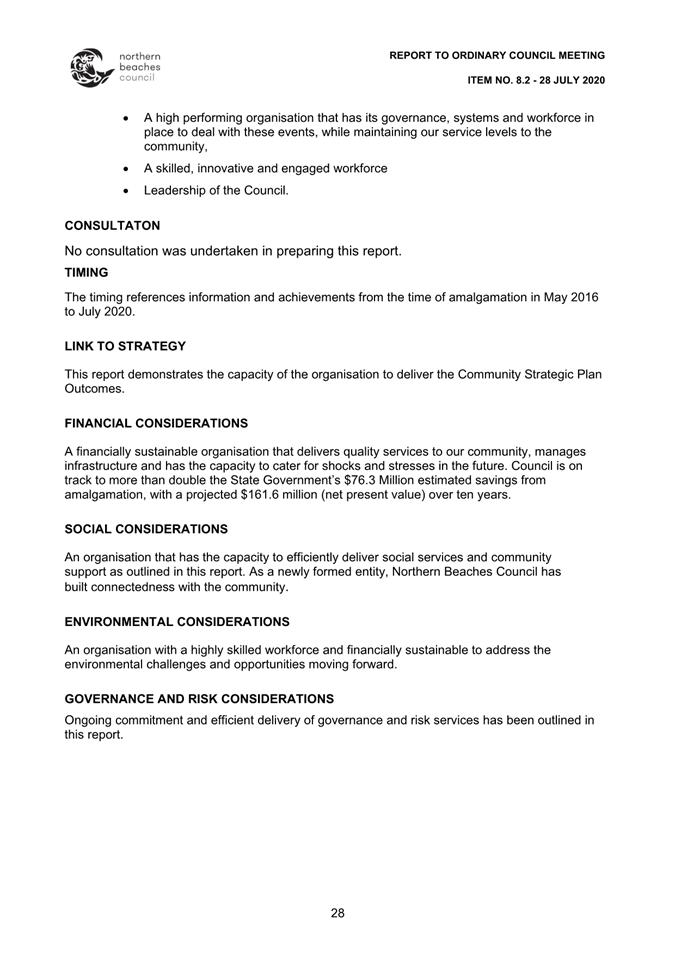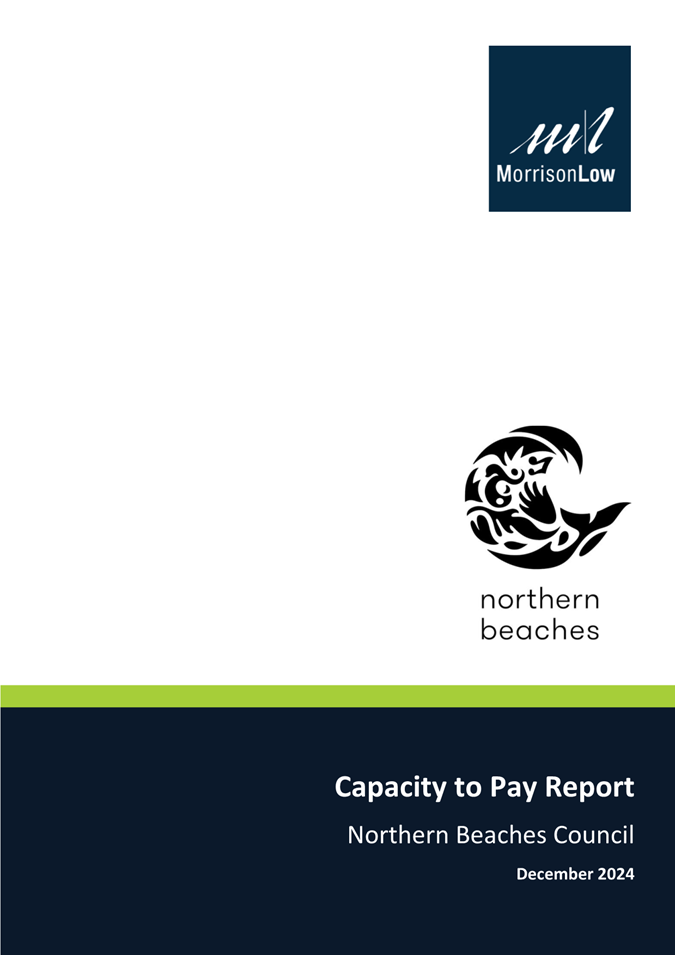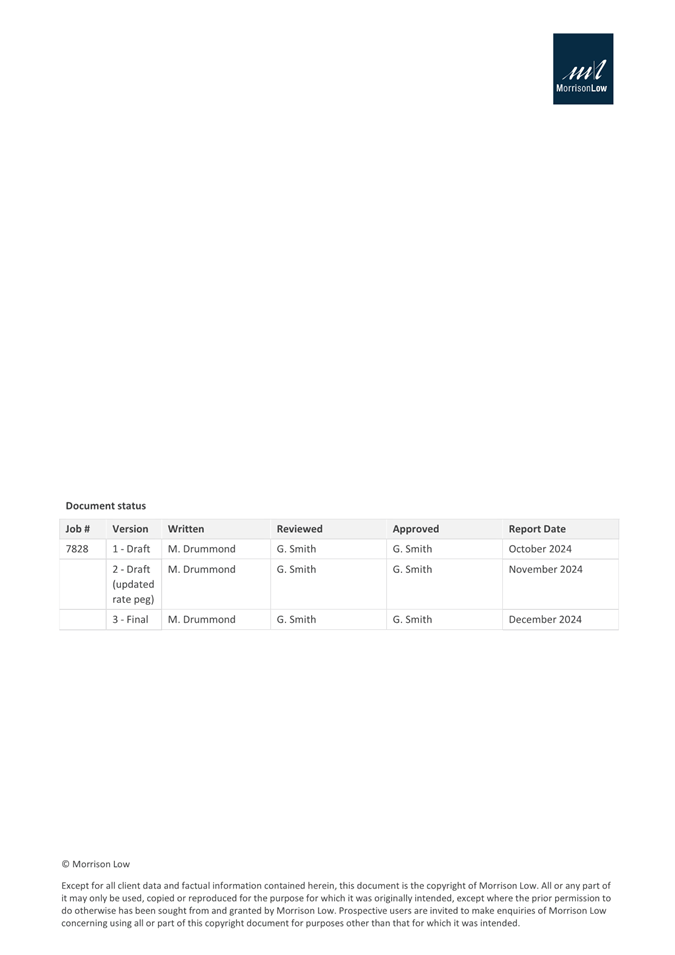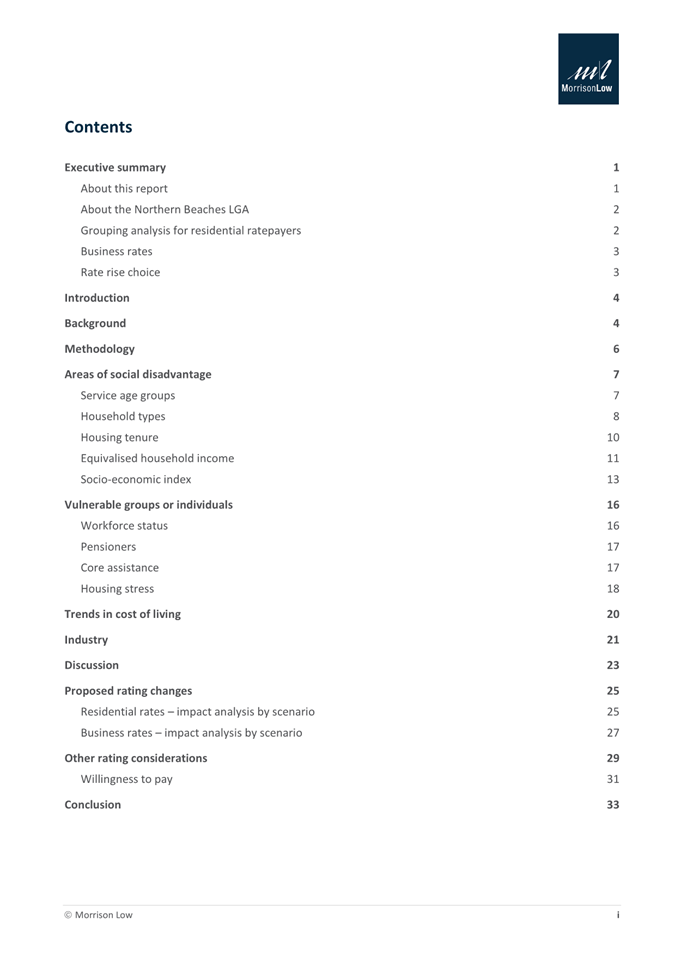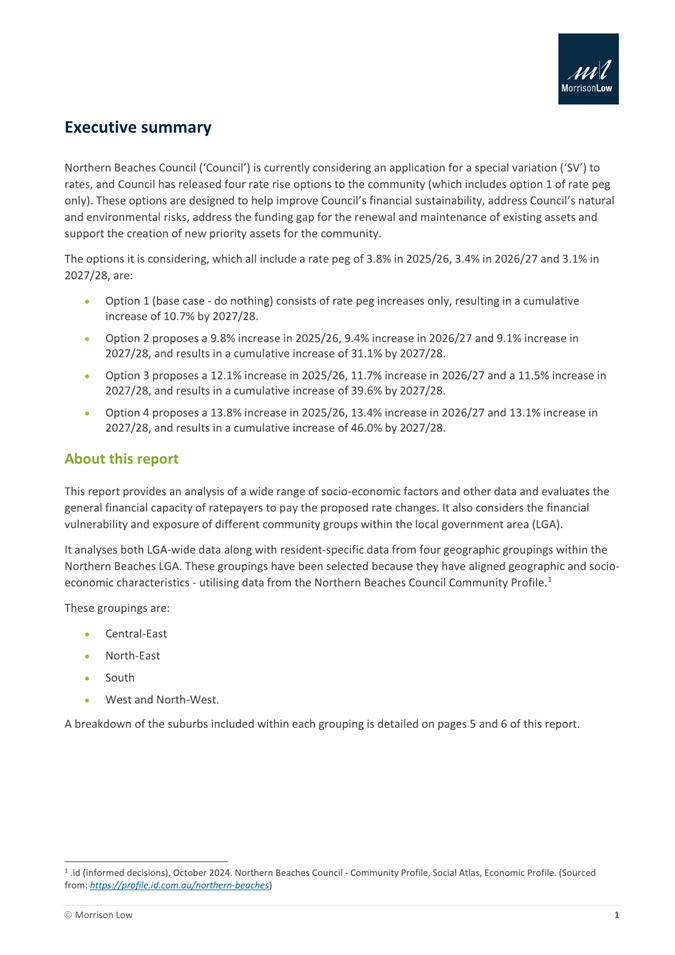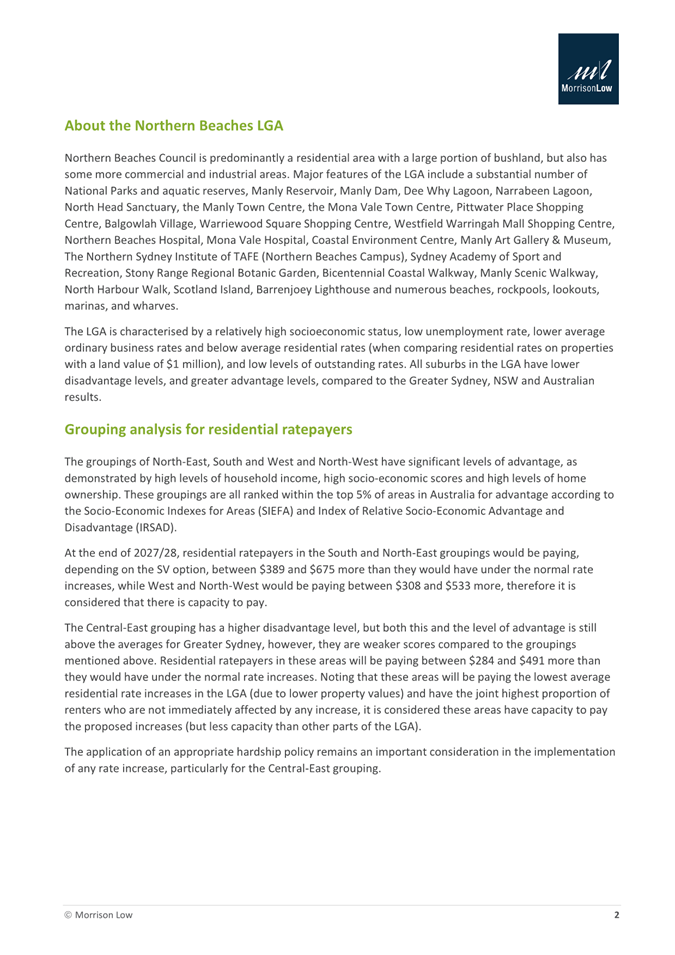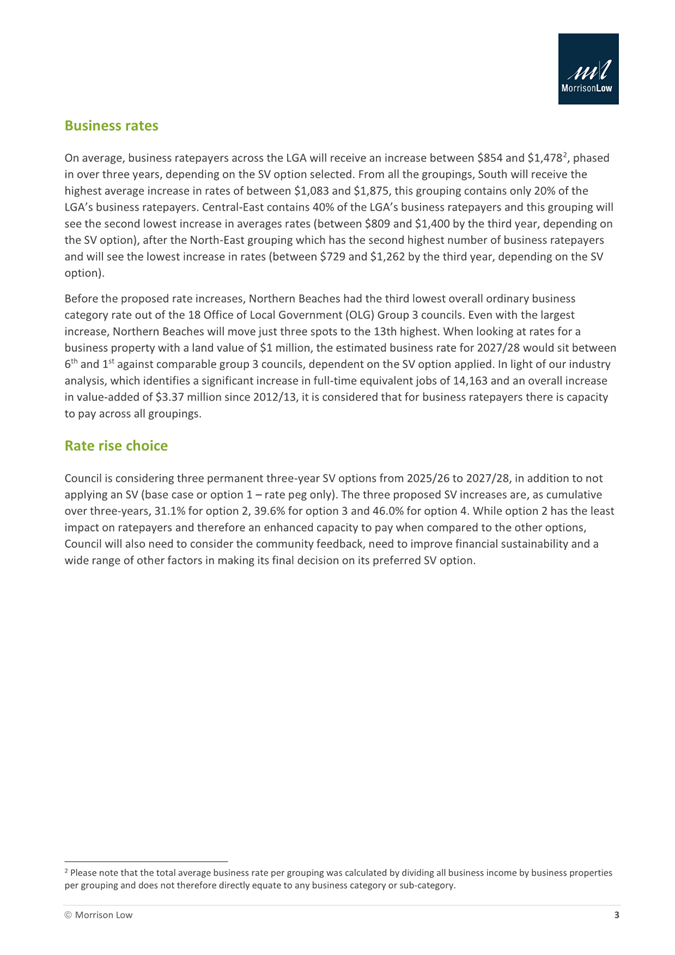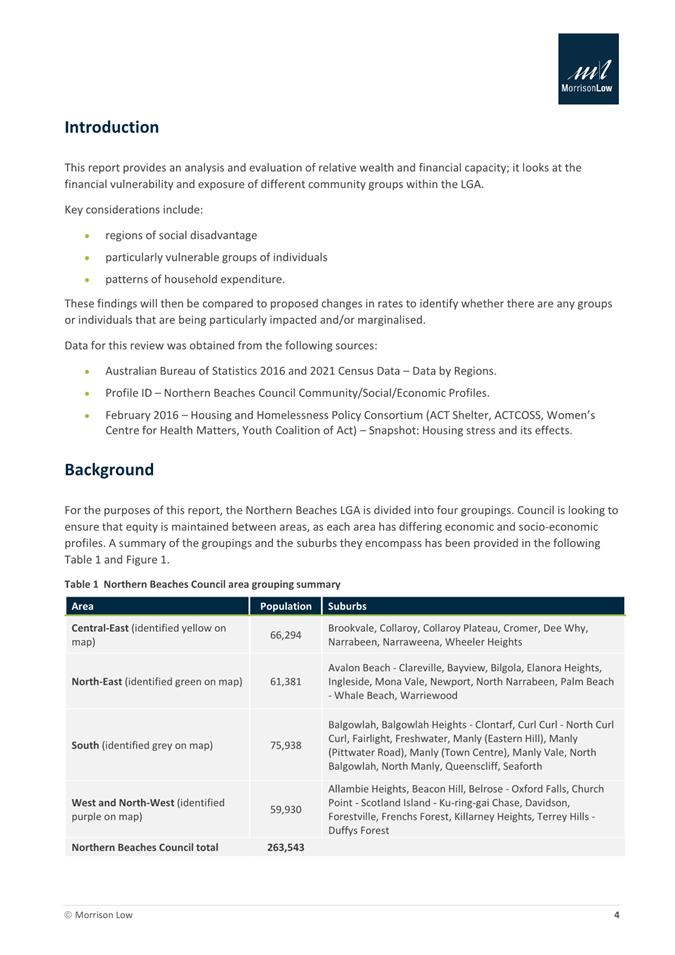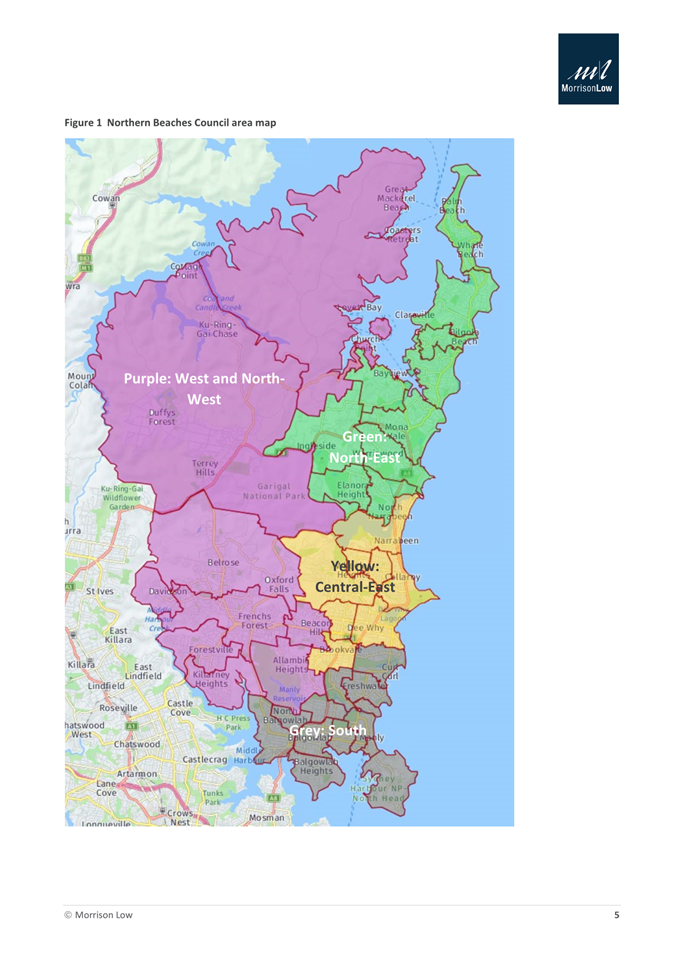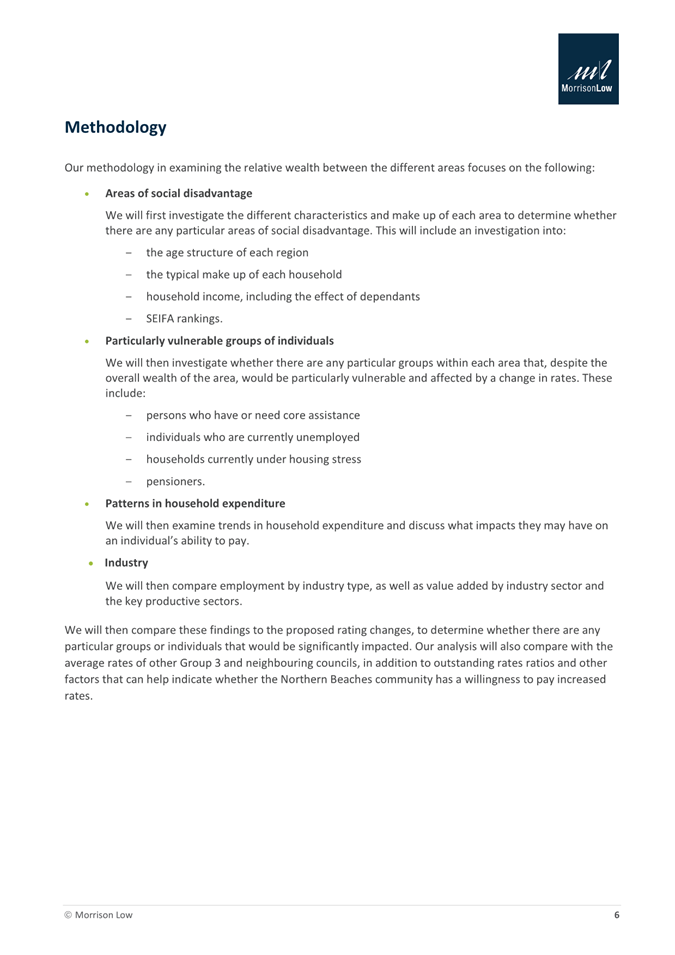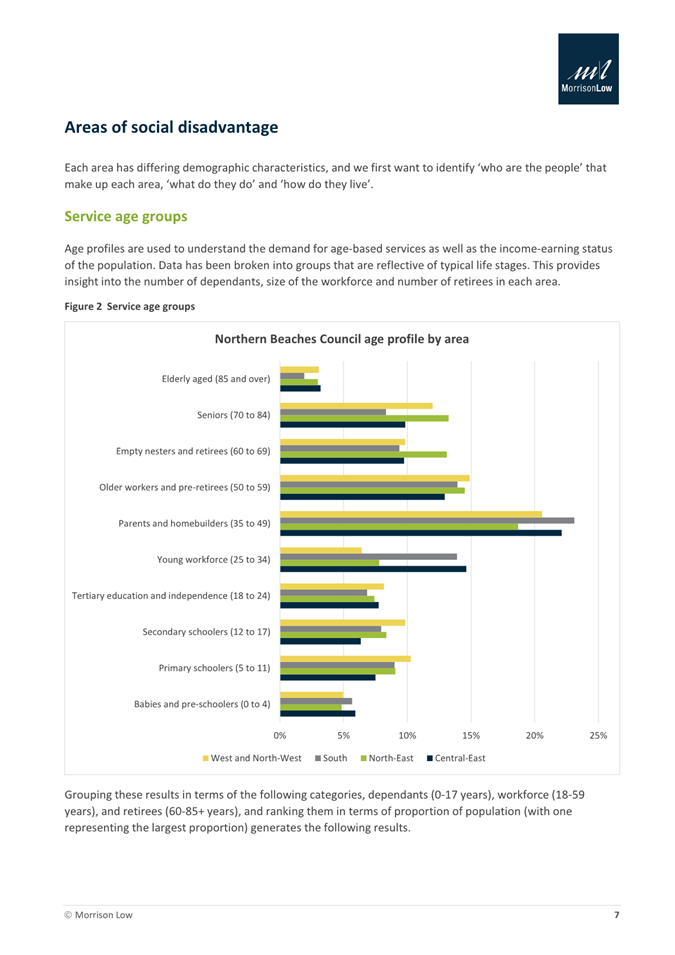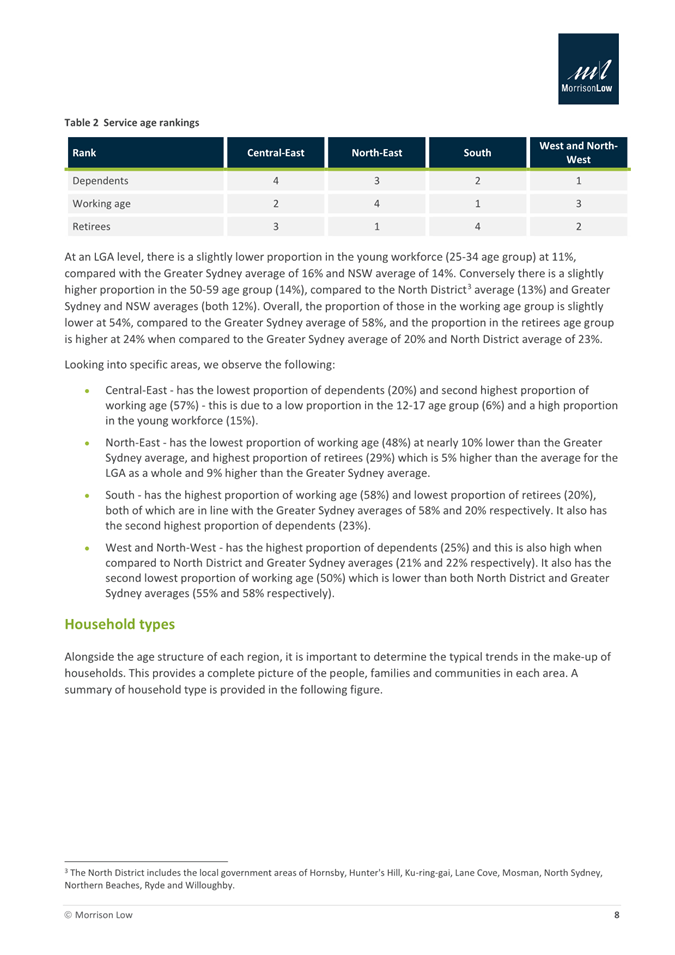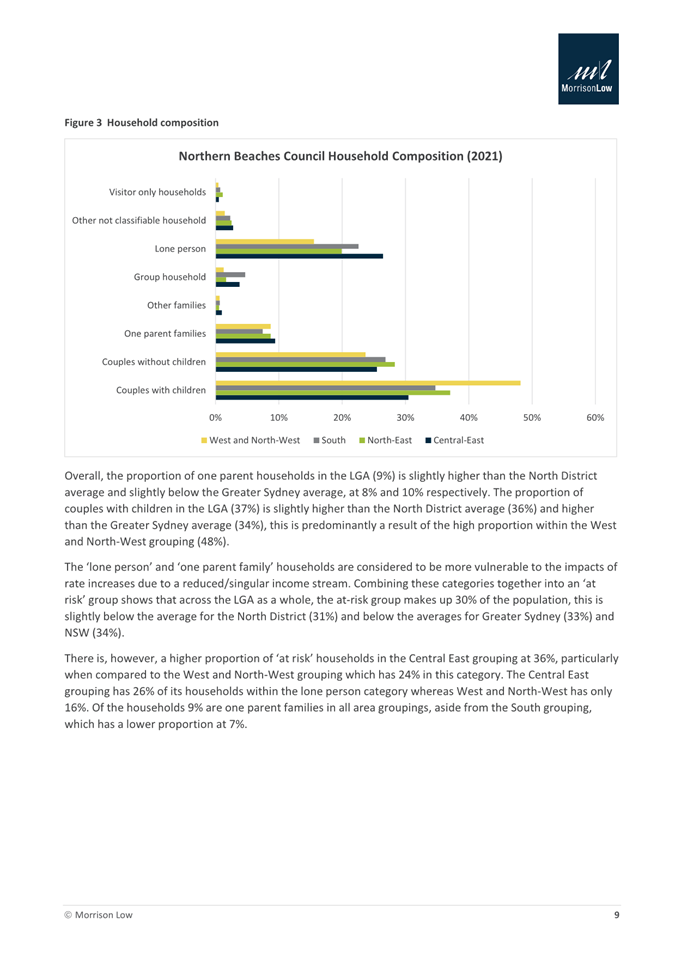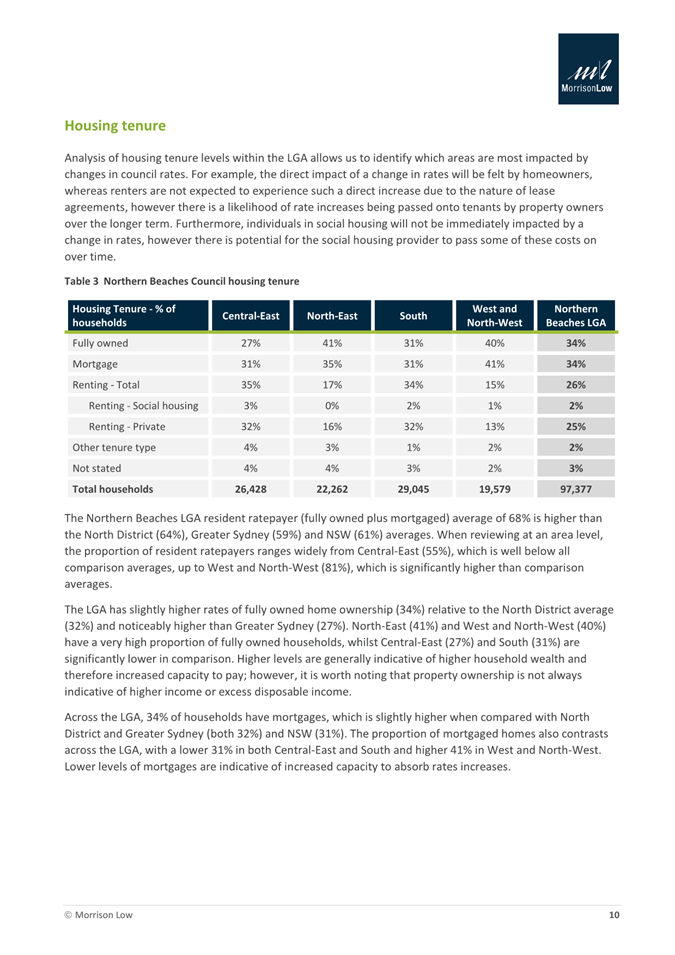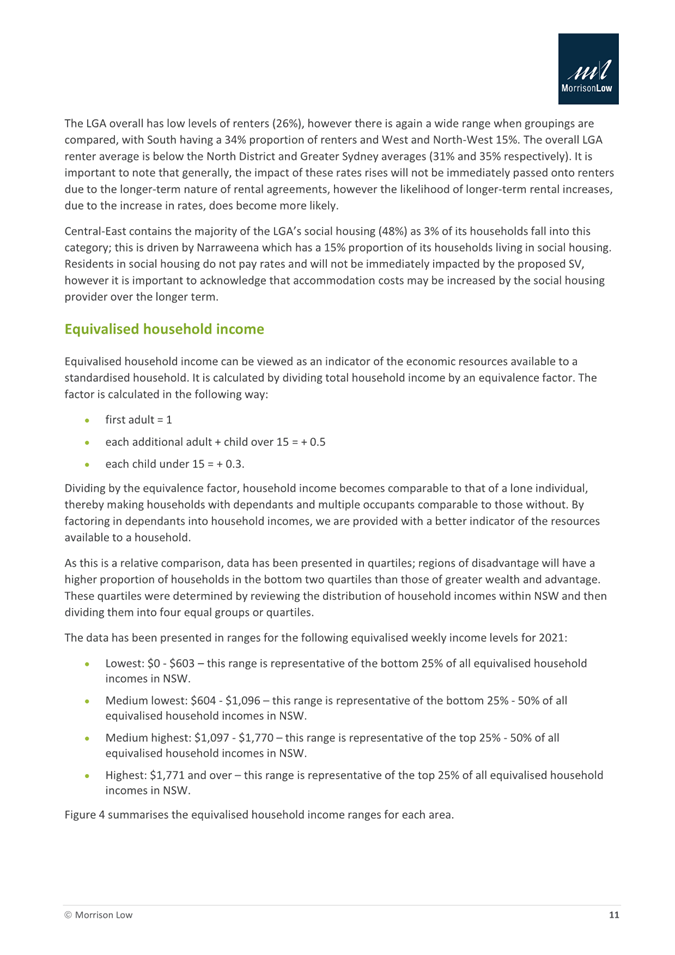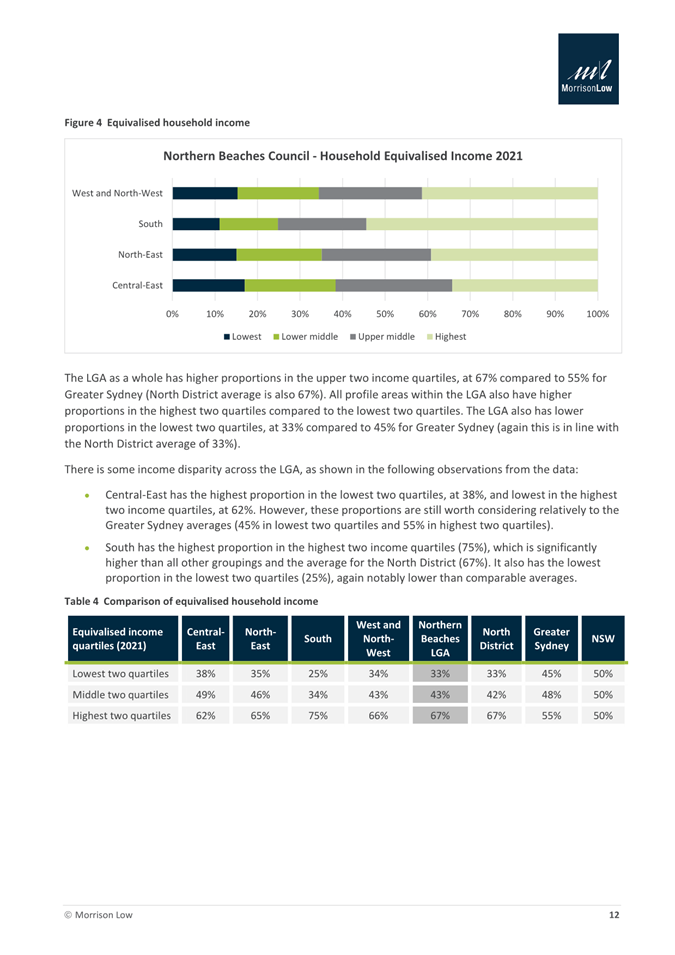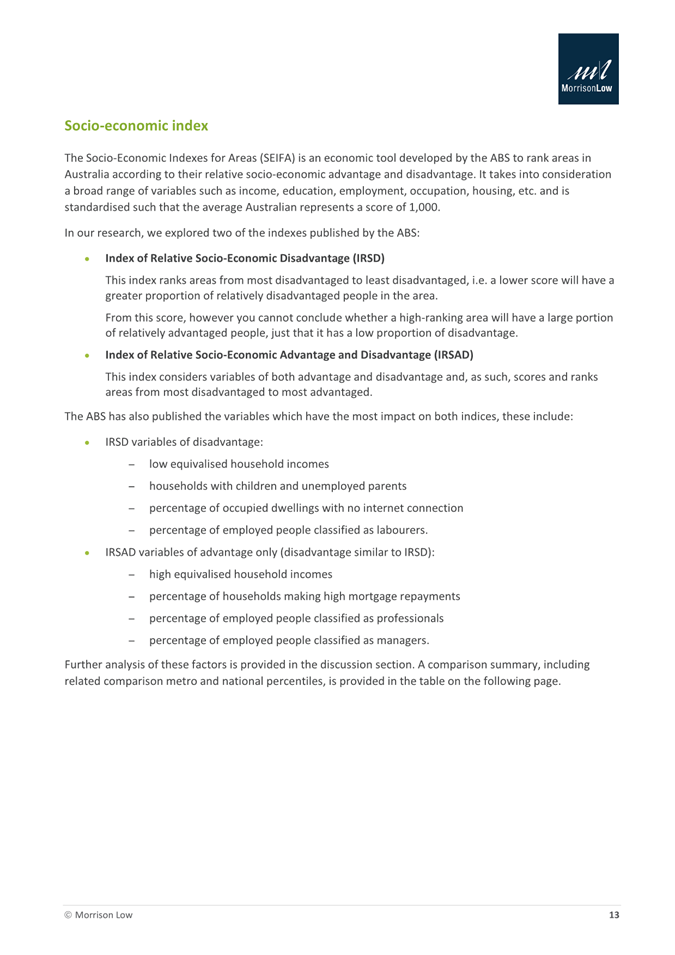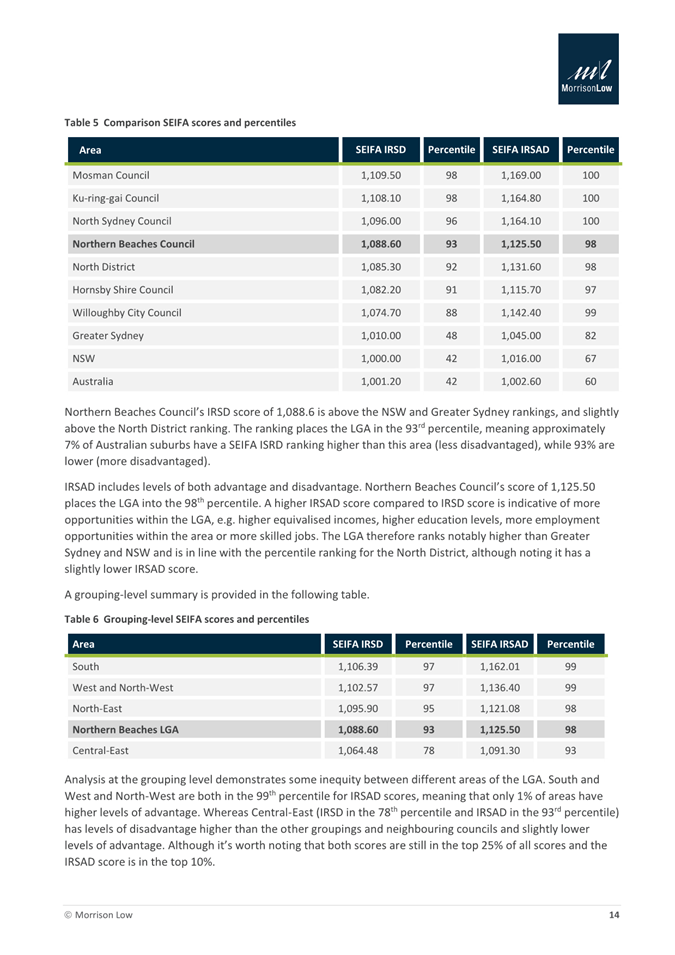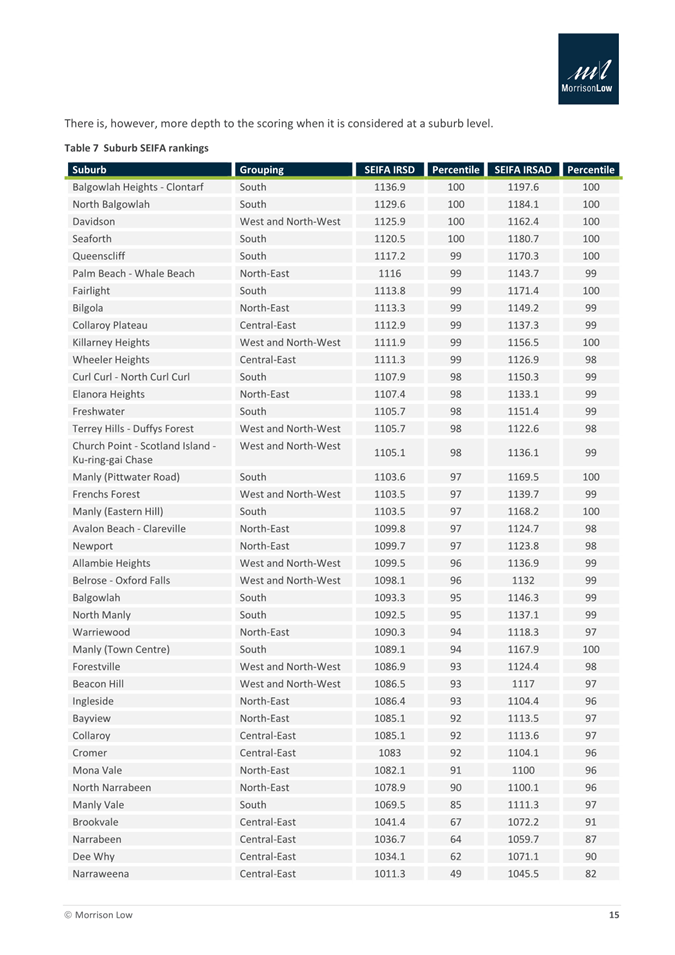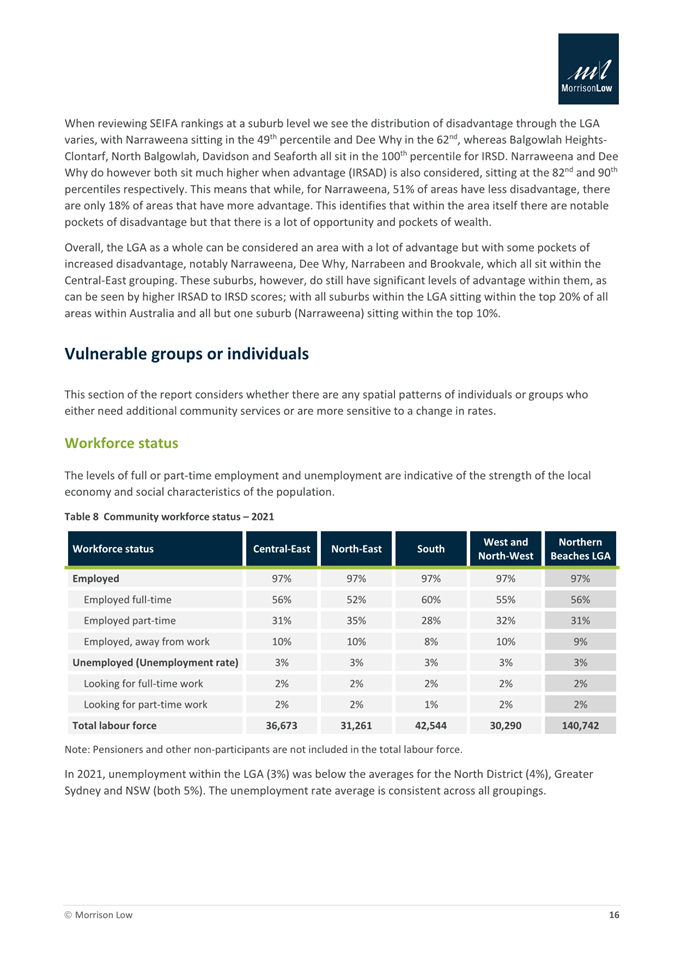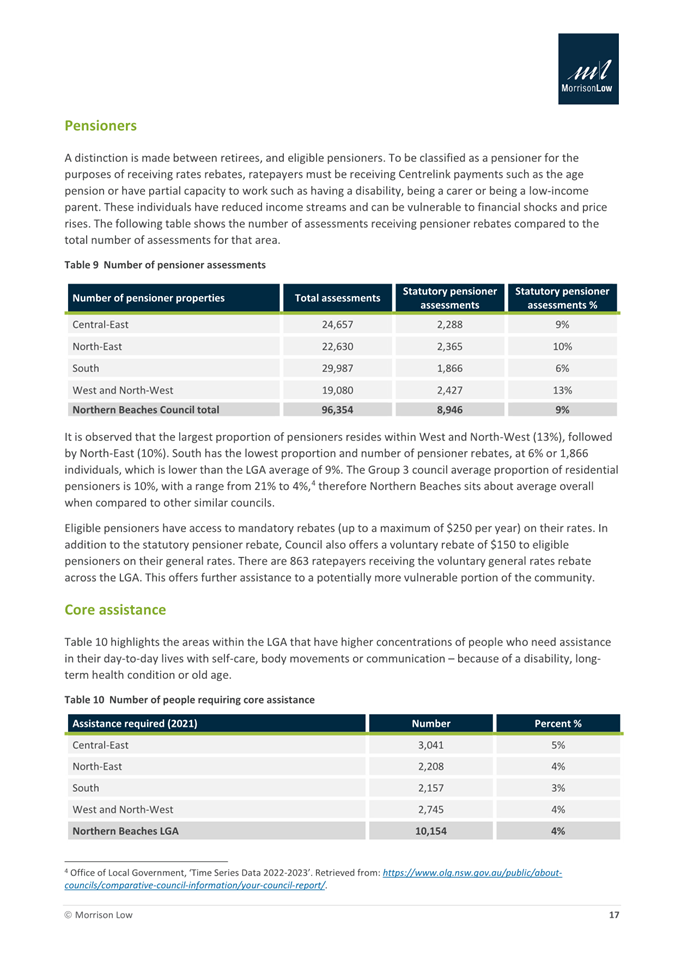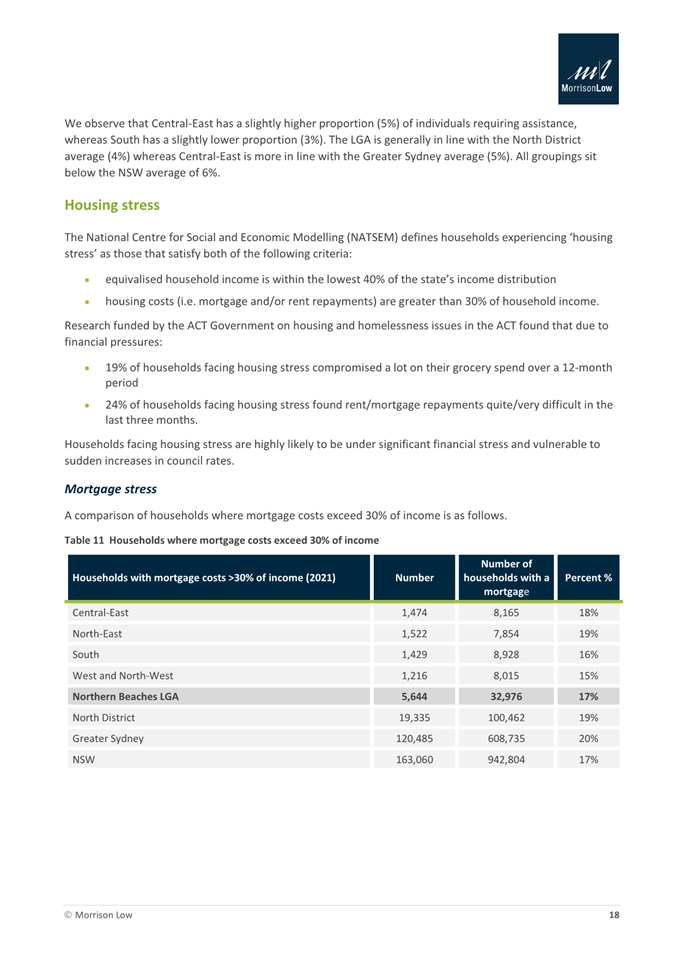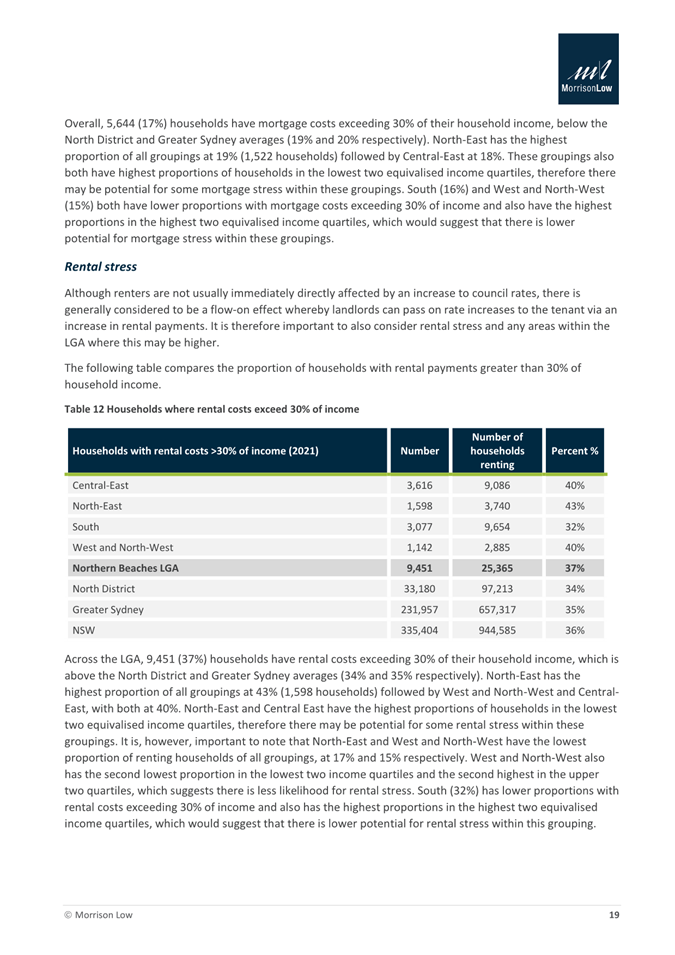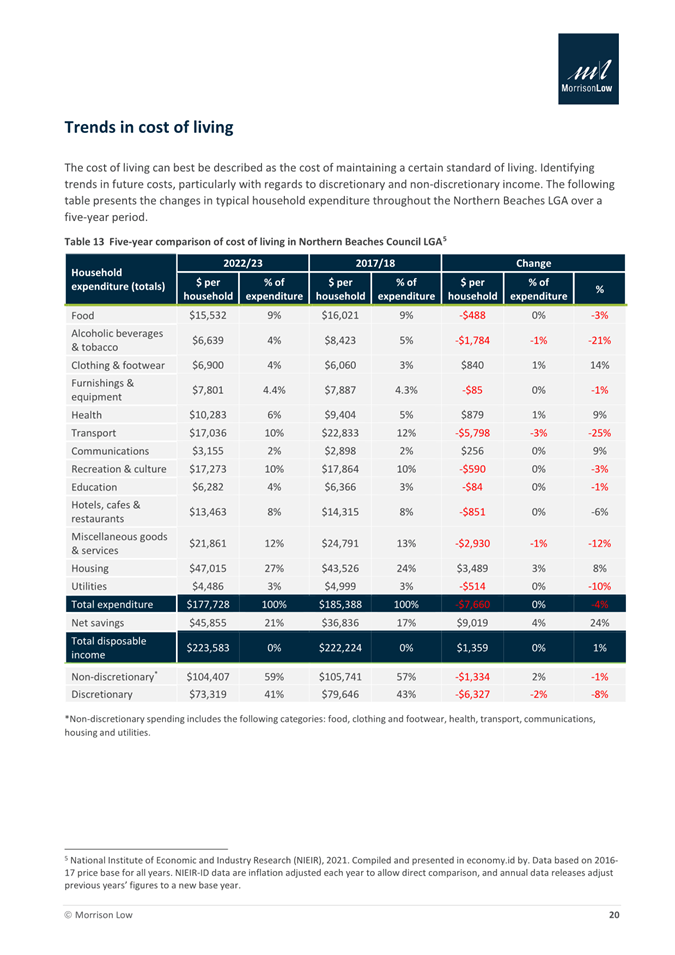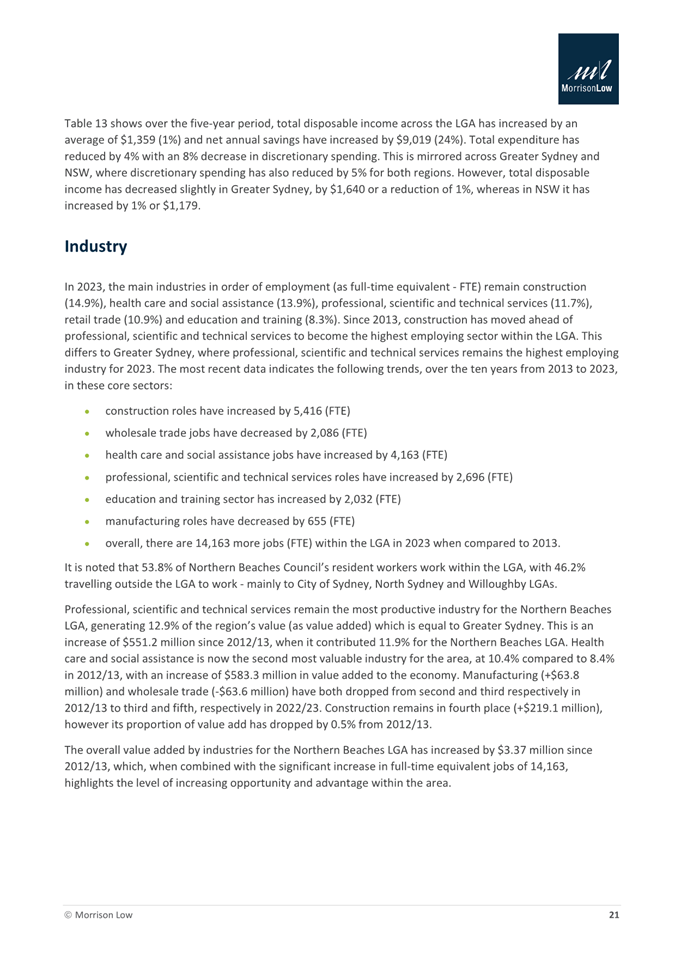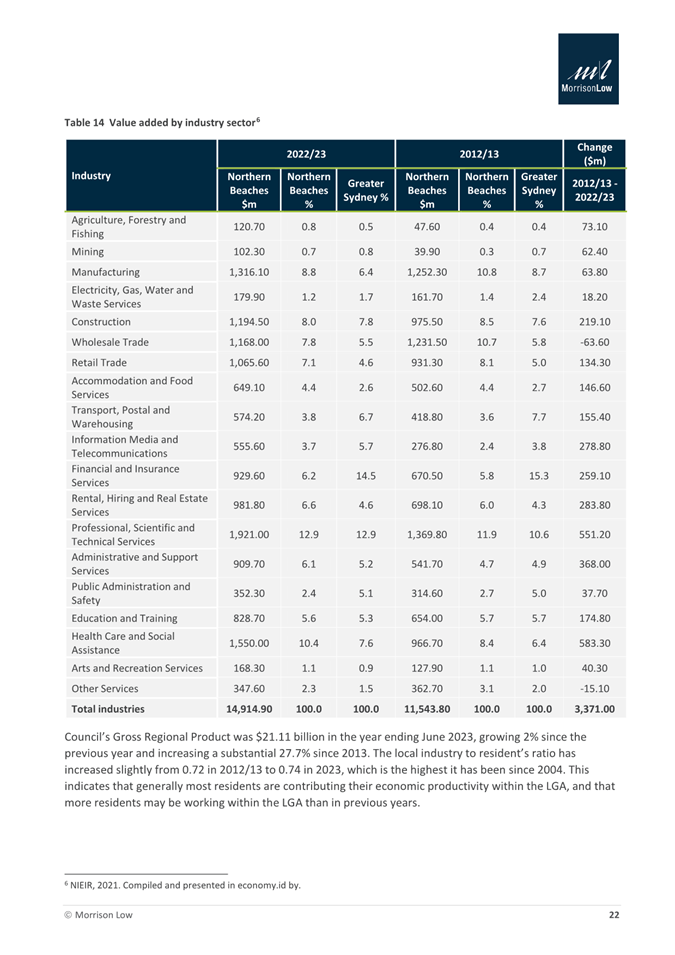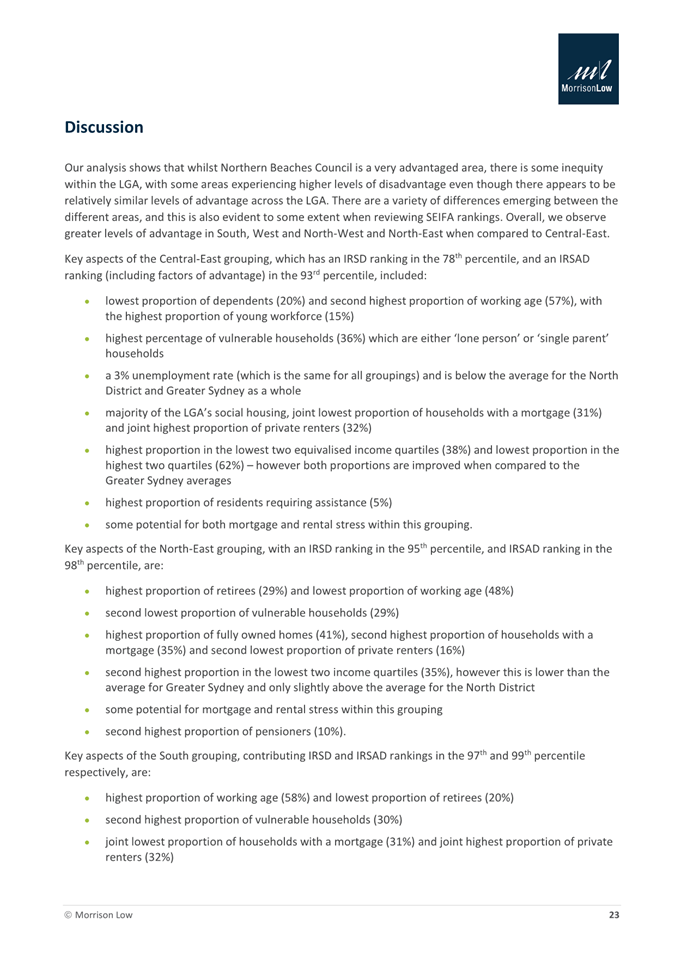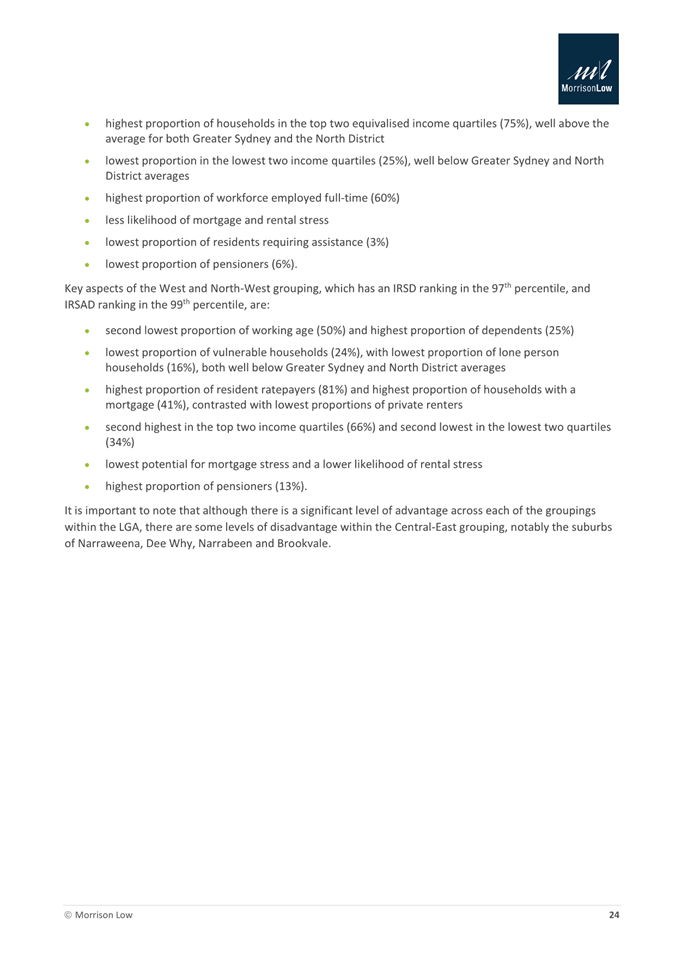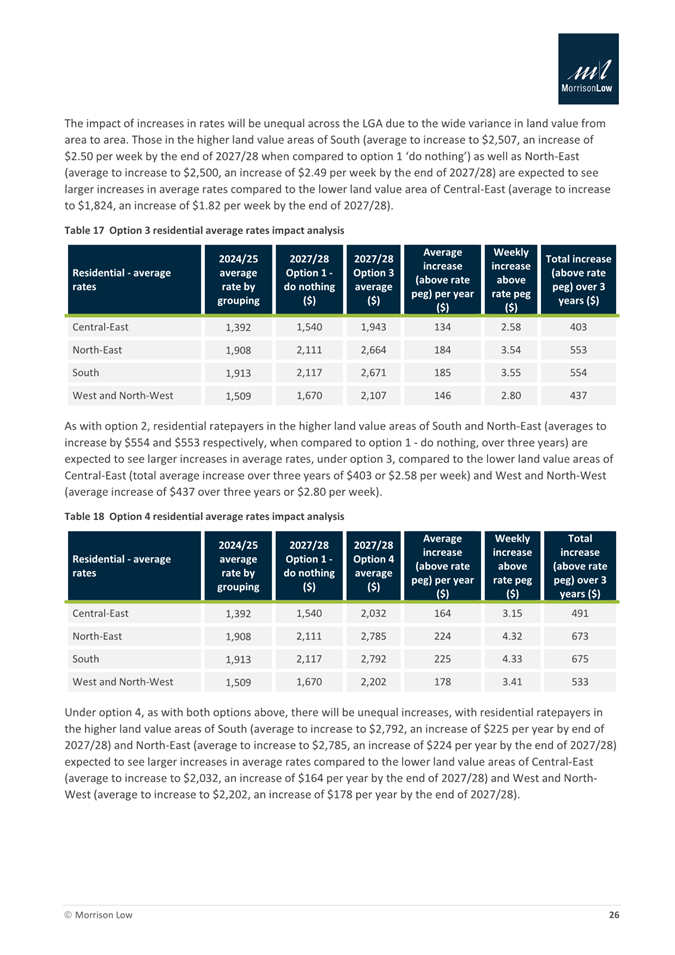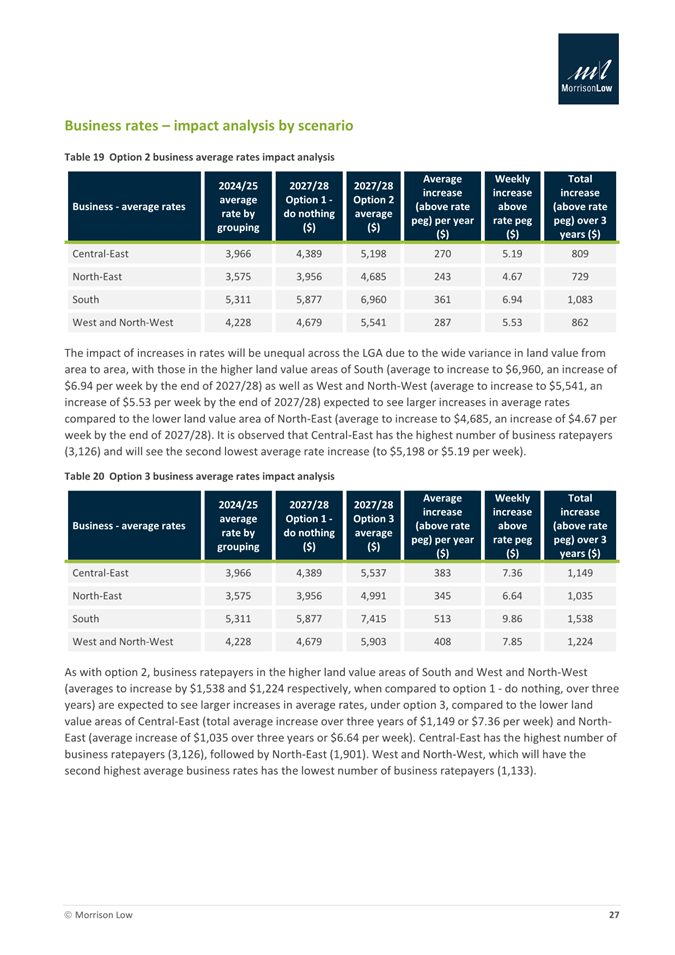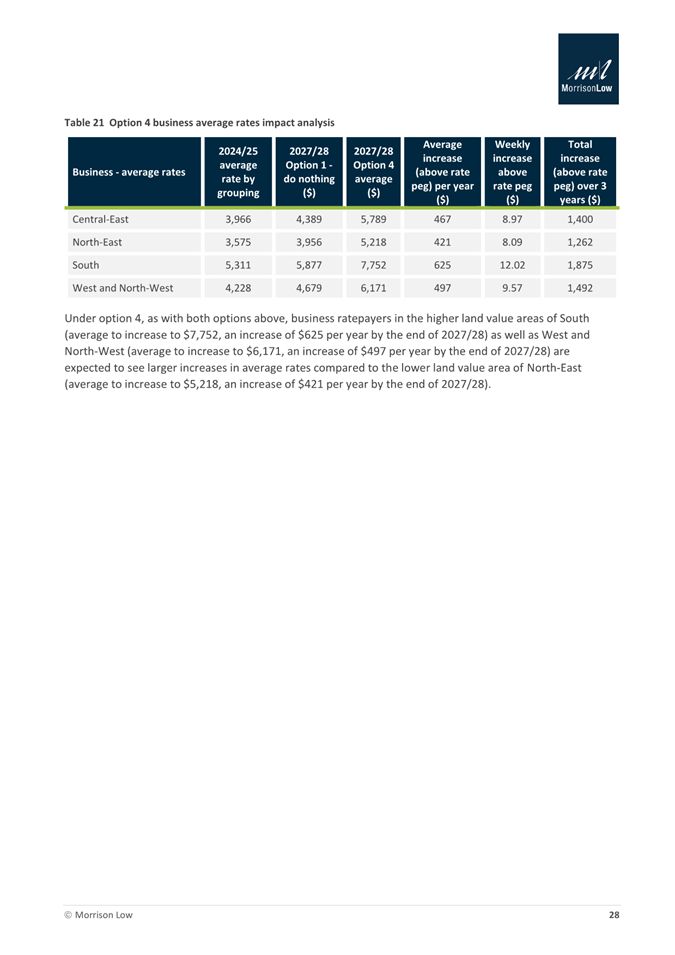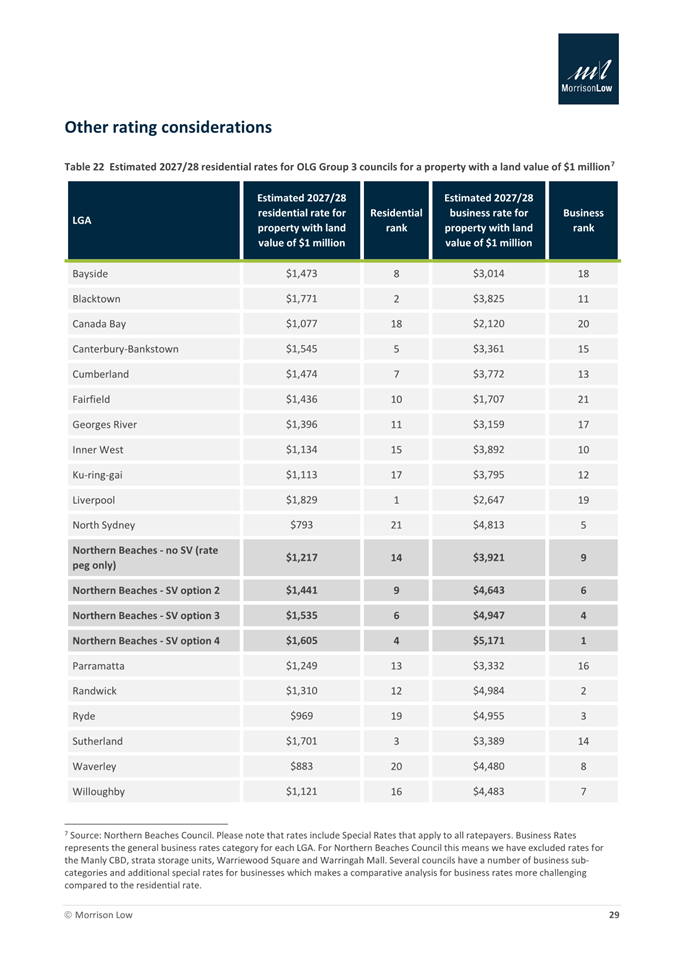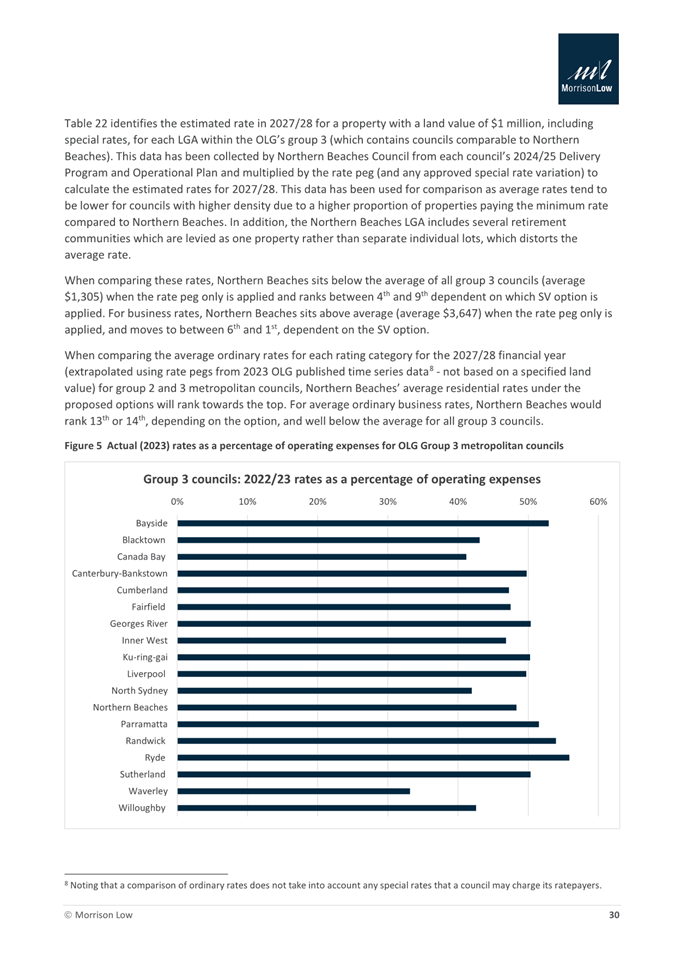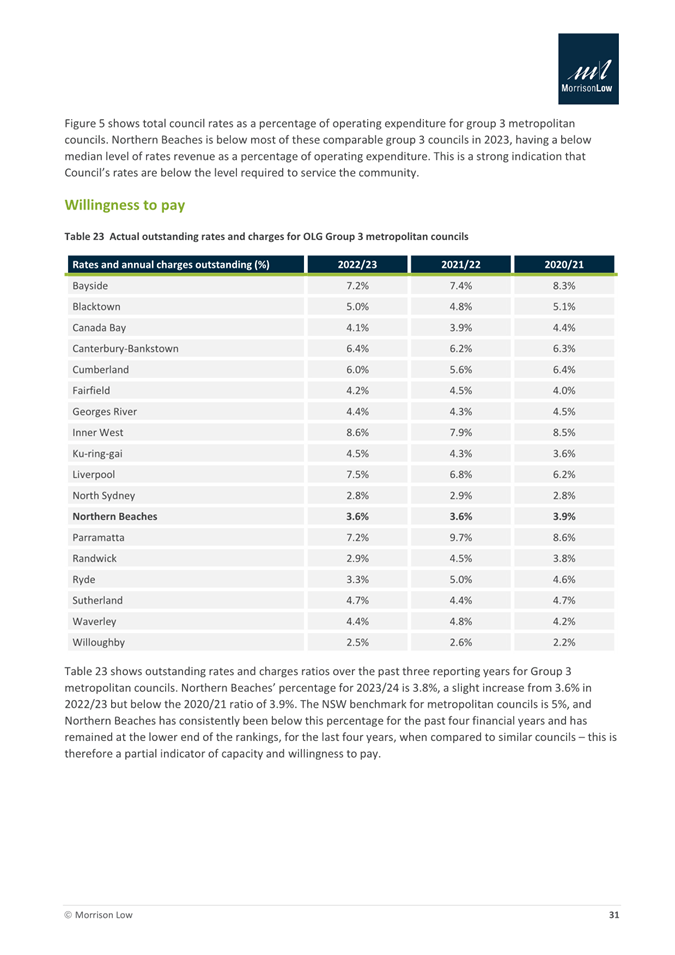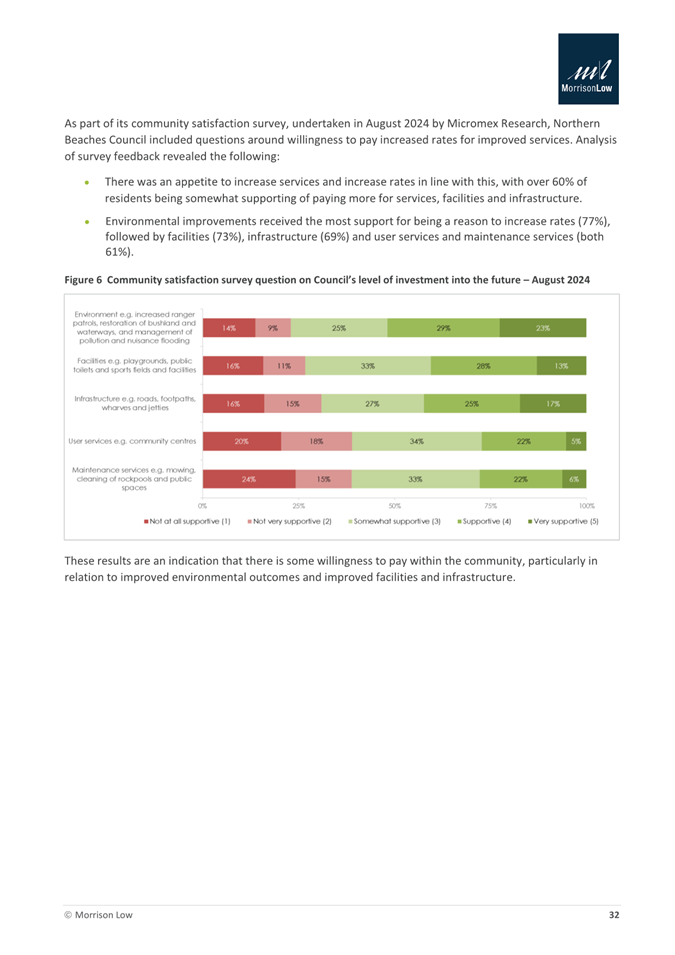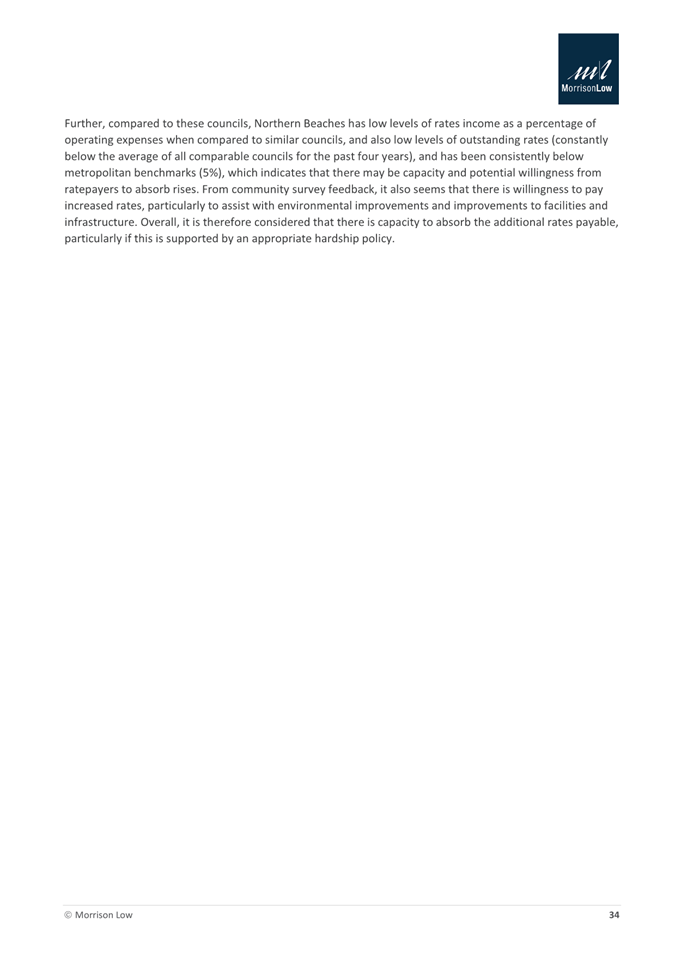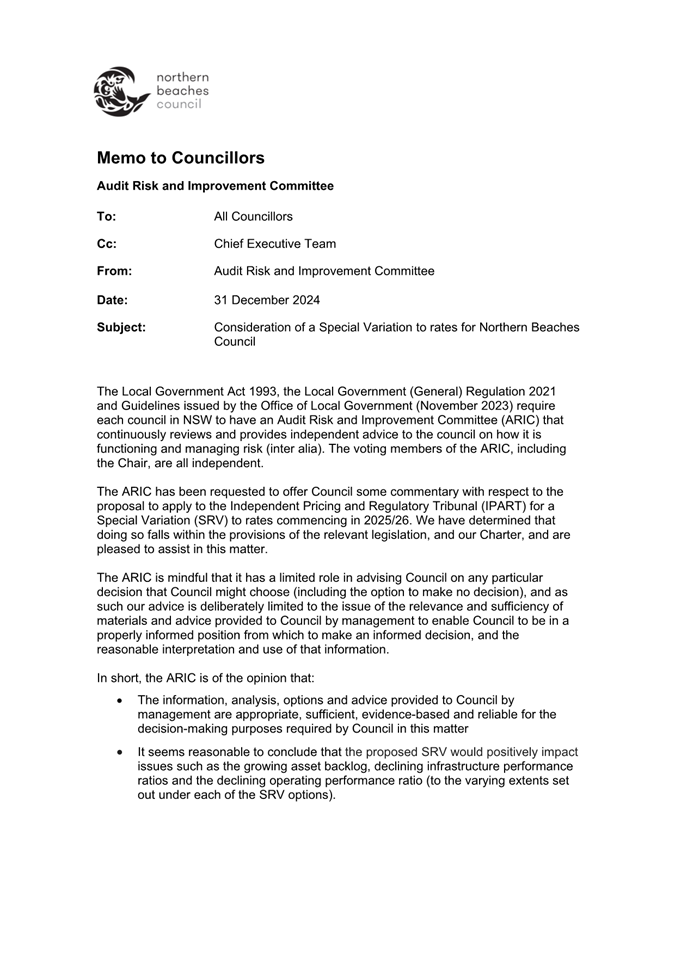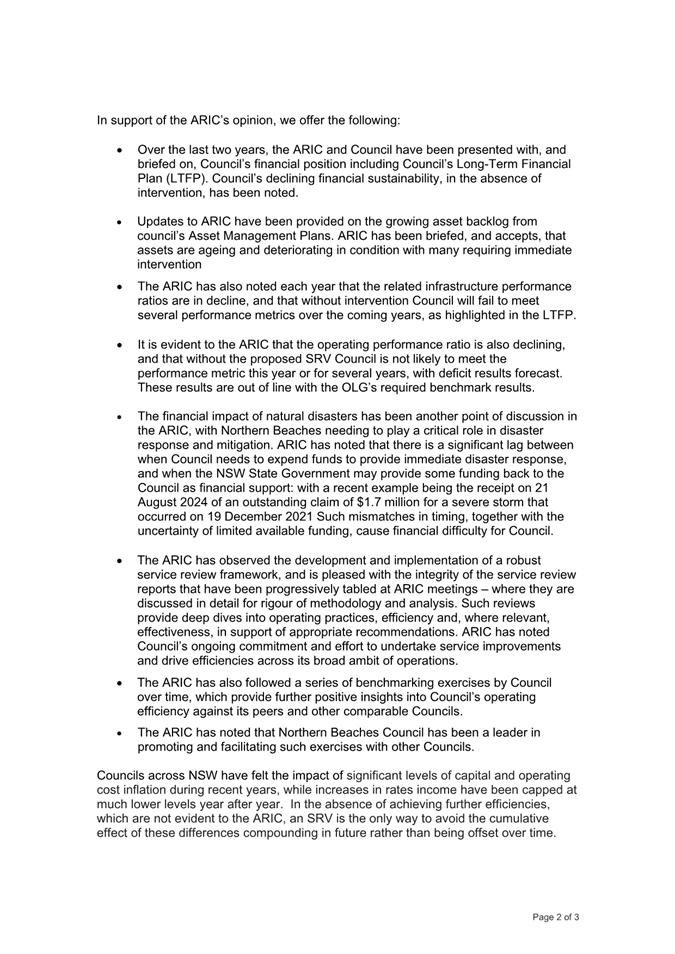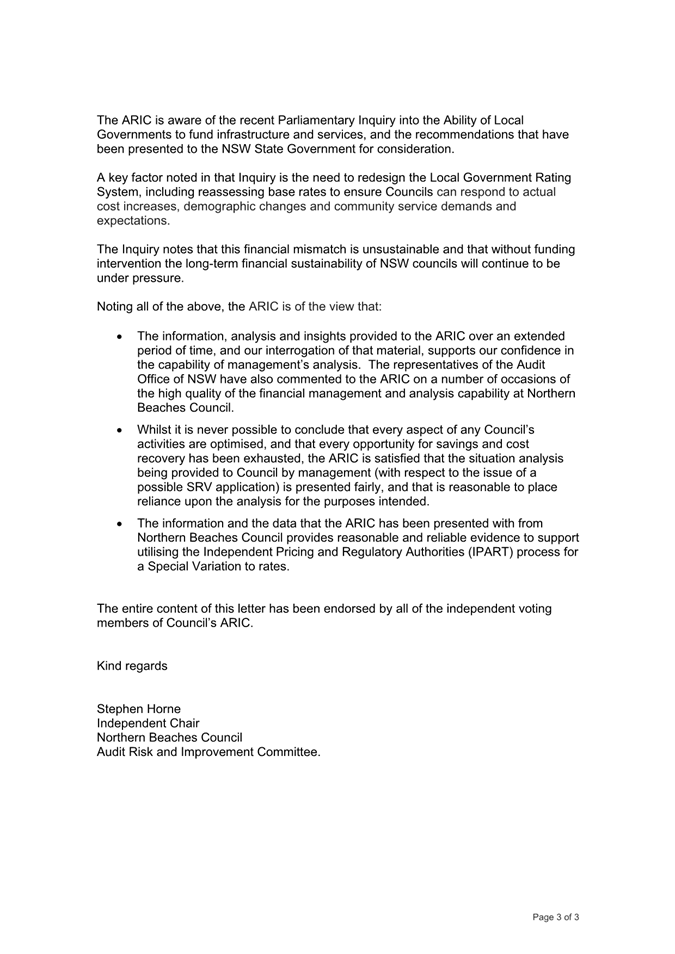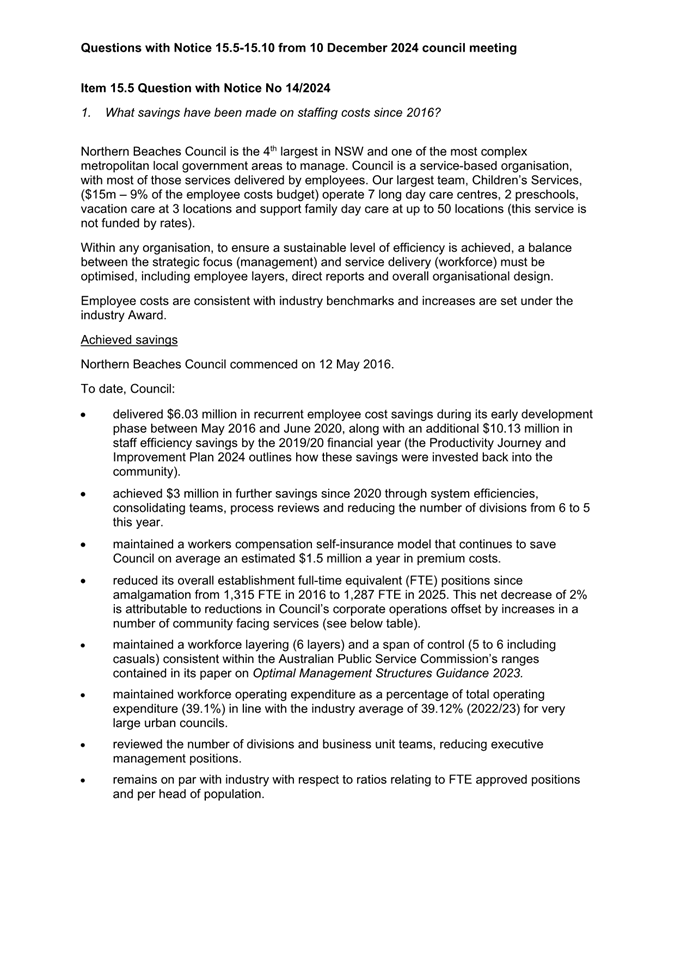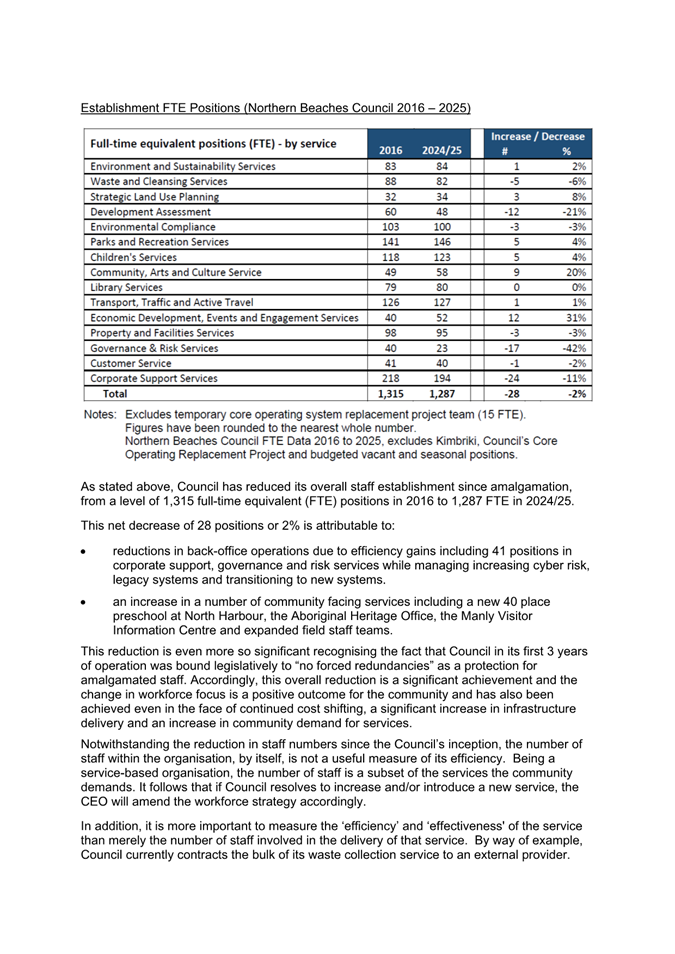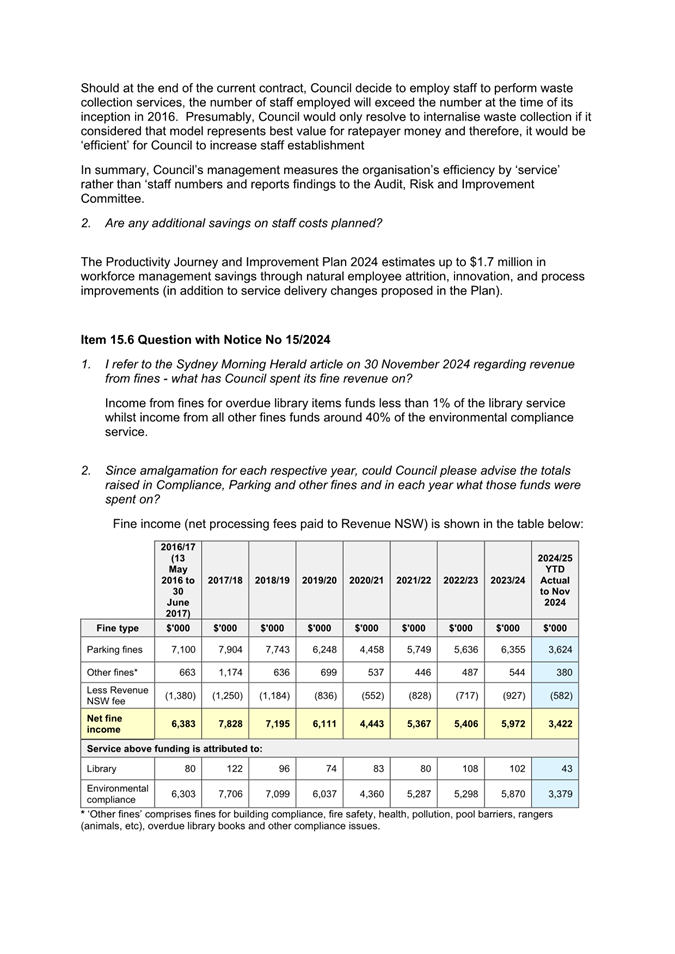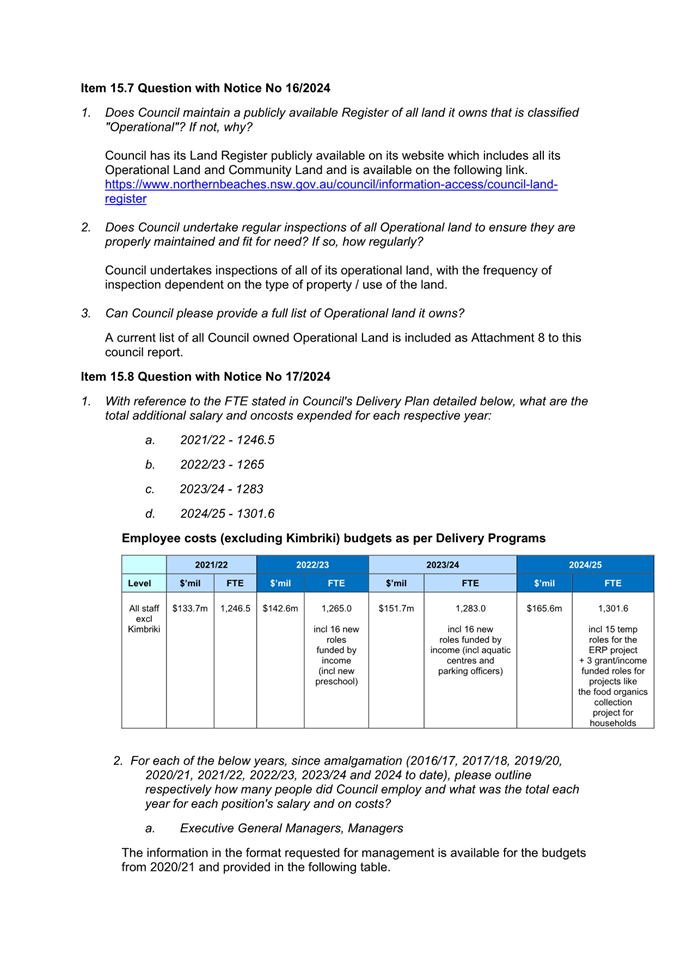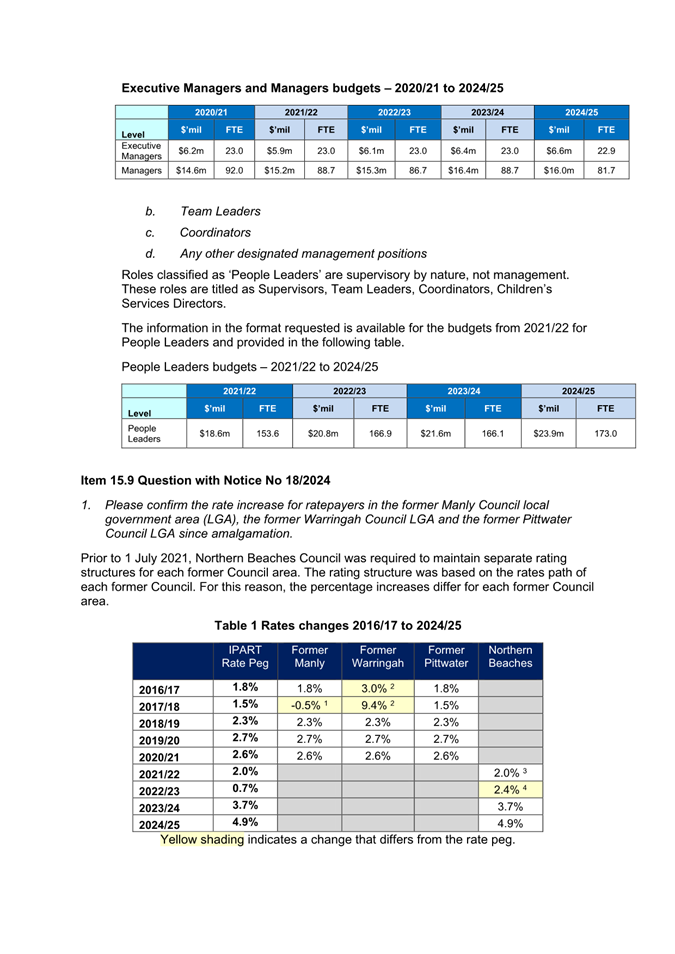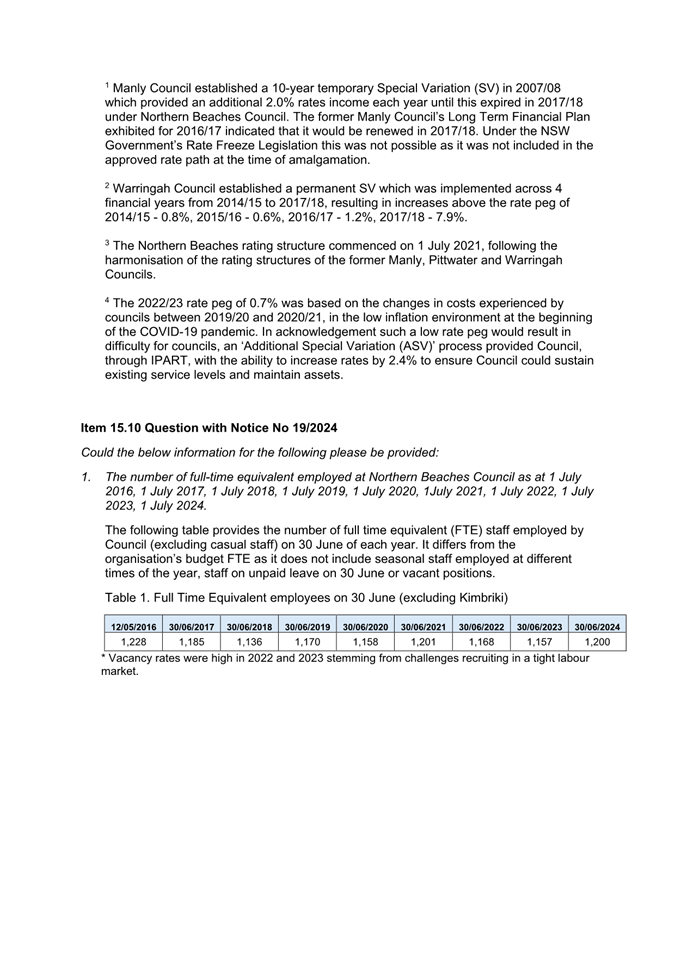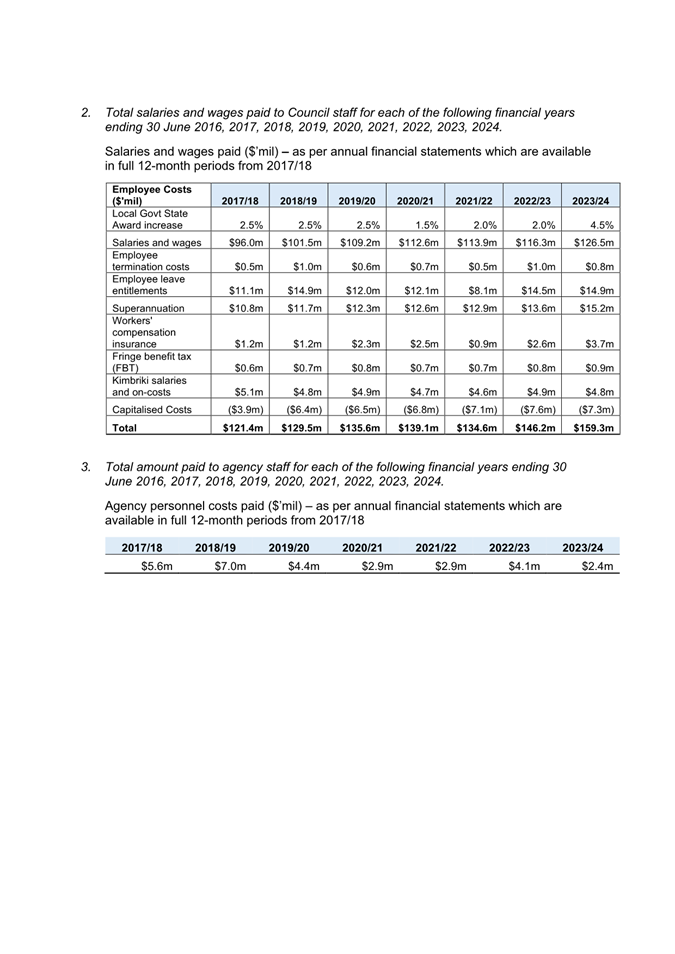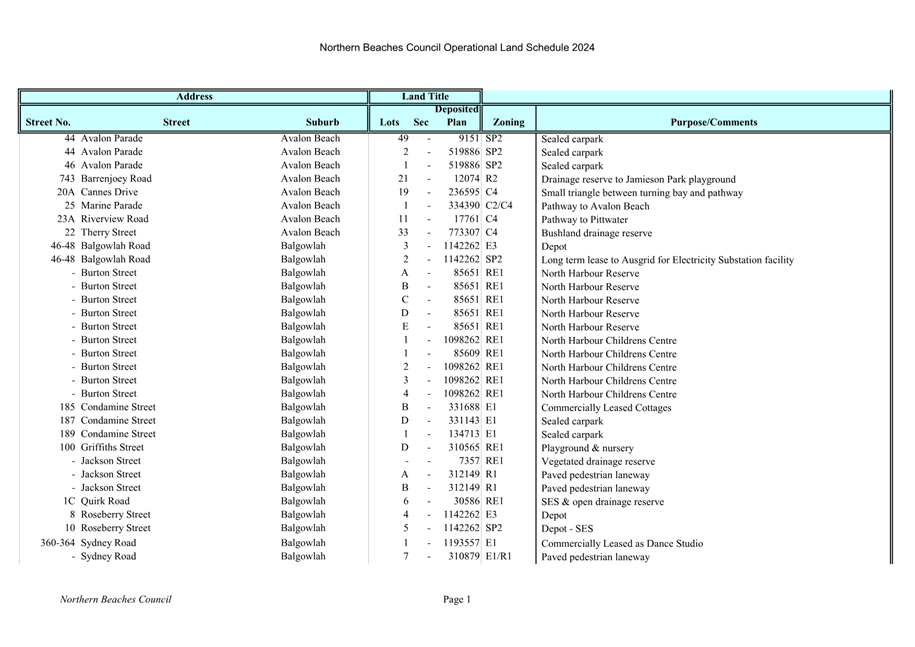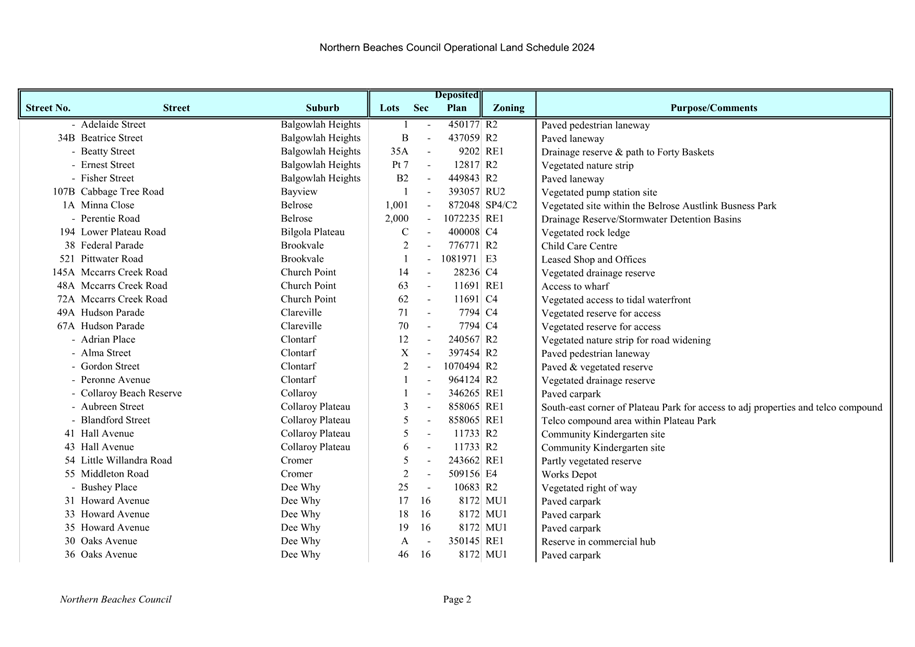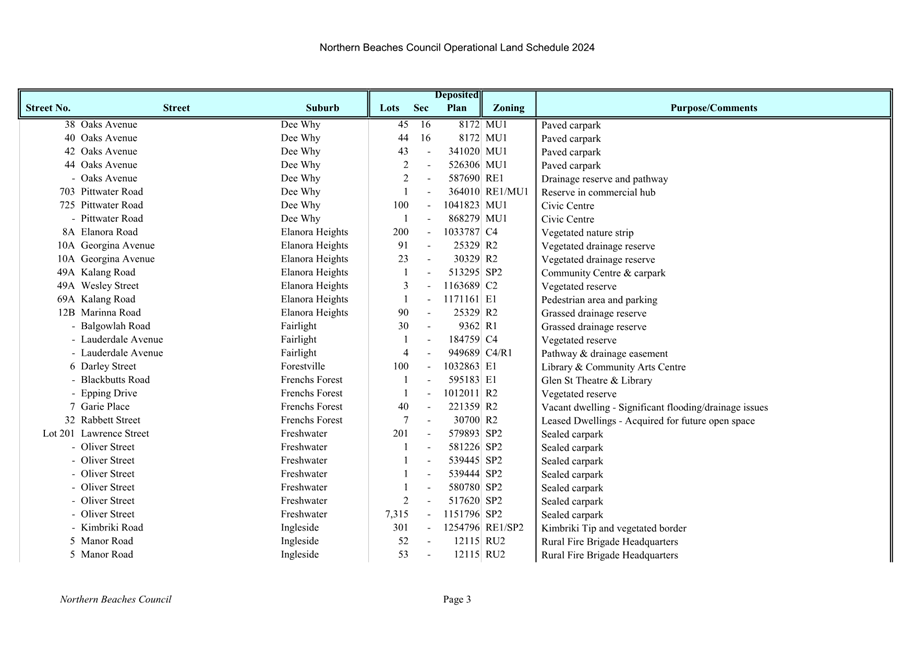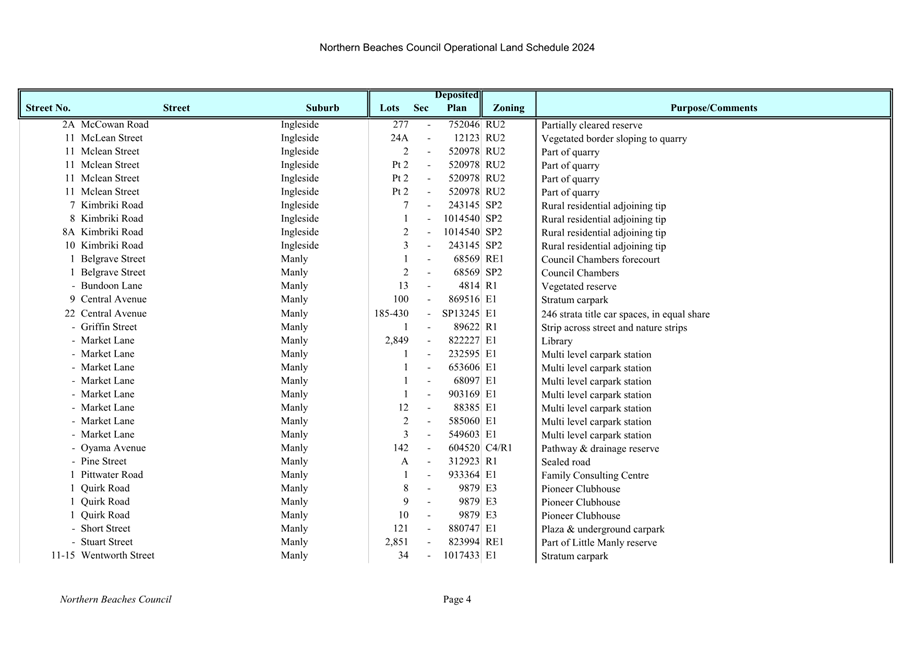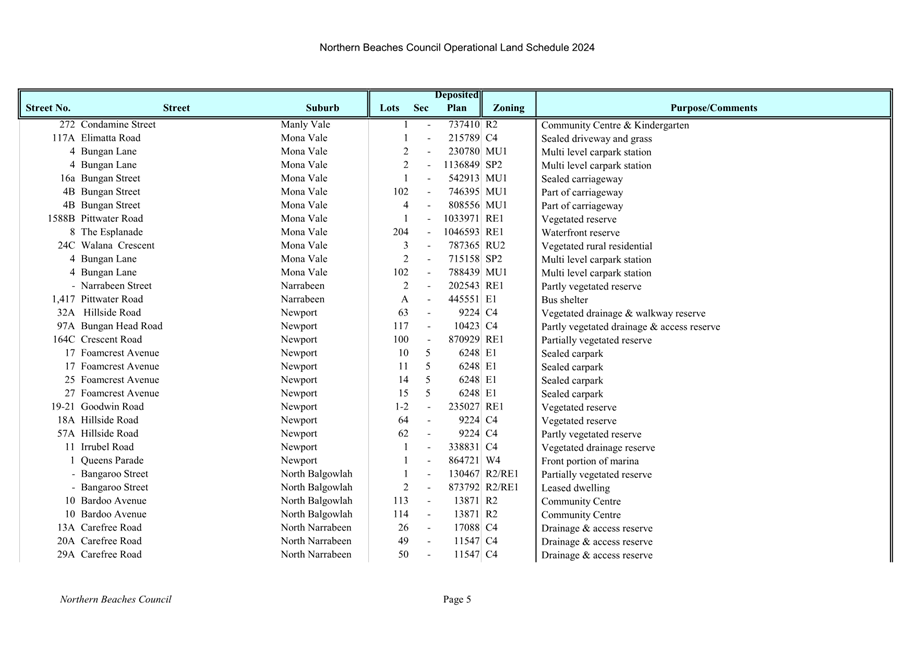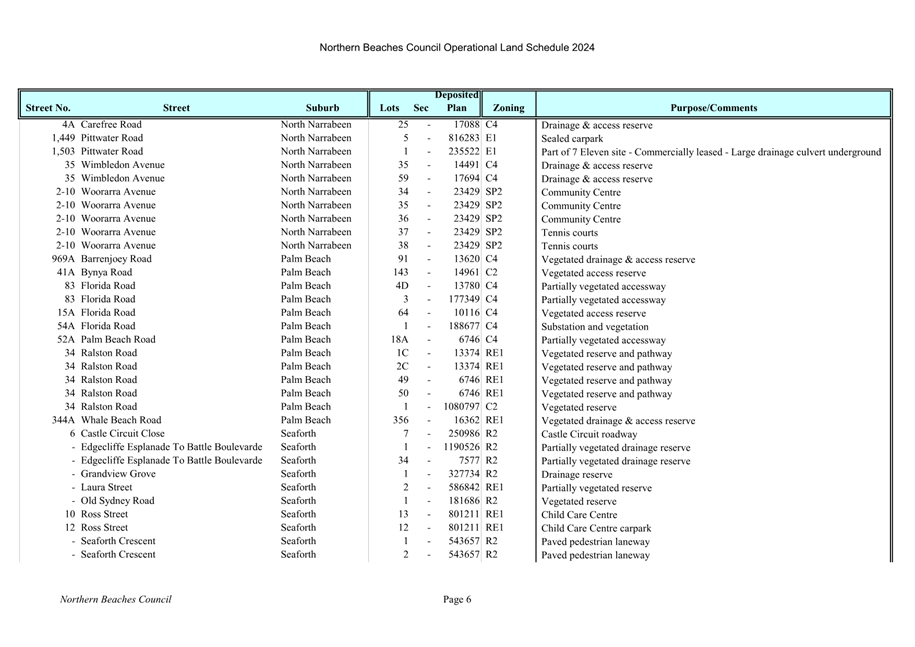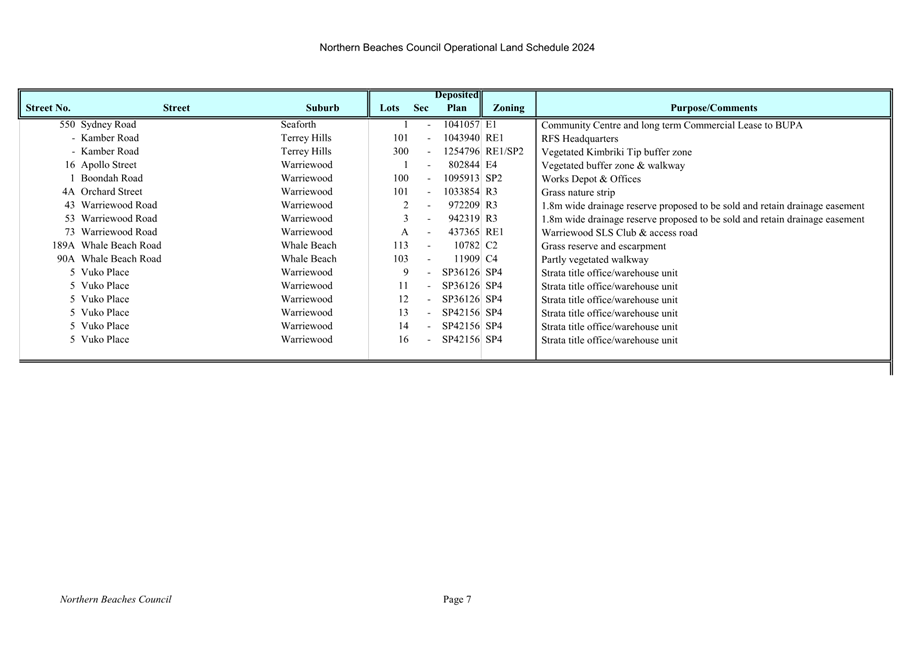7.0 Chief Executive Officer's Division Reports
|
ITEM 7.1 |
Special Variation to Rates - Approval to lodge an application to IPART |
Purpose
The purpose of this report is to inform Council of the outcome of the public exhibition of options for a special variation to rates, to adopt the revised Long-Term Financial Plan 2024-2034 and Addendum to the Delivery Program 2024-28 and Operational Plan 2024/25 and to lodge a special variation to rates application to the Independent Pricing and Regulatory Tribunal (IPART).
Executive Summary
· On 12 November 2024 Council resolved to undertake community engagement between 18 November 2024 and 12 January 2025 on a revised Long-Term Financial Plan 2024-2034 and Addendum to the Delivery Program 2024-28 and Operational Plan 2024/25 and proposed options for a special variation to rates.
· Council’s community engagement commenced with the launching of a 'Your Say‘ page outlining 4 options with resources, including fact sheets, videos and frequently asked questions.
· Community engagement has been extensive, utilising information stations across Council locations (including customer service centres, aquatic centres, early learning centres and libraries), print advertising through local publications, 10 pop up sessions in the community, resident and business webinars, a letter box drop to all 96,156 ratepayers and an email distribution to over 80,000 subscribers.
· Community responses were over 6,300 (survey and submissions) with a number of overarching themes surfacing including a desire to maintain services and infrastructure, a desire for improved services and infrastructure, requests to look further for savings and efficiencies, affordability, harnessing benefits of amalgamation and holding rates to inflation/peg.
· Council maintains its commitment to productivity savings and in an effort to reduce the burden on rates, has been on a continuous improvement journey since its inception in 2016. While these initiatives have assisted Council’s financial sustainability to date, they are not of a scale that can ensure its long-term financial security.
· The indepdnent voting members of Council’s Audit, Risk and Improvement Committee (ARIC) prepared a memo to Councillors advising, inter alia, that ”the information and the data presented to it (by management) provides reasonable and reliable evidence to support utilising the IPART process for a special variation to rates”.
· Minor amendments have been made to the draft Long-Term Financial Plan 2024-2034 and Addendum to the Delivery Program 2024-28 and Operational Plan 2024/25 to incorporate updated information being available since the draft documents were placed on exhibition, including the findings of the Capacity to Pay Report and the special variation engagement dates.
· Based on the need to maintain financial sustainability and to continue to deliver services and assets as expected by our community, it is recommended that Council apply to IPART for a cumulative rate increase of 39.6% (including peg) over 3 years commencing in 2025/26. The cumulative rate increase would comprise a special variation to rates of 29% and a rate peg of 10.7% (rounded to one decimal place) which would remain in Council’s rate base.
· Should Council endorse an application to IPART for a special variation to rates, an application including IPART’s Special Variation Application Part A and Part B and all necessary documentation including the revised Long-Term Financial Plan 2024-2034, and the Addendum to the Delivery Program 2024-28 and Operational Plan 2024/25 will be required to be lodged with IPART by 3 February 2025.
|
That Council: 1. Note the community engagement activities undertaken from 18 November 2024 to 12 January 2025 in relation to the revised Long-Term Financial Plan 2024-2034, Addendum to the Delivery Program 2024-28 and Operational Plan 2024/25 and special variation to rates options as required by the Independent Pricing and Regulatory Tribunal (IPART). 2. Note the community responses in respect of the community engagement undertaken in relation to the revised Long-Term Financial Plan 2024-2034, Addendum to the Delivery Program 2024-28 and Operational Plan 2024/25 and special variation options. 3. Note the opportunities for service reductions, property rationalisation and/or fee increase initiatives as outlined in this report are not of size and scale to reduce the need for a special variation to rates to maintain Council’s long term financial sustainability. 4. Note the memo from the independent members of the Audit, Risk and Improvement Committee in consideration of a special variation to rates for Northern Beaches Council and their acknowledgement that a special variation is a sound financial initiative to maintain Council’s long term financial sustainability. 5. Note the NSW Parliament’s Standing Committee on State Development ‘Inquiry into the ability of local government to fund infrastructure and services 2024’ recommended changes to the local government rating system to address some of the cost pressures local governments face in delivering community services and assets and infrastructure. 6. Note that the special variation to rates application to IPART is consistent with Council’s responsibility under the Local Government Act 1993 to continue existing services, maintain and improve community infrastructure, support environmental and natural risk reduction programs and strengthen financial sustainability. 7. Adopt Option 3 of the Addendum to the Delivery Program 2024-28 and Operational Plan 2024/25 included within Attachment 2. 8. Adopt the revised Long-Term Financial Plan 2024-2034 at Attachment 3. 9. Apply to IPART for a permanent increase in rates income for the period from 2025/26 to 2027/28 (inclusive) of 39.6% (Option 3 ‘Improve Services’) under section 508A of the Local Government Act 1993, consisting of annual increases as set out below: a. Year 2025/26 – 12.1% increase (8.3% + rate peg of 3.8%) b. Year 2026/27 – 11.7% increase (8.3% + assumed rate peg of 3.4%) c. Year 2027/28 – 11.5% increase (8.4% + assumed rate peg of 3.1%) 10. Delegate authority to the Chief Executive Officer to lodge the application for a special variation to rates to IPART, including IPART’s Special Variation Application Forms Part A and Part B and all other necessary documentation such as the Addendum to the Delivery Program 2024-28 and Operational Plan 2024/25 for the adopted option at Attachment 2, Long-Term Financial Plan 2024-2034 at Attachment 3, Productivity Journey and Improvement Plan 2024 at Attachment 4 and Capacity to Pay Report at Attachment 5. |
Background
A special variation (SV) to rates will be required if Council intends to continue to meet community expectations and deliver existing services and service levels as well as ensure availability of funding for new and upgraded assets, environmental outcomes, loans and unforeseen events such as storms, and remain financially sustainable in the long-term.
Accordingly, on 12 November 2024 Council resolved (Resolution 289/24) to:
1. Approve community engagement to be undertaken between mid-November 2024 and mid-January 2025 on proposed options for a Special Variation to rates.
2. Endorse community engagement on the below options for a Special Variation to rates:
a. Option 1 Reduce service - Rate peg only (current path)
b. Option 2 Maintain service - Rate peg + 6% pa over 3 years
c. Option 3 Improve service - Rate peg + 8.3% pa over 2 years and 8.4% in year 3
d. Option 4 Increase service - Rate peg + 10% pa over 3 years.
3. Endorse the Community Engagement Plan.
4. Endorse the Delivery Program 2024-2028 and Operational Plan 2024/25 draft Addendums for options of a Special Variation to rates and revised Long-Term Financial Plan 2024-2034 for public exhibition during the community engagement period.
5. Note that the outcomes of the community engagement process will be reported to Council at an extraordinary meeting to be held in January 2025, with Council to determine whether an application should be submitted to IPART to apply for a Special Variation to rates to support Council’s financial sustainability.
On 18 November 2024 Council commenced engagement with the community.
Further to the above, on 10 December 2024, Council was provided with an update on the progress of the community engagement. Council noted the update, resolving (Resolution 316/24):
That:
1. Council note the community engagement activities undertaken to date and the updated Preliminary Productivity Journey and Improvement Plan 2024 at Attachment 1.
2. An extraordinary meeting of Council be held at 6pm on 28 January 2025 to consider whether to proceed with an application to the Independent Pricing and Regulatory Tribunal (IPART) for a Special Variation to rates.
a. opportunities to cut costs by rationalising its operational properties, particularly those that are currently occupied for administrative purposes
b. opportunities to cut costs by reviewing expenditure on services, organisational structure (noting that pursuant to s333 of the Local Government Act 1993, Council must determine the organisational structure within one year of an ordinary Council election) and operational efficiencies
c. send a link to the Asset Management Plan
d. any other cost cutting opportunities the CEO thinks fit.
4. The CEO, write to all local State and Federal MPs as well as all Senators from NSW:
a. raising its concern as to the lack of grant funding to the Northern Beaches, Council’s current financial situation, possible application for a SRV, and request all elected representatives lobby State and Federal Governments for grants to assist with infrastructure, community and sporting groups on the Northern Beaches
b. advocating for the timely review and acceptance of the recommendations of the Standing Committee on State Development Report titled Ability of local governments to fund infrastructure and services.
5. Council prepare a short and succinct explanation for our community covering: ‘This is what we need, and this is what we have done’:
a. a further video and one-page explainer highlighting:
i. the cost savings we have achieved since amalgamation including through productivity gains, staff reductions, paying off debts etc.
ii. what we have already done to ‘tighten our belts’
iii. the amount we pay the State Government in levies and fees
iv. success in applying for grants to achieve major projects and examples
v. State and Federal Government grants are being reduced
vi. whether we need to apply for a Special Rate Variation.
b. promote this new material extensively through the Mayor’s message, social media and the website, considering what can be done to reach people who do not use technology.
Actions required by Resolution 316/24 are either included in this report, have been prepared and added to Council’s Your Say engagement page and/or sent electronically to further assist with the distribution of information to the community concerning Council’s special variation to rates. The Ministerial letters were issued on 16 December 2024.
Community engagement concluded after 8 weeks on 12 January 2025, with a summary of responses outlined in this report, and the full Community and Stakeholder Engagement Report (Attachment 1).
At the 10 December 2024 Council meeting, commitment was also given to providing responses to the published Questions With Notice Items 15.5 – 15.10 at this extraordinary meeting of Council, rather than the next ordinary meeting of Council in February, given the relevance of these questions to the consideration of a special variation to rates. The Questions With Notice are shown below, with responses to each provided in Attachment 7.
15.5 Question with Notice No 14/2024 – Staffing Expenditure
1. What savings have been made on staffing costs since 2016?
2. Are any additional savings on staff costs planned?
15.6 Question with Notice No 15/2024 - Council Revenue from Parking, Compliance and other Fines and use of such funds
1. I refer to the Sydney Morning Herald article on 30 November 2024 regarding revenue from fines - what has Council spent its fine revenue on?
2. Since amalgamation for each respective year, could Council please advise the totals raised in Compliance, Parking and other Fines and in each year what those funds were spent on?
15.7 Question with Notice No 16/2024 - Operational Land owned by Northern Beaches Council
1. Does Council maintain a publicly available Register of all land it owns that is classified "Operational"? If not, why?
2. Does Council undertake regular inspections of all Operational land to ensure they are properly maintained and fit for need? If so, how regularly?
3. Can Council please provide a full list of Operational land it owns?
15.8 Question with Notice No 17/2024 - Increases in Full Time Staff
1. With reference to the FTE stated in Council's Delivery Plan detailed below, what are the total additional salary and oncosts expended for each respective year:
a. 2021/22 - 1246.5
b. 2022/23 - 1265
c. 2023/24 - 1283
d. 2024/25 - 1301.6
2. For each of the below years, since amalgamation (2016/17, 2017/18, 2019/20, 2020/21, 2021/22, 2022/23, 2023/24 and 2024 to date), please outline respectively how many people did Council employ and what was the total each year for each position's salary and on costs?
a. Executive General Managers, Managers
b. Team Leaders
c. Coordinators
d. Any other designated management positions
15.9 Question with Notice No 18/2024 - Rate increases
Please confirm the rate increase for ratepayers in the former Manly Council local government area (LGA), the former Warringah Council LGA and the former Pittwater Council LGA since amalgamation.
15.10 Question with Notice No 19/2024 - Staffing and Expenditure
Could the below information for the following please be provided:
1. The number of full-time equivalent employed at Northern Beaches Council as at 1 July 2016, 1 July 2017, 1 July 2018, 1 July 2019, 1 July 2020, 1July 2021, 1 July 2022, 1 July 2023, 1 July 2024.
2. Total salaries and wages paid to Council staff for each of the following financial years ending 30 June 2016, 2017, 2018, 2019, 2020, 2021, 2022, 2023, 2024.
3. Total amount paid to agency staff for each of the following financial years ending 30 June 2016, 2017, 2018, 2019, 2020, 2021, 2022, 2023, 2024.
Discussion
Financial position and the need for a special variation to rates
Council’s financial sustainability is at risk. The Long-Term Financial Plan (LTFP) highlighted that high inflation, severe weather events, the COVID-19 pandemic and significant increases in costs like the Emergency Services Levy (ESL), insurance and gas, alongside constraints on rates income is placing significant pressure on Council’s ability to maintain infrastructure and services at the required level.
Council has undertaken a number of measures to assist in offsetting cost pressures in recent years including fee reviews, achieving efficiency gains and cost savings. This includes $0.4 million in the development of the 2024/25 budget along with over $2 million in the previous 2 financial years. While opportunities are continuously sought, these measures alone are unable to fully offset the impact of recent high inflation levels.
Sydney’s inflation over the 4 years to 30 June 2024 was almost double the increase in rates income, which is equivalent to an accumulative variance of 10.2%, or $19.1 million in rates income. When rates income is compared to the cost of infrastructure indicated by the Producer Price Index (PPI) for Roads and Bridge Construction, the gap grows to $23.6 million (12.6%) over the same period. This gap is now built into Council’s ongoing rates income, meaning the rate base will be permanently lower without intervention.

Rates are local taxes that are levied on the basis of property (land) values, issued by the Valuer General. They are Council’s main source of income, currently being 44% of total revenue.
Each year the NSW Government (through IPART) determines the percentage figure by which councils can increase their rates income – this is called the rate peg.
The rate peg is mostly based on the change in the Base Cost index – like a CPI for local government. However historically it has not reflected the rising costs of Council’s materials, contracts, and construction. As explained above, over the past 4 years to 30 June 2024, Sydney’s CPI has been almost double the increase in rates income, meaning the Base Cost index was not a reliable measure of Council’s actual costs.
In August 2023 IPART undertook a review of the rate peg methodology, acknowledging “aspects of the way IPART calculated the rate peg were not suited to a volatile economic climate” and also resulted in an “under-recovery of Emergency Services Levy contributions” (IPART, ‘Review of the rate peg methodology’, August 2023, p vi, p13, p63). IPART suggested councils address the material impact on financial viability these issues caused through the special variation process.
The LTFP shows income levels are no longer sufficient to fund operating expenses, invest in the ongoing renewal of infrastructure assets required by the Asset Management Plans and provide the necessary working capital to manage unexpected events, a scenario which is not sustainable and without intervention will continue to reduce services to the community.
The Asset Management Plans require an additional investment of $15.1 million per year to maintain and renew existing assets, along with $10.4 million per year to uplift service levels and provide high priority new assets required by the community.
The LTFP at Attachment 3 explores alternative scenarios to strengthen Council’s position in the future and address these funding gaps along with options to improve services through a special variation to rates.
To assist with Council’s rising costs, service demands, upkeep of assets and to meet ongoing financial sustainability needs, Council should apply to IPART for a special variation to increase rates above the pegged annual increase.
Financial sustainability outlook
Council has a responsibility, under the Local Government Act 1993 (Section 8B and Section 223(1)(c)), to ensure as far as possible the financial sustainability of the Council, including effective asset management and achieving intergenerational equity. This requires Council to take such decisions as are necessary to achieve financial sustainability and consider the financial effects on future generations.
Council’s financial results over the past 4 financial years reflect the impact of COVID-19 pandemic restrictions on operations, the support measures in place for the community and the recovery process. The net cost to Council of the COVID-19 pandemic was $41 million.
Other significant events placing pressure on Council include storms, flooding, and bushfire threats. In the past 6 years the Northern Beaches experienced seven natural disasters at a cost of $15 million, of which $7 million has been recovered (to 30 June 2024) from the Federal Government Disaster Recovery Funding Arrangements.
In 2023/24 the Emergency Services Levy alone increased by $3 million to $9 million, equivalent to a $30 increase per ratepayer. Council was required to reduce infrastructure spending by $3 million per year to fund this cost increase.
Key financial and asset management performance ratios are weakening. Income levels are no longer sufficient to fund operating expenses, invest in the ongoing renewal of infrastructure assets required by the Asset Management Plans and provide the necessary working capital to manage unexpected events.
Council has made positive and sound financial management decisions over many years which enabled Council to deliver significant projects, support the community during the COVID-19 pandemic and several natural disasters and invest merger savings into improved services and infrastructure to meet the needs of our community and improve their quality of life.
However, with infrastructure inflation outpacing growth in rates income by 12.6% in 4 years and no mechanism in the IPART rate peg to adjust for this, income levels are not sufficient to meet future operating costs and maintain infrastructure at the level required.
The following operating ratios table indicate the deterioration in Council’s financial position, with the Operating Performance ratios failing to meet the Office of Local Government’s (OLG) benchmark.

It is important to note that while the OLG’s benchmark for the Operating Performance Ratio is 0%, Northern Beaches Council requires a stronger ratio within a range of 4% to 6% to ensure adequate funds are available to respond to natural disasters, unexpected shocks, failure of infrastructure, unexpected cost shifting from other levels of government, and to set aside funding for future needs including the remediation of the Kimbriki landfill site. The Northern Beaches area is particularly vulnerable to natural hazards including bush fire, flooding, landslip, coastal erosion and storms. Additional funding above this level provides the capacity to invest in improvements to community infrastructure. Only Options 3 and 4 are forecast to achieve an Operating Performance Ratio above this target.
Decline in asset conditions and maintenance requirements
Council manages $2.5 billion of land assets, $3.9 billion of infrastructure assets and $0.1 billion of other assets such as IT equipment, plant, and fleet. Council’s infrastructure assets include the stormwater network, transport network (local roads, paths, cycleways, bus shelters, wharves, bridges, retaining walls), sports fields and other parks and recreation assets, some foreshore structures and a wide range of buildings and public amenities. Each year Council plans ahead to understand investment levels required to ensure our assets meet the needs of our changing community, are well maintained, accessible, safe and operational, and upgraded when needed.
Council’s Asset Management Strategy and Asset Management Plans have identified an ever-increasing trend in the decline of asset condition and the need for greater levels of asset maintenance. As noted above, the Asset Management Plans identify infrastructure challenges that will require an additional investment of $15.1 million per year to renew and maintain existing assets along with an additional $10.4 million per year to invest in service uplifts and new assets.
Over the last 4 years, the ‘infrastructure backlog’ as reported in the annual Financial Statements has been growing as a result of insufficient funding available to maintain and renew assets at the required levels. This means that the number of assets in poor or very poor condition is continuing to grow, creating an escalating financial liability for Council and the community.
Should asset renewals continue to be deferred due to insufficient renewal funding, asset conditions will continue to deteriorate, leading to more reactive maintenance, until the point of asset failure and significant disruption to service delivery. This type of deferral and reactive approach can only be sustained for a short period of time before the cumulative effects result in significantly more expensive asset renewals to be undertaken. If unfunded, this cumulative impact could mean that assets will need to be decommissioned, as they would be unable to safely and effectively provide services to the community.
Further to this, asset management ratios are weakening with the Building and Infrastructure Renewals Ratio not being met, meaning Council is unable to invest in the renewal of assets at the rate at which they are depreciating. Additionally, the Asset Maintenance Ratios are also in decline. These ratios are required to be reported in the annual Financial Statements and are a measure of the health of our ability to invest in asset renewal and maintenance. Stated simply, an asset renewal ratio of less than 100% means that the assets are being renewed (i.e. replacing or refurbishing an existing asset to restore it to its original level of service or performance) at a rate that is not keeping up with their deterioration, leading to an ongoing decline in asset condition and functionality.
The declining Asset Maintenance Ratio is a measure showing that the actual maintenance spend is less that the required level of maintenance identified in the Asset Management Plans. Should this continue to decline, the level of service delivered to the community will be less than their desired level of service.
Council is an asset-centric business with the assets being the platform for service delivery to the community. When combined, these 2 ratios highlight the need for a strategic review of the current level of funding available for asset renewal and asset maintenance. If left unchecked, asset condition will continue to deteriorate at an increasing rate, which will require a significantly higher level of renewal investment in future years to replace these assets or remove them from service delivery.
The Financial Statements 2023/24 show that Council did not invest sufficient funding in the maintenance and renewal of infrastructure assets in that year and as a result did not meet 2 of the asset performance benchmarks set by the Office of Local Government. Construction costs have increased significantly, which has resulted in a higher rate of depreciation for Council’s assets than the funding Council has available to meet renewal requirements. Maintenance costs have also increased at a faster pace, along with updated condition assessments following the revaluation of road and building assets in 2024, resulting in a higher level of required maintenance expenditure than the funding available. It is anticipated that Council will not achieve these asset performance benchmarks in 2024/25 due to the current level of funding of assets.
The following asset ratio tables indicate the deterioration in Council’s assets, with the Building and Infrastructure Renewals ratios and Asset Maintenance ratios failing to the meet Office of Local Government benchmarks.
Asset Management Ratios 2021/22 to 2033/34

Climate change and associated natural disaster impacts and costs
As a coastal community with low lying areas, coastal lagoons and steep escarpments, the Northern Beaches are vulnerable to the effects and impacts of natural hazards. Climate change, with associated extreme weather events, is anticipated to exacerbate current natural hazards. The coastline and flood-prone areas are particularly vulnerable to climate change because of increased storm activity and sea level rise, as well as increased erosion activity and cliff instability. Climate change and consequential sea level rise will have a substantial impact on our infrastructure assets that are in coastal and low-lying areas (such as wharves, jetties, buildings, and road infrastructure). Climate change is also expected to have a significant effect on the predictability and length of the bushfire season. This presents emerging challenges for Council in managing its bush fire affected land and associated assets.
These changing conditions create unique challenges for our assets, with continued innovation and development required to ensure the best outcome for our infrastructure assets as environmental conditions continue to change.
In the past 6 years alone, the Northern Beaches have experienced 7 natural disasters at a cost of $15 million with only $7 million being recovered from the Federal Government Disaster Recovery Funding Arrangements (to 30 June 2024). This net annual cost to Council is an average of $1.3 million per year. To ensure Council continues to be ready financially for such events, dedicated funds need to be set aside to adapt our assets and prepare for natural disaster relief and restoration.
Recognition of financial sustainability issue – Audit Risk and Improvement Committee
The Audit, Risk and Improvement Committee (ARIC) meets at least 4 times a year as an independent governance body for Council. As a part of its remit, it is provided information on and has a level of oversight as to Council’s annual and longer-term financial positioning. As an oversight Committee it understands the position that Council financially finds itself in as well as understanding that it is an industry issue and not simply an issue affecting Northern Beaches Council. The independent voting members of the ARIC have offered an opinion (Attachment 6) as to Council’s financial position and the need for a special variation to rates. In summarising their considerations, they stated all independent voting members of the ARIC are unanimously of the view that:
· The information, analysis and insights provided to the ARIC over an extended period of time, and our interrogation of that material, supports our confidence in the capability of management’s analysis. The representatives of the Audit Office of NSW have also commented to the ARIC on a number of occasions of the high quality of the financial management and analysis capability at Northern Beaches Council.
· Whilst it is never possible to conclude that every aspect of any Council’s activities are optimised, and that every opportunity for savings and cost recovery has been exhausted, the ARIC is satisfied that the situation analysis being provided to Council by management (with respect to the issue of a possible SRV application) is presented fairly, and that is reasonable to place reliance upon the analysis for the purposes intended.
· The information and the data that the ARIC has been presented with from Northern Beaches Council provides reasonable and reliable evidence to support utilising the Independent Pricing and Regulatory Authorities (IPART) process for a Special Variation to rates.
Financial sustainability in the Local Government sector
In late November 2024 the NSW Parliament’s Standing Committee on State Development released a report on the ‘Ability of local governments to fund infrastructure and services’.
The inquiry found fiscal discipline alone will not solve the financial challenges councils are grappling with and that these challenges are threatening the long-term sustainability of the sector.
The inquiry’s report includes key recommendations aimed at improving financial sustainability, flexibility, and fairness for councils. These include:
· reviewing rate structures
· enhancing rate-setting flexibility
· addressing cost shifting and fee limits
· revising grants and disaster recovery funding
· updating development contribution frameworks.
It is pleasing to see that many of the issues Council raised in our submission and when representing our community at this inquiry have been captured in the recommendations. This also demonstrates the similarity of the issues that councils across the state are facing to try to deliver the infrastructure and services their communities expect.
The Committee's report is with the NSW Government, with a response to these recommendations expected in the coming months. Additional inquiries into related issues around natural disasters and the Rural Fire Service are also underway.
The Federal Government is similarly conducting their own inquiry into local government financial sustainability across Australia.
· the ability to address inflationary gaps between inflation and the local government industry’s cap on rates (peg)
· budget and key financial performance benchmarks
· the opportunity to mitigate risk associated with a decline in asset condition and maintenance requirements
· a means to respond to unexpected significant natural disaster events.
For the 2025/26 financial year we are aware that at least 5 other councils are considering a special variation to their rates, ranging from 8% (over 1 year) up to 111% (over 3 years). Additionally, other State agencies such as Sydney Water and the Valuer General have also applied to IPART for a fee increases. Sydney Water has applied for an increase of over 50% (excluding inflation) over five years to keep up with rising costs and asset demands and the NSW Valuer General has applied to IPART to increase their prices for land valuation services to councils of between 21% and 38% in the next financial year.
Proposed special variation to rates and associated benefits
Council consulted with the community on 4 options with respect to rates and associated delivery of services and infrastructure, as outlined below.

Question with Notice No 18/2024 from the 10 December 2024 council meeting is of relevance here, as it queried the rate increase for rate payers across the Local Government Area since amalgamation. Prior to rates harmonisation in July 2021 Council was required to maintain separate rating structures for each former council area, based on their individual rate paths. Refer to Attachment 7 for further details.
Community Satisfaction Survey – August 2024
Every 2 years the Council undertakes a representative survey of the community to understand their satisfaction and the importance of the services delivered by Council. In August 2024, Council engaged an independent expert Micromex Research, to conduct a random telephone survey of residents living in the Northern Beaches to identify community priorities, overall level of satisfaction with Council performance, residents’ satisfaction with the services and facilities, their experience of contact with Council as well as the support for paying more to improve the level of services, facilities and infrastructure.
Again, Council is successfully meeting the needs of its residents as outlined in the headline results as follows:
· Overall, 86% of residents are at least somewhat satisfied with the performance of Council over the last 12 months.
· 78% of residents are at least somewhat satisfied with the performance of staff in dealing with the enquiries.
· 98% of residents rate their quality of life as ‘good’ to ‘excellent’ in the Northern Beaches LGA.
The survey also found the top 5 priority areas for Council to focus on are roads, development and planning, environment and sustainability, traffic management/road safety and improve/maintain services and facilities.
As a part of this process, Council also surveyed the community as to its support to pay more for improvements in the environment, facilities, infrastructure, user services and maintenance. Over 60% of residents surveyed (see graph below) indicated that they are at least somewhat supportive of paying more for such improvements, demonstrating that a level of capacity and willingness exists in the community to fund improvements moving forward.
Community Satisfaction Survey 2024 - Level of Support to Pay More for Improvement

Community Engagement - process and outcomes
The Independent Pricing and Regulatory Tribunal (IPART) requires councils considering making an application for a special variation to rates, to engage with their communities before the application is finalised and submitted to IPART. The engagement should explain and seek community feedback on the purpose, need for and impact of a proposed SV which may include current and planned service levels. It should also talk about alternatives considered and efficiencies it has found. A key criterion in the application is evidence that the community is aware of the need for, and extent of a rate rise and that the impact on affected ratepayers is reasonable.
A comprehensive community engagement plan was presented to Council at the 12 November 2024 Council meeting outlining a variety of consultation methods and communication tools that would be used to ensure our ratepayers and residents were made aware of the financial problem and the alternative solutions (options) being proposed to address the shortfall and provide financial sustainability to the Council for future years.
Council conducted an 8-week community consultation program planned in accordance with IPART requirements and Council’s Community Engagement Policy and Strategy.
A project page was established on Council’s Your Say website platform with various information tools including videos, fact sheets, graphics, rates calculator, webinars, and an extensive frequently asked questions (FAQ) section. The project page was the focus of a broad multi-channel communications campaign that aimed at driving visitation to the Your Say project page with particular emphasis on reaching ratepayers and residents.
Feedback was captured through an online survey embedded into the Your Say project page and a registration process was set up to gather information about participants to provide insight into the reach and effectiveness of engaging residents/ ratepayers. Other questions were designed to provide qualitative data about community sentiment towards the proposed options and how participants value the importance of Council services and programs. An open comment box was also provided to capture more feedback. Email and written comments were also received.
The results of the communications campaign show it had extensive reach across multiple channels including social media (posts/ reels), print/ digital advertising, earned media, eDMs and direct letter mailout. Engagement was high with traffic to the page coming from a range of sources including over 13,290 QR code users, 6,070 click throughs from Council eDMs and more than 1,460 clicks via Council’s social media posts.
The outcomes of the community engagement and communications program are detailed in Attachment 1.
A summary of the outcomes of the engagement and communications campaign is presented in the table below:
How we engaged
|
Total unique responses |
6,389 |
||
|
How responses were received |
Submission form survey – online Submission form survey - hardcopy Written responses (email/letter) |
Completions: 5,538 No. received 46 No. received: 805 |
|
|
Have Your Say: visitation stats |
Page views (total): 45,419 |
Visits (individual browsing sessions): 36,875 Visitors (single browsing session): 26,469 |
Average time on page: 3 min 9 sec 5,538 Contributions 5,514 Contributors 2,969 followers on project page |
|
Council website |
|
1,482 clicks from ~1,034 users |
|
|
|
Views: 2,805 Sessions: 2,681 |
||
|
Engagement card on homepage |
902 clicks |
||
|
Social media |
|
5,840 views |
|
|
|
|
||
|
2 x paid ads (Facebook, Instagram) |
525,221 impressions |
||
|
Videos |
Animation - Your Tube |
Views: 518 |
|
|
Print collateral |
|
|
|
|
QR code utilisation |
13,294 |
||
|
Postcards |
Print run: 2,000 |
||
|
Brochure |
Print run: 1,200 |
||
|
Collateral available at information stations (Libraries, Customer Service Centres and Aquatic Centres) |
|
||
|
Media |
Media briefing |
Attendance: 3 |
|
Media release Editorial media coverage (print, digital, broadcast) |
23 news items, reaching 261,000 audience |
|
|
Pittwater Life print ad - |
Distribution: 32,000 |
|
|
Peninsula Living (south) print ad - Dec 24 & Jan 25 |
Distribution: 30,000 |
|
|
Peninsula Living (south) print ad - Dec 24 & Jan 25 |
Distribution: 57,000 |
|
|
Tawney Frogmouth print ad (back cover) |
Distribution: 50,000 |
|
|
Digital ads Manly Observer |
135,000 impressions, 62 clicks |
|
|
Northern Beaches Advocate |
121,000 views, |
|
|
Electronic direct mail (eDM) |
All eDM direct click through to Your Say |
6,078 |
|
Community Engagement (fortnightly) x 2 |
Distribution: 21,900 |
|
|
Council (weekly) e-news: x 8 editions |
Distribution: 58,100 |
|
|
Stakeholder email: 3 |
Distribution: 705 |
|
|
Face-to-face sessions |
Pop up / Drop-in sessions: 10 |
Attendance: 1,641 |
|
Key stakeholder engagement |
Group notification Group discussion (in-person meetings) Online information session for local business chambers |
Meetings: 7
Attendance: 10 |
|
Rates calculator utilisation |
Rates calculator utilisation |
13,388 |
|
Outdoor advertising |
Bus shelters and EV charging stations |
Bus shelters: 6 locations in Dee Why x 2, Belrose, Collaroy, Manly, Forestville EV charging stations: 3 locations in Narrabeen, Collaroy and Dee Why |
|
Other advertising |
Digital advertising on customer screens
|
Location: All Customer Service Centres and Libraries
|
|
Telephone survey
|
Telephone survey 20-27 August 2024 |
Participants: 606 |
Particularly successful was the rates calculator with engagement of over 13,000 users (13% of ratepayers or 1 in every 8 ratepayers). The calculator allowed individual ratepayers to better understand the actual dollar impact on their property as a result of the proposed special variation to rates options.
The project page data shows that the high level of awareness generated across the multi-channel communications campaign drove the highest level of visitation to a Your Say page in comparison with other Council project pages in recent years. Visits to the Funding our Future page were more than 5 times the volume seen on most other project pages.
The data shows that over 80% of the opt-in online survey respondents were aware of the project via a direct letter from Council, followed by eDMs, and word of mouth.
Council’s social media posts had a solid reach and QR codes were used over 13,200. This is significantly higher compared with other Council projects of this nature.
The total number of project page total views was 45,419 and there were 36,875 visits (individual browsing sessions) this figure may include one person if they returned multiple times. There were 26,469 visitors which records IP addresses, noting if multiple people use the same IP it only records them only once. Visitors spent an above average dwell time on the page of 3 minutes and 10 seconds. This is higher than the industry average dwell time (between 30 sec – 2 min) and higher than other Council project pages.
These results indicate there was a high level of awareness of the project and there was significant engagement with the content on the project page that was well above Council project page averages.
Council received 5,538 submissions via Your Say project page. This represents around 15% of visits to the page resulting in a submission and conversely, 85% of visits to the page did not choose to engage further.
Independent review – Micromex Research
Council sought an independent review of the methodology applied to the assessment of submissions and comment on the engagement results which is detailed in Attachment 1. An extract of the comment is below:
In terms of volume, optional online SRV surveys rarely see significant community participation. Usually, we get no more than 100 responses to our offered opt-in SRV surveys. However, in this consultation over 5,500 residents registered and voted in the survey, while another 800 sent in a submission.
· It would be counterintuitive to suggest that residents who clicked through but did not complete the survey were even more negative towards the SRV than those who participated. It is more likely they were ambivalent or tacitly supportive.
In summary, while the results are not representative of the Northern Beaches community, they meaningfully reflect the views of the significant number of residents who interacted or participated in the survey component of the consultation.
Community Engagement Outcomes
Engagement on the special variation commenced on 18 November 2024 and closed on 12 January 2025. Community sentiment was measured by responses to an opt in survey as well as emails and letters where respondents could:
· Rate the level of importance of services and facilities
· Rate the level of support for each option
· Rank the options in order of preference
· Provide free text comments that were themed
The feedback in the opt-in survey shows the importance the community places on Council continuing to deliver services and invest in maintaining and improving the Northern Beaches. 80% of respondents rated maintaining existing services and facilities, improving roads and footpaths and Council investing in risk reduction programs and natural disaster recovery as important.
Looking at the level of support for each option, it was strongest for Maintain service at 72% in the opt in survey, followed by Reduce service at 57% and to a lesser extent Improve service.
The ranking of options shows the community is divided on 1st preference in the opt-in survey. Some 49% of respondent’s 1st preference was a special variation to either Maintain, Improve or Increase service with the remainder favouring Reduce service. (Total responses 5,584).
The 1st preference option of those responding by email and letter was clearer. They favoured Reduce service at 64%, over the combined special variation options at 36%. (Total responses 467).
The survey in August 2024 of a representative sample of the community shows stronger support at that time for an increase. Over 60% of respondents were at least somewhat supportive of a rate increase to maintain and/or improve services.
Community Engagement – Key sentiment
Further to the above summary of engagement data, community responses have been collated within the Community Engagement Report based on themes. Below is a summary of key sentiment associated with Council’s engagement.
Desire to improve services and infrastructure:
The community expressed a level of desire to improve services on a proactive basis especially in the face of increasing natural disasters and ageing assets. The community indicated that that they see value in what Council delivers, and they do not want to see that eroded. The community acknowledged that Council has maintenance issues and would like to see them better addressed especially as the area faces growing density and rising population. Sentiment still remains that services relating to roads, the environment, our beaches and parks are important and a loss of amenity around these core services would not be desirable. There is an expectation that the community expects value for money, wishes Council to remain fiscally responsible and that a relative cost of increasing services versus the risk of natural decline in our public spaces and local environment with time, is worth the extra investment to ensure a best in class local council, services and amenities. However, there is some level of sentiment that while there is a desire to improve services and infrastructure the funding should come from within via savings or removal of non-core services.
Comment:
Whilst there was an understandable reluctance to pay higher rates, there was strong sentiment in the need for Council to maintain or improve services and infrastructure. Council has been presented with 2 options (3 and 4) that would fund the required asset renewal and maintenance and would also fund an amount of investment in new services and infrastructure.
The Addendum to the Delivery Program 2024-2028 and Operational Plan 2024/25 at Attachment 2 provides information on the proposed program.
Desire to maintain existing services and infrastructure:
Community response:
The community expressed a desire for services and quality of our assets not to go backwards. Sentiment expressed that Council should maintain essential basic services and reduce non-essential spending on grant programs and events, as expressed by some. It was expressed that Council does not need additional services in this current economic climate however should invest in maintaining what it currently has. Responses indicated that some feel the current level of amenity within the Northern Beaches is good and that the Council is doing a good job and that the residents are well serviced, however some feel that some services require funding to bring their standard back to where it should be. While service reductions are not desired, again some responses suggest that Council live within its means and continue to investigate savings with a view to fund the required maintenance and asset renewal requirements.
Comment:
As outlined within the financial sustainability commentary in this report and other previous reports and briefings to Council, Council has made positive and sound financial management decisions over many years. This has enabled Council to deliver significant projects, support the community during the COVID-19 pandemic and several natural disasters and invest merger savings into improved services and infrastructure to meet the needs of our community and improve their quality of life.
However, with infrastructure inflation outpacing growth in rates income by 12.6% in 4 years and no mechanism in the IPART rate peg to adjust for this, income levels are not sufficient to meet future operating costs and maintain infrastructure at the level required. The community have expressed a desire to, at a minimum, maintain the current level of service and infrastructure. In order to do this a special variation is required.
Desire to reduce services and infrastructure:
Community response:
Some community members expressed a desire for Council to work within its existing budget and reduce non-essential services to do so. Some responses indicated that due to increasing costs individuals are having to prioritise their spending and that Council should consider the same. Again, some sentiment indicated a focus should be on roads, garbage collection, park and beach maintenance and eliminate costly non-essential services such fireworks, community events, etc.
Comment:
A number of submissions encouraged Council to “return to basics.” However, with few exceptions, those submitters did not nominate services they would like to see Council discontinue. In contrast, feedback from the public engagement on the Community Strategic Plan expressed strong preference for Council to expand and or improve its current services. It is noted that outside the current engagement on a special levy, community feedback typically advocates for additional service and infrastructure.
A desire to reduce services is mainly focused on the administration of Council or non-specific non-core services. Subject to the ongoing search for refinements to improve productivity (refer to the Productivity Journey and Improvement Plan at Attachment 4), the current level of administration is required to maintain the delivery of the current level of community service and infrastructure. Community facing services and infrastructure would need to be reduced to see a commensurate decrease in administrative costs. Further to the above, a reduction in some non-essential service and administration would not be of a scale to offset the required level of funding for Council’s asset maintenance and renewal backlogs that are in the order of approximately $40 million per annum and increasing.
Support for Council to cut costs and seek additional income streams:
Community response:
Community responses included a sentiment that Council should be able to manage their funds more effectively without any decrease in services provided. The community expressed a desire for Council to work on strategies to minimise perceived overspending and inappropriate spending.
Comment:
In an effort to reduce the burden on rates, Council has been on an improvement journey since its inception in 2016 and remains committed to continuing saving initiatives as part of its whole of organisation improvement plan.
Productivity improvements form a core part of management’s continuous improvement program and are reviewed constantly and reported to Council’s Audit Risk and Improvement Committee (ARIC) on an ongoing basis.
Council’s organisational improvement plan seeks to continue the focus on cost containment strategies, service reviews, process and productivity improvements as well as funding opportunities and continuing to drive a culture of improvement within Council employees.
At the Council meeting held on 10 December 2024, Council was presented with the latest version of the Preliminary Productivity Journey and Improvement Plan – 2024 that outlined past savings as well as areas of focus for future savings. Further detail on future savings initiatives can be found in this report within the section, ‘Improvement Plan, Additional Service Reductions and Fee Increases.’
Question With Notice No 15/2024 from the 10 December 2024 Council meeting is of relevance here, as it queried council revenue from fines and what this money is being spent on. Fines comprise fines for parking, building compliance, fire safety, health, pollution, pool barriers, rangers (animals, etc), overdue library books and other compliance issues. Currently income from fines for overdue books funds less than 1% of the library service whilst income from all other fines funds around 40% of the environmental compliance service. Refer to Attachment 7 for further details.
Increase in rates to only be in line with inflation or no increase at all:
Community response:
The community commented, that in the same way that ratepayers are having to reduce their personal spending in light of the rising cost of living, Council has an obligation to manage their costs in line with the IPART rate pegs without passing on the burden of these additional costs to ratepayers. Some sentiment of responses under this theme, like others, support maintaining existing services and infrastructure through a combination of efficiencies and only raising rates within inflation levels (or not at all).
Comment:
As outlined in this report and previous reports, briefings and workshops, Council’s expenses are not only subject to standard CPI (Sydney) inflationary pressures but instead are also subject to other rising cost impacts that track well above standard inflation as demonstrated in the graph below. High inflation and price volatility, combined with the historical lag in the rate peg, are resulting in a growing divergence between costs and rates income.
Over the last 4 years, the gap between rising infrastructure costs and rates income growth represents $23.6 million (12.6%) lost from the rates base going forward. This reduces Council’s capacity to address unfunded elements of the Asset Management Plans and the ability to maintain and renew Council’s $3.9 billion asset portfolio.
Rate peg vs. inflationary pressures
Growing gap between the costs to maintain assets and services and the rate peg


Affordability:
Community response:
While there was a recognition of the value of service delivery of the Council and that a reduction in service levels and asset maintenance is not desired, there is a level of community concern as to household affordability at this point in time. Some sentiment indicated that Council should try to find other ways to reduce costs and prioritise spending on providing critical and essential services such as roads and public areas before raising rates without an increase in rates.
Comment:
Concerns were raised over the current cost of living and the affordability to pay any increase in rates and Council acknowledges that in some pockets of our community there are financial pressures. To assess the affordability of a rate increase within the LGA Council engaged an independent analysis by Morrison Low Consultants. The analysis considered a wide range of socio-economic factors and other data and evaluated the general financial capacity of ratepayers to pay the proposed rate changes. It also considers the financial vulnerability and exposure of different community groups within the local government area (LGA). Overall, the report found that there is capacity to absorb the additional rates payable, particularly if this is supported by an appropriate hardship policy. For more detail, see Attachment 5 - Morrison Low – Capacity to Pay Report - Northern Beaches Council – December 2024
Concern over the complexity of information in the community engagement:
Community response:
The community raised some level of concern as to the level of detail associated with the special variation especially with respect to projected works and Council’s finances. Other issues raised included that there was no opportunity to suggest other options and that the survey design is biased. Comments were also received on the requirement to register to provide feedback
Comment:
Council reports and the Long-Term Financial Plan 2024-2034 (LTFP) have detailed the organisation’s financial challenges for some years. The current exhibition contained even further detail to ensure the community is aware of the challenges facing Council as well as a range of potential solutions.
In preparing submissions, the community was therefore faced with responding to the detailed data and other information, owing to the complexity of Council’s operations and the rating system. It is understandable that a number of residents who prepared submissions raised some comments as to the level of detail.
Councillors and staff reported particular success at many of the drop-in sessions across the LGA. Initial reluctance or concerns were often dissipated by brief one-on-one explanations of Council’s position. Upon explanation, a common sentiment could be summarised as “I don’t like it, but fair enough.”
With respect to future projected works, detail as to the type of works has been referenced in the special variation engagement material such as road works, footpath programs, environmental projects, natural disaster recovery, asset renewal and maintenance. These programs are also outlined in the Addendum to the Delivery Program 2024-2028 and Operational Plan 2024/25 at Attachment 2. However, prioritisation and detailed works programs cannot be provided at this stage as they require assessment and adoption by Council as a part of the 2025/26 budget process. Council’s detailed Asset Management Plans and Long-Term Financial Plan establish the need for funding and associated areas of works and the Delivery Program and annual budget process establishes the short-term priorities and specific project delivery.
The survey was designed to assist Council to understand community sentiment on the level of importance of services and facilities, the level of support for each option as well as the ranking of options. The options ranking was not mandatory.
To make a submission via the online survey, participants had to register and provide contact details. This was introduced to allow Council to understand who was making a submission and make it easier to identify duplicate submissions. Some users experienced difficulties in navigating the registration process and support was provided where they contacted Council.
The vast majority were able to successfully register with 5,538 submissions online. Submissions via post and email were also available.
Concerns raised over the benefit of amalgamation:
Community response:
A small proportion of responses raised concerns over the lack of perceived benefits gained through the amalgamation process.
Comment:
The NSW Government estimated a potential savings of $76.3m (NPV over 10 years) for Northern Beaches Council. Council exceeded this target achieving with an estimated NPV over 10 years of $161.6m. However, some submissions expressed surprise or concern about Council’s financial position post amalgamation. Community concerns that link Council’s current financial situation to amalgamation do not take into account that the 3 former smaller, less financially stable councils would be in the very same situation, if not worse. Council’s financial pressures are a result of the industry rate peg not keeping with up with inflation, significant cost shifting from other tiers of Government, costs associated with community and business support during the pandemic and the increasing frequency of costly natural disasters. These financial impacts have no correlation to the amalgamation and would have also significantly impacted all 3 past councils regardless of amalgamation.
The community also raised issues to a lesser extent on concerns about the rating system including the equity and impact of rates due to land values and an understanding that costs are shifted to Local Government from other tiers of government.
The full outcomes of Council’s community engagement on the options for a special variation to rates can be found at Attachment 1.
Proposed special variation to rates and associated benefits
Having considered the community feedback received through the engagement process, as well as Council’s long term financial sustainability, required levels of service, and the need to maintain, renew and improve our assets to meet current and future community demand; it is recommended by staff that Council proceed with an application to IPART for a special variation to rates, based on Option 3.
While Option 4 would best allow the delivery of the community’s desired facilities; in considering cost of living pressures and conflicting views on the provision of services to the community as reflected in the feedback, Option 3 is considered most suitable.
Option 3 – Improve services, proposes an SV of an 8.3% increase in addition to the rate peg each year for 2 years and 8.4% in year 3. The additional cumulative increase will amount to 29% over 3 years, raising an additional $56.8 million in rates income per year by the 3rd year. The proposed annual increases, including the rate peg, are set out below:
· Year 2025/26 – 12.1% increase (8.3% + rate peg of 3.8%)
· Year 2026/27 – 11.7% increase (8.3% + assumed rate peg of 3.4%)
· Year 2027/28 – 11.5% increase (8.4% + assumed rate peg of 3.1%)
While many of the survey respondents indicated they did not want an SV, there was also support for levels of service to be improved, which is not possible without a rate increase. While Option 2 provides funding to maintain services, it does not deliver the capacity to undertake improvements and major renewal works. Improvements that were mentioned by the community included those regarding environmental protection, sporting amenities, footpaths and roads.
Accordingly, in this Option, Council would seek to continue all existing services, address the asset renewal and maintenance gap, improve roads and expand footpath programs, support environmental and natural risk reduction programs, and be able to establish a fund for natural disaster recovery as well as provide the opportunity to deliver larger renewal and improvement projects in future years such as the renewal of the Warringah Aquatic Centre. Councillors will have the ability to allocate funding to priority projects through the annual budget process, in consideration of community desires and needs.
Additionally, Option 3 will secure Council’s long term financial sustainability by returning to continued surpluses in Council’s operating results, as demonstrated in the graph below. The operating surplus provides the capacity to respond to shocks, set aside funds for future needs and capacity to invest in improvements to community infrastructure.

Option 3: Improve service – additional income and expenditure
|
Year 1 |
Year 2 |
Year 3 |
10 year total |
|
|
2025/26 |
2026/27 |
2027/28 |
||
|
Option 3: Improve service |
$'mil |
$'mil |
$'mil |
$'mil |
|
Additional rates income |
$16.3 |
$35.1 |
$56.8 |
$557.0 |
|
Expenditure by service: |
||||
|
Environment and sustainability |
$3.4 |
$6.1 |
$11.1 |
$118.4 |
|
Community, arts and culture |
$0.1 |
$0.0 |
$0.2 |
$4.4 |
|
Environmental compliance |
$0.4 |
$0.8 |
$1.2 |
$12.0 |
|
Parks and recreation |
$1.7 |
$4.4 |
$7.4 |
$74.6 |
|
Transport, traffic and active travel |
$3.2 |
$7.9 |
$11.1 |
$98.7 |
|
Economic development, events and engagement |
- |
$1.6 |
$2.5 |
$47.3 |
|
Property and facilities |
$1.8 |
$2.4 |
$4.4 |
$160.4 |
|
Total service programs |
$10.6 |
$23.2 |
$37.9 |
$515.7 |
|
|
|
|
|
|
|
Future funding: |
|
|
|
|
|
Working capital |
$0.4 |
$0.9 |
$1.3 |
$13.1 |
|
Depreciation and maintenance on new assets above |
- |
- |
$0.1 |
$7.8 |
|
Disaster fund |
$0.7 |
$1.3 |
$2.1 |
$20.3 |
|
|
|
|
|
|
|
Total expenditure program |
$11.7 |
$25.4 |
$41.5 |
$556.9 |
|
Closing balance of future works fund |
$4.6 |
$14.3 |
$29.6 |
$0.1 |
* See the Delivery
Program in the attachments for the detailed expenditure program – subject
to the annual budget process
The impact on residential and business rates will be as follows:
Option 3: Improve service – impact on rates - residential
|
Impact on average residential rates of a permanent SV of 12.1% in year 1, 11.7% in year 2 and 11.5% in year 3 (39.6% SV) |
|||||
|
|
Base Year |
Year 1 |
Year 2 |
Year 3 |
Cumulative increase |
|
|
2024/25 |
2025/26 |
2026/27 |
2027/28 |
|
|
Average residential rate under assumed rate peg |
$1,698 |
$1,763 |
$1,823 |
$1,879 |
$181 |
|
Annual increase in rate peg (%) |
|
3.8% |
3.4% |
3.1% |
10.7% |
|
Annual increase rate peg with an SV for 3 years |
$1,698 |
$1,904 |
$2,127 |
$2,371 |
$673 |
|
Annual increase with SV |
|
12.1% |
11.7% |
11.5% |
39.6% |
|
Cumulative impact of SV above base year level |
|
$205 |
$428 |
$673 |
|
|
Difference between SV and rate peg only scenarios |
|
$141 |
$304 |
$492 |
|
Numbers presented may not sum precisely to the total due to rounding
Option 3: Improve service – impact on rates - business
|
Impact on average business rates of a permanent SV of 12.1% in year 1, 11.7% in year 2 and 11.5% in year 3 (39.6% SV) |
|||||
|
|
Base Year |
Year 1 |
Year 2 |
Year 3 |
Cumulative increase |
|
|
2024/25 |
2025/26 |
2026/27 |
2027/28 |
|
|
Average business rate under assumed rate peg |
$4,066 |
$4,221 |
$4,364 |
$4,500 |
$433 |
|
Annual increase in rate peg (%) |
|
3.8% |
3.4% |
3.1% |
10.7% |
|
Annual increase rate peg with an SV for 3 years |
$4,066 |
$4,558 |
$5,092 |
$5,677 |
$1,611 |
|
Annual increase with SV |
|
12.1% |
11.7% |
11.5% |
39.6% |
|
Cumulative impact of SV above base year level |
|
$492 |
$1,025 |
$1,611 |
|
|
Difference between SV and rate peg only scenarios |
|
$338 |
$727 |
$1,178 |
|
Numbers presented may not sum precisely to the total due to rounding and do not include Special Rates which may apply. Business rates (general category) does not apply to the Manly CBD, Warriewood Square, Warringah Mall, strata storage unit facilities which are separate sub-categories for rating.
Improvement Plan, additional service reductions and fee increases
In an effort to reduce the burden on rates, Council has been on an improvement journey since its inception in 2016 and remains committed to continuing saving initiatives as part of its whole of organisation improvement plan.
Productivity improvements form a core part of management’s continuous improvement program and are reviewed and reported to Council’s Audit Risk and Improvement Committee (ARIC) on an ongoing basis.
Council’s organisational improvement plan seeks to continue the focus on cost containment strategies, service reviews, process and productivity improvements as well as funding opportunities and continuing to drive a culture of improvement within Council employees.
Historically, the executive has been asked to look at staff structure, salaries, oncosts, reforms, and savings that could be implemented. At the Council meeting held on 30 June 2024, a confidential list of discretionary services currently delivered by Council was presented for consideration as to what potential service reductions could be made with associated cost savings.
Questions with Notice No 14/2024, 17/2024 and 19/2024 from the 10 December 2024 Council meeting are of relevance here, as they queried staffing numbers and expenditure. It is important to note that whilst Council has been able to reduce its overall staff establishment by 28 positions or 2% since amalgamation, ultimately workforce requirements relate directly to the services and facilities to be provided as per the Delivery Program and Operational Plan adopted by Council each year.
The number of staff within the organisation, by itself, is not a useful measure of its efficiency. It follows that if Council resolves to increase and/or introduce a new service, the CEO will amend the workforce strategy accordingly.
In addition, it is more important to measure the ‘efficiency’ and ‘effectiveness' of the service than merely the number of staff involved in the delivery of that service. By way of example, Council currently contracts the bulk of its waste collection service to an external provider. Should at the end of the current contract, Council decide to employ staff to perform waste collection services, the number of staff employed will exceed the number at the time of its inception in 2016. Presumably, Council would only resolve to internalise waste collection if it considered that model represents best value for ratepayer money and therefore, it would be ‘efficient’ for Council to increase staff establishment.
Council continually reviews and improves its organisational design to ensure it is cost effective and has an optimal structure to deliver efficient community services and infrastructure, whilst at the same time responding to natural attrition, innovation, and process improvements.
Refer to Attachment 7 for further details.
Further to this, at the Council meeting held on 10 December 2024, Council was also presented with the latest version of the Preliminary Productivity Journey and Improvement Plan – 2024 that outlined past savings as well as areas of focus for future savings.
As discussed above, a number of initiatives are planned to continue the focus on cost containments, efficient utilisation of assets and to reduce the burden on rates. The latest updates of these initiatives are summarised below.
|
Description |
Operational Savings/Costs (after year 3) |
Capital Savings/Costs (after year 5) |
|
|
Service and Associated Cost Rationalisation Plan |
Council will continue to focus on the rationalisation of discretionary services with a view to adjusting the level of some services. Examples include: · Rationalisation management agreements of some community centres - $80,000 · Review future of Manly Information Visitors Centre - $238,970 · Partially reduce Hop Skip and Jump Bus Service - $507,000 & $330,000 capital (adopted 10 December 2024) · Evaluate tourism support service that supports the Northern Beaches Destination Management Plan to create a sustainable visitor economy - $153,000 · Remove financial subsidy - NSW Surf Life Saving Championships - $252,000 (retain in kind support) · Remove family events (e.g. outdoor cinemas/local park events) - $285,000 · Remove Christmas Events - $281,000 · Remove New Years Eve Events (fireworks) - $235,000 · Remove World Food Markets - $79,000 · Removal of the Easy Link community transport service - $30,000 |
$2,141,000 |
$330,000 |
|
Workforce Management |
Council will review and where feasible improve its organisational design to ensure it is a cost effective and optimal structure |
$1,700,000 |
$0 |
|
Property Rationalisation Plan |
Council will continue to focus on the rationalisation of its property portfolio to realise a transfer of underutilised assets from property to cash, including: · 194 Lower Plateau Road, Bilgola Plateau (immediate opportunity for sale) · 2 Bangaroo St, North Balgowlah (immediate opportunity for sale) · Unit 9, 5 Vuko Place, Warriewood (3 to 5 years for opportunity of sale)
|
-$200,000 (indicative potential loss of rental income) |
Up to $10,000,000 (1 to 5 years) |
|
Fleet Optimisation Plan |
Council will continue to focus on the rationalisation of its vehicle fleet undertaking a net cost containment plan |
$580,000 |
$43,000 |
|
Energy Efficiency Plan |
Council will continue to focus on its energy efficiency and solar opportunities |
$755,000 (subject to grant funding) |
$0 |
|
Total New Estimated Savings |
Estimated savings in addition to current LTFP budget estimates |
$4,976,000 |
$10,373,000 (one-off, over 1 to 5 years) |
|
Workers Compensation Self Insurance Continuation |
Council will continue to manage workers compensation under its own self insurance licence |
$1,500,000 (savings currently imbedded in budget) |
$0 |
Resolution 316/24 from the 10 December 2024 council meeting
Council at its meeting of 10 December 2024, also resolved (Resolution 316/24) in part:
3. To ensure proper governance, transparency and the opportunity for all Councillors to have balanced information to properly consider whether or not to approve an application for a Special Rate Variation (SRV), the Chief Executive Officer (CEO) be requested to send to all Councillors, at least 7 days prior to the 28 January 2025 meeting, a report outlining:
a. opportunities to cut costs by rationalising its operational properties, particularly those that are currently occupied for administrative purposes
b. opportunities to cut costs by reviewing expenditure on services, organisational structure (noting that pursuant to s333 of the Local Government Act 1993, Council must determine the organisational structure within one year of an ordinary Council election) and operational efficiencies
c. send a link to the Asset Management Plan
d. any other cost cutting opportunities the CEO thinks fit.
With respect to the above Resolution 316/24 (in part) an additional table identifying further options for discretionary service reductions and fee increases has been prepared for the consideration of Council as shown below.
Property rationalisation (point 3.a) has separately been considered in the revised figures presented above, which are taken from the latest version of the Productivity Journey and Improvement Plan – 2024. Opportunity for an additional $8 million of capital revenue (as one-off boosts through property sales) has been identified, subject to council decision.
Question With Notice No 16/2024 from the 10 December 2024 Council meeting is of relevance here, as it requested information on the operational land that Council owns. It is confirmed that a land register including all operational land and community land is available to the public on the Council’s website. Refer to Attachment 7 and 8 for further details.
It is important to note that the sale of public land may be appropriate when there is no community objection. However, where there may be conflicting community views and usage benefits to some community groups, selling such land parcels should not be considered a ‘quick win’ for revenue injection and this would not be recommended.
|
Option |
Description |
Operational Savings/Costs (between 1 and 3 years) |
Capital Savings/Costs (between 1 and 5 years) |
|
Voluntary pensioner rebate on rates (non-Domestic Waste) |
Remove the $150 voluntary pensioner rebate on rates |
$122,000 |
$0 |
|
Youth and Community Development |
Reduce the amount of financial assistance provided to: · Northern Beaches Women's Shelter ($70k) · Local Kind Northern Beaches ($103k) · Avalon Youth Hub (96k) · Youth and Community Development Grants ($120k)
|
$389,000 |
$0 |
|
Arts & Culture incl Public Art |
Remove the $100k Arts and Creativity Grants program |
$100,000 |
$0 |
|
Community Liaison Service |
Close service no longer providing an additional layer of interface between Council and the community (approximately 135 meetings per annum) |
$251,000 |
$0 |
|
Place Management - Public Place Officer Service |
Withdraw Place Coordinator Service as a point of contact to businesses for support and a business concierge service, support of local chambers, annual audits of town centres, etc. |
$600,000 |
$0 |
|
Community Events Grants |
Remove community events grants programs that support the delivery of local events that promote community participation. |
$144,000 |
$0 |
|
Environment Centres |
Close both Environment Centres (Manly and Narrabeen) - alternative use of the Narrabeen site may result in income or other costs. |
$684,000 |
$0 |
|
Sportsfield User Fees |
Increase (double) sportsground user fees - which currently are charged at around 10% cost recovery - 24/25 fees for long season $15.60/junior player and $21.10/senior player. |
$846,000 |
$0 |
|
Local Playground Equipment Consolidation |
Remove playground equipment from small "local" playgrounds at the end of their useful life, with parks remaining as green space for recreation such as ball games and relaxation. This represents 40% of playgrounds. |
$250,000 |
$0 |
|
Brookvale Oval – Full Cost Recovery |
Charge Manly Sea Eagles full cost recovery for Brookvale Oval. |
$580,000 |
$0 |
|
Close Avalon Golf Course |
Close golf course and create passive open space with equivalent maintenance to other spaces. |
$149,000 |
$0 |
|
Total new additional estimated savings |
Estimated savings in addition to Productivity Journey and Improvement Plan - 2024 forward savings |
$4,115,000 |
$0 (one off) |
The total savings potentially achieved after 3 years represent only a very small proportion of the annual need for asset renewal and maintenance, natural disaster preparedness and long term financial sustainability.
These options for discretionary service reductions and fee increases identified above combined with the Productivity Journey and Improvement Plan amount to approximately $9 million per annum (if fully adopted) and represent a significant reduction and/or closure of services, facilities and community grant and subsidisation programs. It is anticipated that the reduction/withdrawal of any of the abovementioned services would result in considerable community and business objection and Council would need to balance whether such action would be in the community’s interest.
The implementation of the Improvement Plan, historical productivity initiatives and new Councillor requested initiatives do not remove the need for a special variation of rates and while these above initiatives have and will assist Council’s financial sustainability, they are not of a scale that can ensure its financial security long term.
Resolution 316/24, 3(d) - ’Any other cost cutting opportunities the CEO thinks fit’
Whilst this report, and some attachments to the report set out options for Council to cut services and/or rationalise properties, the report itself does not explicitly address whether staff positions would also be removed. There are a number of reasons for this, including but not limited to:
· Council’s obligation and agreement to consult with employee associations/unions on industrial relations matters; and
· Personnel matters being closed to the public pursuant to s10A(2)(a) of the Local Government Act 1993.
Council’s staffing numbers are a sub-set of Council’s Workforce Management Strategy, which in turn is a product of Council’s Resourcing Strategy. Staff are not employed unless carrying out a service or otherwise engaged in the business of the Council. It follows that if Council determines that a service (or infrastructure) is no longer in the community’s interest, the CEO may need to adjust staffing numbers. The structure of the organisation is reviewed within 12 months of the beginning of each term in accordance with its obligations pursuant to section 333 of the Local Government Act 1993 as Council noted in its resolution.
Turning to staff ‘efficiency’, management and the elected council are aided by findings of programmed service reviews, which are presented to the Audit, Risk and Improvement Committee for independent scrutiny. Staff numbers are periodically adjusted in response to the elected Council’s decisions to dial up or down services (and infrastructure) in consultation with employee unions.
To ensure greater transparency of such matters, Council relevantly resolved at its December 2024 meeting (Resolution 313/24) that a benchmarking report be tabled to Council annually, with finance, workforce and operational metrics, to demonstrate Council’s performance compared to Office of Local Government benchmarks and similar councils, and any available report be tabled as soon as possible.
Also at its December 2024 meeting, Council relevantly resolved (Resolution 327/24) that Council conducts a strategic planning weekend (at a Council-owned venue) in the first quarter of 2025 in preparation of the 2025/26 Operational Plan and budget with a focus on opportunities for ongoing review of services, operational efficiencies, and property rationalisation, that incorporates feedback from the community engagement of a Special Variation to rates. It is recommended that “cost cutting opportunities” which affect staff be the subject of the strategic planning weekend.
Bringing this back to whether Council should support the staff recommendation detailed in this report, it is advised that cost-cutting opportunities would not negate the need for a special variation to rates. A dramatic reduction in the discretionary services currently provided by Council (including staff costs) represents a small fraction of the gap between the current infrastructure backlog and Council’s capacity to maintain that infrastructure. There is no utility in deferring a decision to apply for a special variation to rates until cost-cutting opportunities are reviewed, with the latter being a part of Council’s normal operating procedures.
Capacity to Pay Report
Council engaged an independent consultant, Morrison Low, to undertake an analysis and report to Council on the Northern Beaches community’s capacity to pay based on socio-economic data.
The Socio-Economic Indexes for Areas (SEIFA) is an economic tool developed by the ABS to rank areas in Australia according to their relative socio-economic advantage and disadvantage. It takes into consideration a broad range of variables such as income, education, employment, occupation, housing, etc. and is standardised such that the average Australian represents a score of 1,000.
Morrison Low concludes in part:
“From our analysis it is apparent that although there is significant advantage across the LGA, there is some inequity, with some suburbs within the Central-East (Brookvale, Collaroy, Collaroy Plateau, Cromer, Dee Why, Narrabeen, Narraweena, Wheeler Heights) grouping experiencing slightly higher levels of disadvantage. It is important that Council acknowledges these levels of disadvantage within the community, and that it does not significantly marginalise particularly vulnerable individuals and households…… “
“In light of the advantage generally seen across the LGA and the positive indications from our industry analysis, it is considered that there is capacity to pay the proposed rate increases.
Further, compared to these councils (group 3), Northern Beaches has low levels of rates income as a percentage of operating expenses when compared to similar councils, and also low levels of outstanding rates (constantly below the average of all comparable councils for the past four years), and has been consistently below metropolitan benchmarks (5%), which indicates that there may be capacity and potential willingness from ratepayers to absorb rises. From community survey feedback, it also seems that there is willingness to pay increased rates, particularly to assist with environmental improvements and improvements to facilities and infrastructure. Overall, it is therefore considered that there is capacity to absorb the additional rates payable, particularly if this is supported by an appropriate hardship policy.”
Comparison Socio-Economic Indexes for Areas (SEIFA) and percentiles

Northern Beaches Council’s ‘Index of Relative Socio-economic Disadvantage’ (IRSD) of 1,088.6 is above the NSW and Greater Sydney rankings, and slightly above the North District ranking. The ranking places the LGA in the 93rd percentile, meaning approximately 7% of Australian suburbs have a SEIFA ISRD ranking higher than this area (less disadvantaged), while 93% are lower (more disadvantaged).
IRSAD includes levels of both advantage and disadvantage. Northern Beaches Council’s score of 1,125.5 places the LGA into the 98th percentile. A higher IRSAD score compared to IRSD score is indicative of more opportunities within the LGA, e.g. higher equivalised incomes, higher education levels, more employment opportunities within the area or more skilled jobs. The LGA therefore ranks notably higher than Greater Sydney and NSW and is in line with the percentile ranking for the North District, although it has a slightly lower IRSAD score.
Note: The Index of Relative Socio-economic Disadvantage (IRSD) is a general socio-economic index that summarises a range of information about the economic and social conditions of people and households within an area. Unlike the other indexes, this index includes only measures of relative disadvantage.

The Index of Relative Socio-economic Advantage and Disadvantage (IRSAD) summarises information about the economic and social conditions of people and households within an area. This index includes both relative advantage and disadvantage measures.
A low score indicates relatively greater disadvantage and a lack of advantage in general. For example, an area could have a low score if there are: many households with low incomes, or many people in unskilled occupations, AND a few households with high incomes, or few people in skilled occupations.
A high score indicates a relative lack of disadvantage and greater advantage in general. For example, an area may have a high score if there are: many households with high incomes, or many people in skilled occupations, AND few households with low incomes, or few people in unskilled occupations.
Morrison Low’s full Capacity to Pay Report can be found at Attachment 5.
Integrated Planning and Reporting (IP&R) - Revised Long-Term Financial Plan 2024-2034, the Delivery Program 2024-28 and Operational Plan 2024/25
Before applying to IPART for a SV, the OLG and IPART require Council’s IP&R documents to include any special variation proposals and require that they have been publicly exhibited, feedback considered and adopted by Council. Accordingly, as Council adopted its Delivery Program 2024-2028, Operational Plan 2024/25 (including the Budget and Fees and Charges), Long-Term Financial Plan 2024-2034 (LTFP) and Asset Management Plans 2024-2034 at the 25 June 2024 Council Meeting, an addendum including the details of the special variation options and programs of work associated with each option was endorsed at the Council Meeting of the 12 November 2024 for public exhibition.
Minor amendments have been made to the draft Long-Term Financial Plan 2024-2034 and Addendum to the Delivery Program 2024-28 and Operational Plan 2024/25 to incorporate updated information being available since the draft documents were placed on exhibition including the findings of the Capacity to Pay Report and the SV engagement dates.
These revised documents including the detail outlined in the exhibited addendums are now presented to Council for adoption as a part of this report.
Council’s Delivery Program 2024-2028, Operational Plan 2024/25 and LTFP 2024-2034 including details outlined in the exhibited addendums are contained in the attachments to this Report.
Application to Independent Pricing and Regulatory Tribunal (IPART)
Should Council support the recommendation to submit an application to IPART, a comprehensive application will be submitted which will include the following:
· CEO covering letter outlining the basis for a special variation to rates for the Northern Beaches Council
· IPART Form A (special variation application), which is a detailed spreadsheet that includes numerical information on matters such as future notional and permissible income, minimum and average rates and the expenditure program to be funded by the SRV and Council’s future projected financial results
· IPART Form B (special variation application) which is a written response to the criteria which Council needs to address to meet the relevant Office of Local Government guidelines for SVs
· A range of attachments to Form B, including information on Council’s Productivity Journey and Improvement Plan - 2024, research on the capacity of Northern Beaches’ ratepayers to pay the 39.6% - 3-year cumulative increase, community engagement summary and report and any other necessary attachments that supports Council’s application.
· The revised Long-Term Financial Plan 2024-2034, Delivery Program 2024-2028 and Operational Plan 2024/25 attached to this report for approval; and
· Compendiums of community engagement material and reports.
Next steps
If Council resolves to submit an application to IPART for a special variation to rates, the next steps will be as follows:
· Submit Council’s application on or before 3 February 2025 to IPART
· IPART will then exhibit Council’s application (and attachments to this application) indicatively between February and March 2025, which will give another opportunity for community members to provide feedback directly to IPART.
· Council’s 2025/26 budget will be prepared assuming the special variation to rates application is successful.
· In April 2025 Council will consider a report recommending to place on exhibition the Long-Term Financial Plan 2025-2035, Delivery Program 2025-2029 and Operational Plan 2025/26, incorporating and clearly identifying the additional funding and expenditure plan from the proposed special variation to rates.
· IPART will make a public announcement either approving, modifying or refusing the application, estimated to be in May 2025, based on previous years.
· At the June 2025 council meeting, Council will be presented a report following the exhibition of the Long-Term Financial Plan 2025-2035, Delivery Program 2025-2029 and Operational Plan 2025/26 for consideration, and adoption of these documents.
· As part of the adoption of the Operational Plan 2025/26 in June 2025, Council will determine the final rate rise to be adopted for FY2025/26 (up to the maximum as determined by IPART for that year). Once adopted, the 2025/26 rates notices sent to all ratepayers in July, with the first instalment due 31 August 2025.
Consultation
Community consultation commenced on 18 November 2024 with an extended consultation period running through to 12 January 2025, significantly exceeding the required 28-day consultation period. Notwithstanding the minimum requirements, the community engagement period extended through to mid-January, to provide additional time for the community to consider and provide feedback on the options being proposed.
In addition to the summary provided earlier in the report, the full outcomes of Council’s community engagement on the Options for a special variation to rates can be found at Attachment 1.
Timing
IPART has set the deadline for all councils for the special variation process, with all applications having to be submitted by 3 February 2025. The timing for the process following the submission of the application is detailed in the ’Next Steps’ discussion above.
Financial Considerations
In order to remain financially sustainable without service level reductions, Council should make an application to IPART for a special variation to rates to take effect from the 2025/26 financial year and phased in over 3 years.
Costs associated with Council’s special variation process and community engagement were included in the 2024/25 budget at an estimation of $204,000. Costs to date amount to $173,000 (subject to final invoices) indicating that the engagement process will be below budget.
Governance and Risk Considerations
Under the Local Government Act 1993 (Section 8B – Sound Financial Management) principles of sound financial management are outlined. Additionally, guidelines of the NSW Integrated, Planning and Reporting (IP&R) Framework, contemplate that Council will set appropriate rates, fees and charges and monitor the Council’s progress in delivering priorities, projects and services through the Operational Plan.
Accordingly, to ensure Council adheres to the Local Government Act 1993 and IP&R Guidelines a transparent process to discuss Council’s financial sustainability with the community has commenced.
The OLG has issued guidelines under the Local Government Act 1993 entitled ‘Guidelines for the preparation of an application for a special variation to general income’, which councils must take into consideration before applying for a SV. A determination for a SV may be made in accordance with the guidelines. IPART has also issued guidance entitled ‘2025-26 Guidance booklet for councils - Special variations: How to prepare and apply’. These documents are available on their websites. This report and associated documents have been prepared in accordance with these documents.
Environmental Considerations
The proposed actions in this report are expected to result in an improved environmental outcome as it is proposed that SV funds will be directed towards a number of environmental programs as well as future risk reduction management programs.
Social Considerations
The proposed actions in this report while not directly impacting our social initiatives may result in a beneficial social outcome as it is proposed that a special variation to rates will provide funds that will be directed towards future projects that will improve the liveability and wellbeing of our community.
Link to Strategy
This report relates to the Community Strategic Plan Outcomes and Goals:
· Good governance - Goal 20 Our Council is proactive, and efficiently and effectively responds to, and delivers on, the evolving needs of the community.
· Partnership and participation - Goal 21 Our community is engaged in decision making processes.
|
Reporting team |
Strategy & Performance |
|
TRIM file ref |
2024/852710 |
|
Attachments |
⇩1 Community and Stakeholder Engagement Report ⇩2 Addendum to Delivery Program 2024-2028 and Operational Plan 2024/25 - Special variation rate options ⇩3 Revised Long-Term Financial Plan 2024-2034 ⇩4 Productivity Journey and Improvement Plan 2024 ⇩5 Morrison Low – Capacity to Pay Report - Northern Beaches Council – December 2024 ⇩6 Letter from ARIC Chair to Councillors - Special variation to rates ⇩7 Responses to questions with notice 15.5-15.10 from 10 December 2024 Council Meeting ⇩8 Council owned operational land schedule |




































































































































